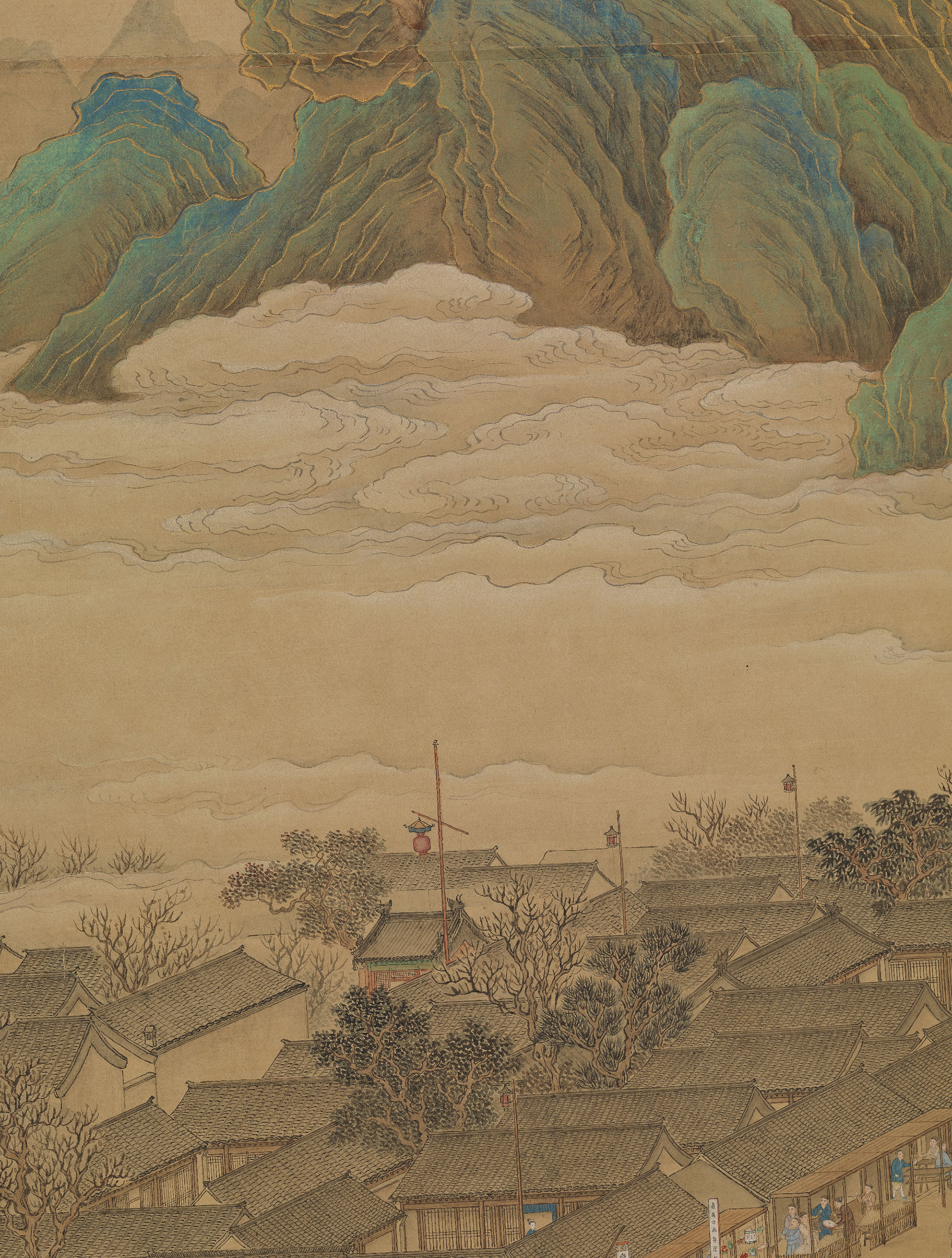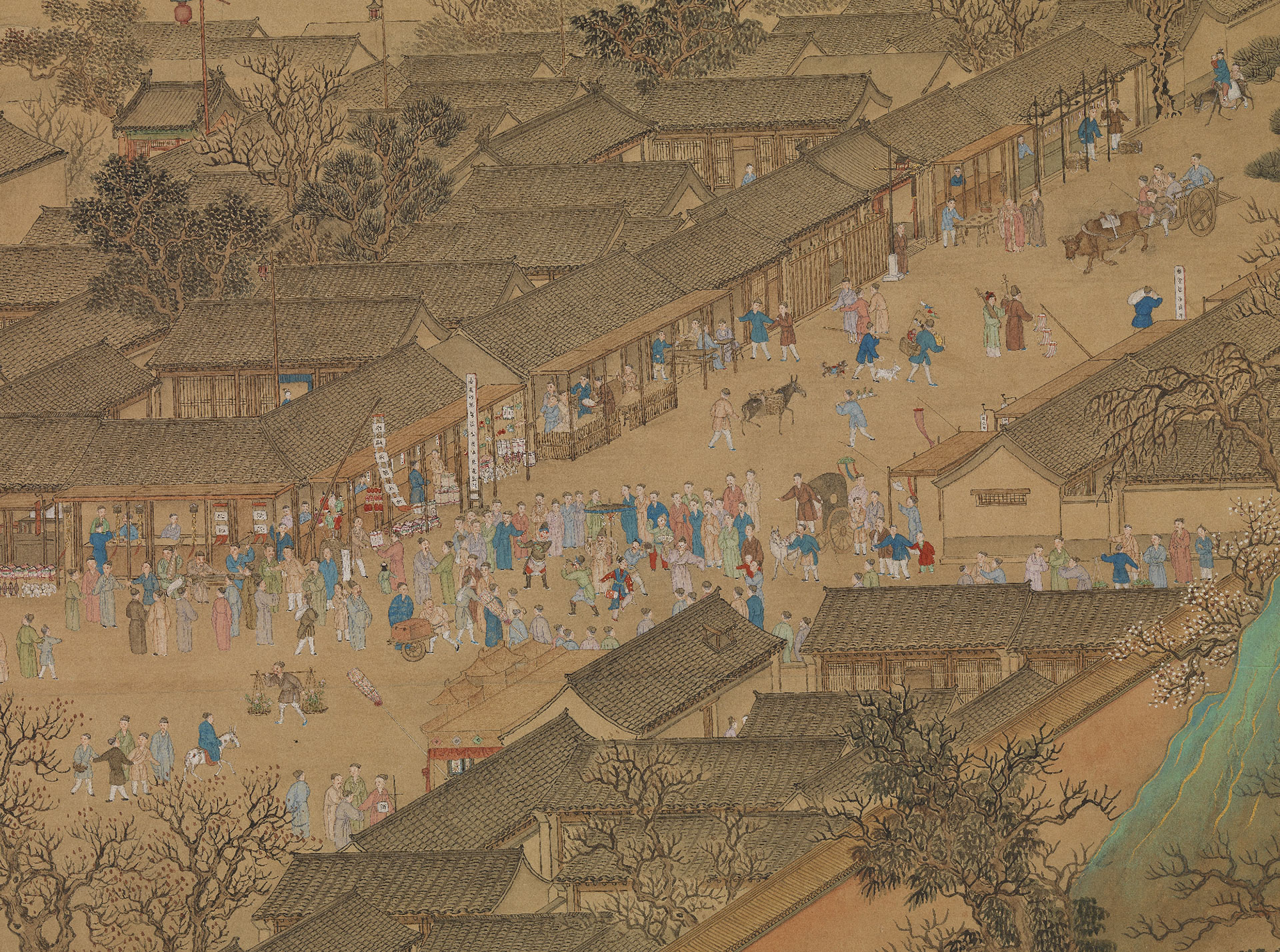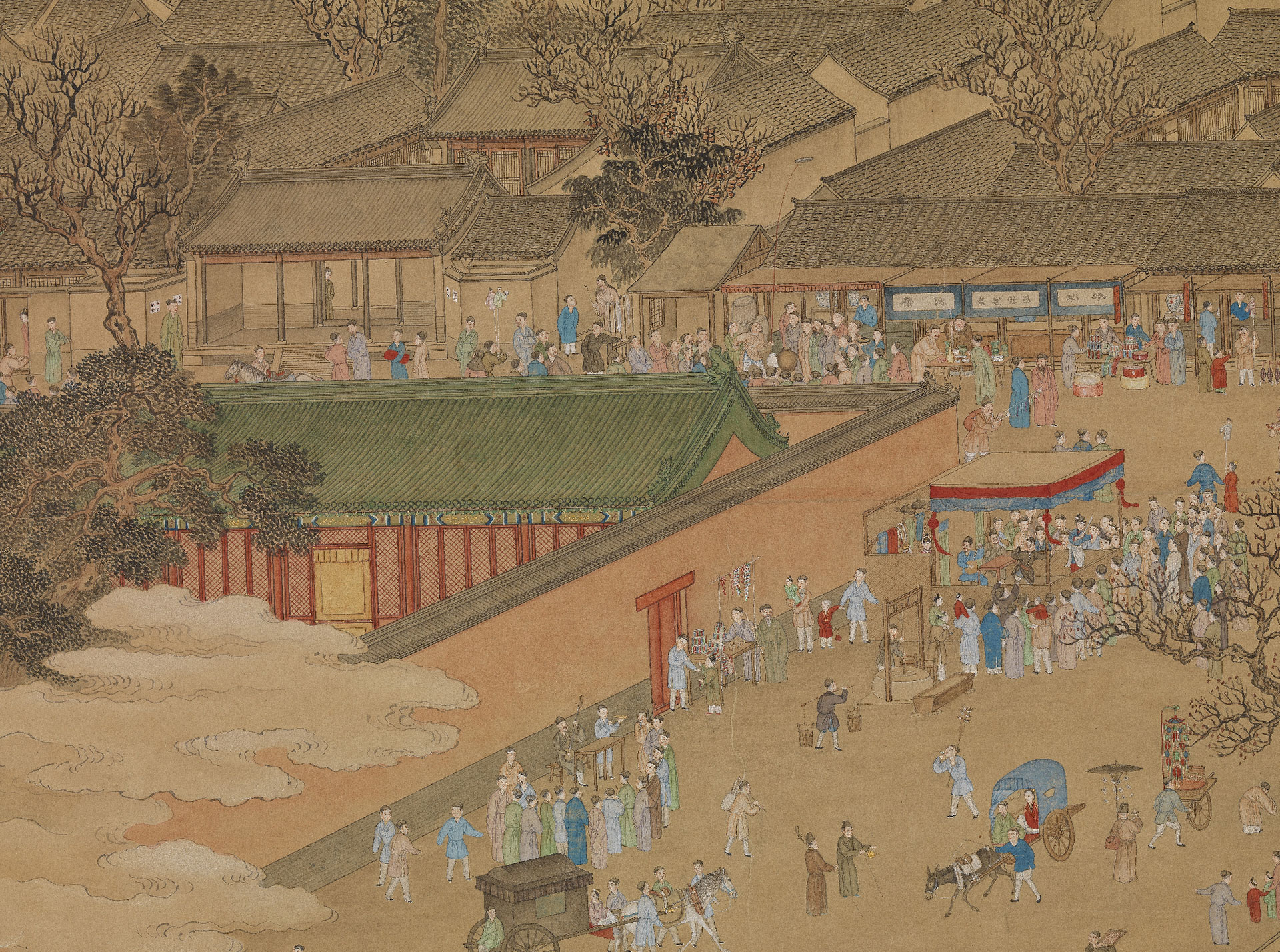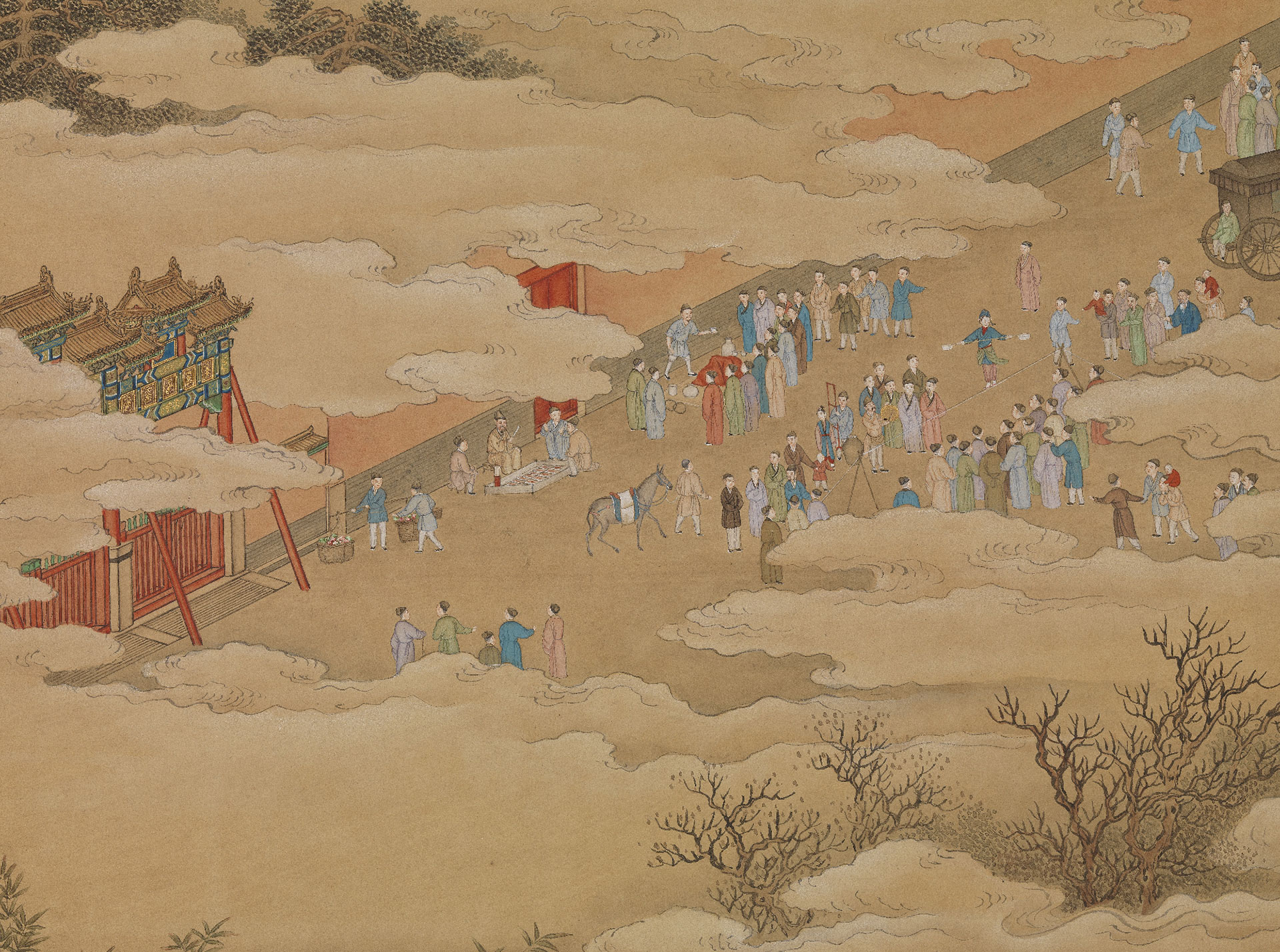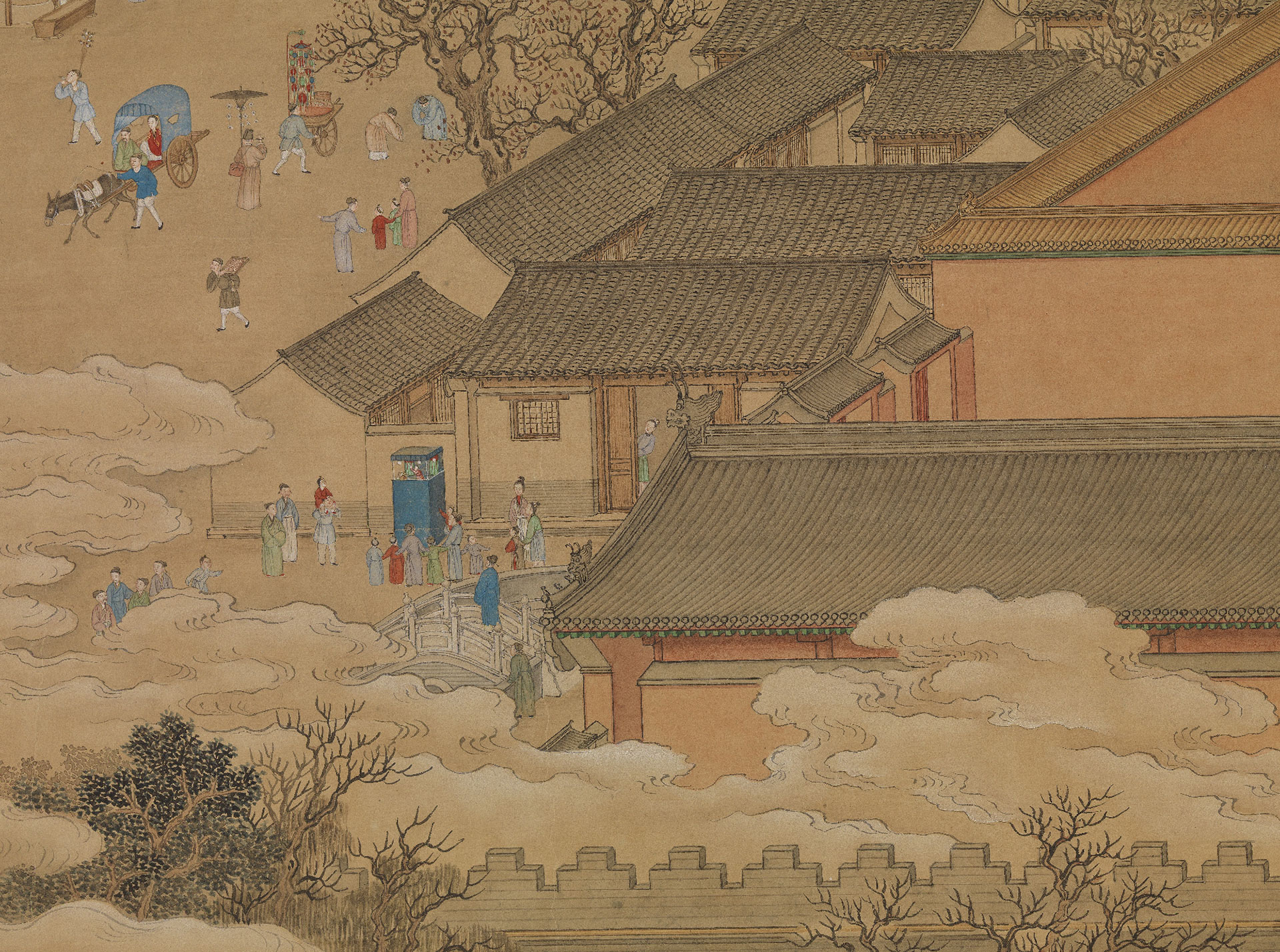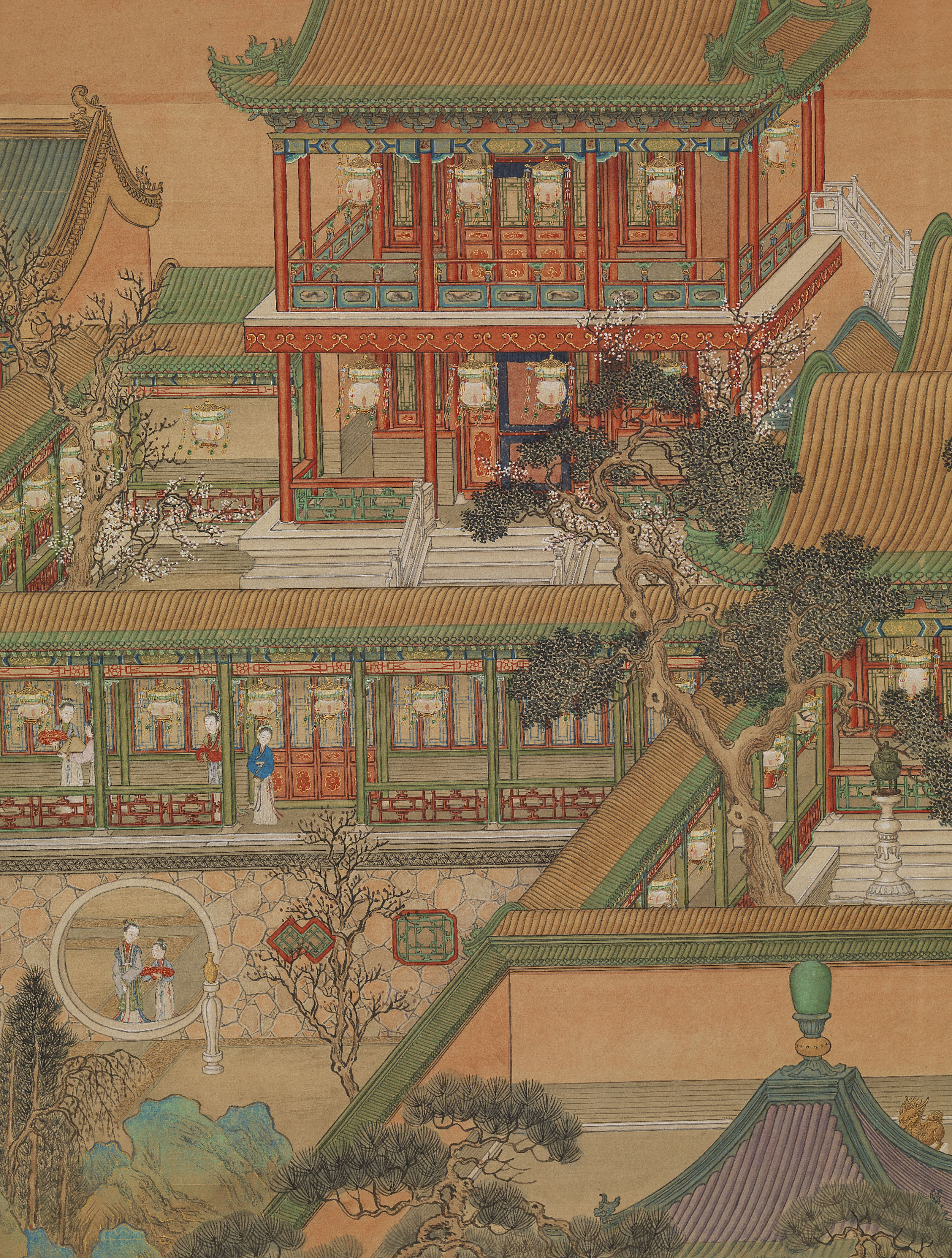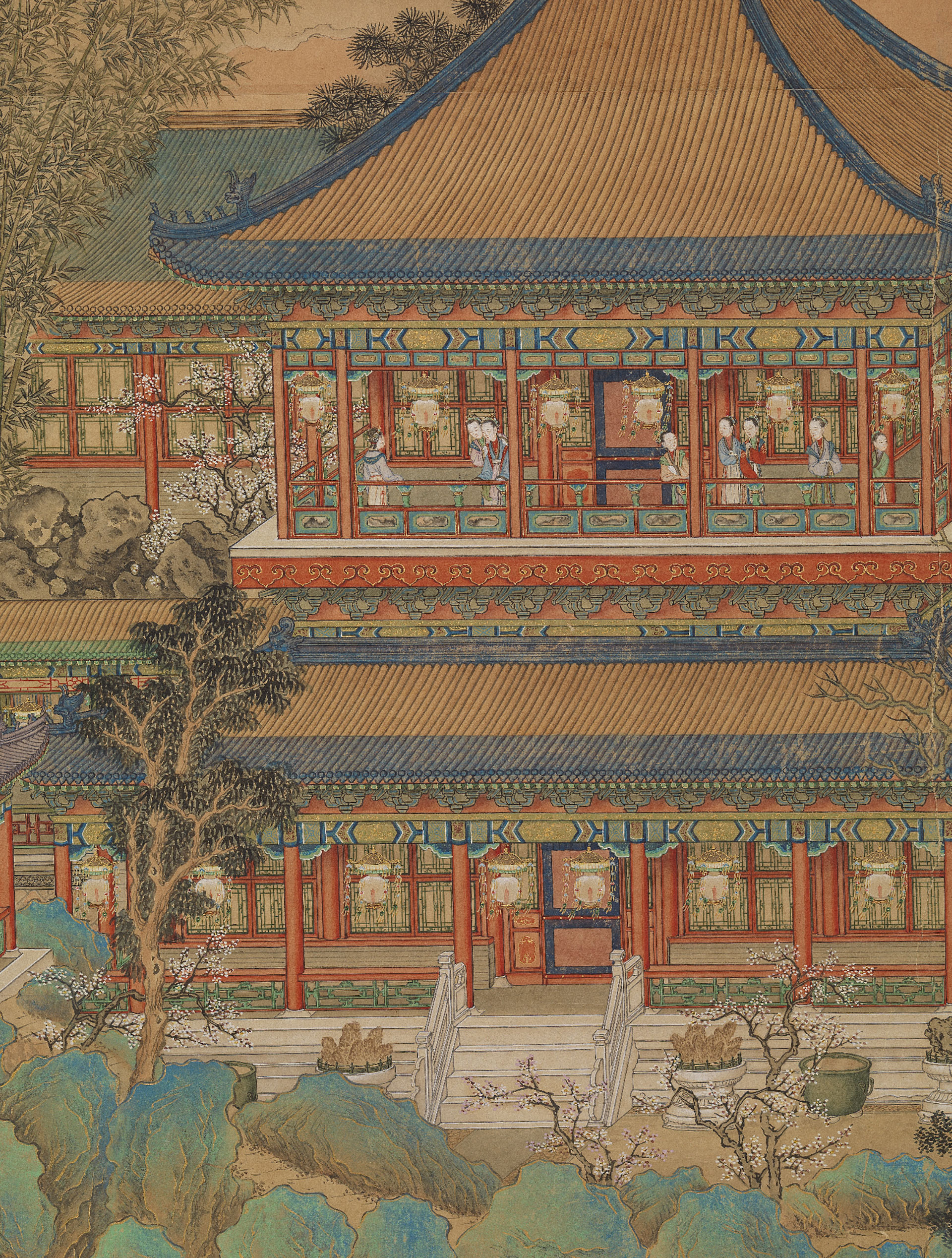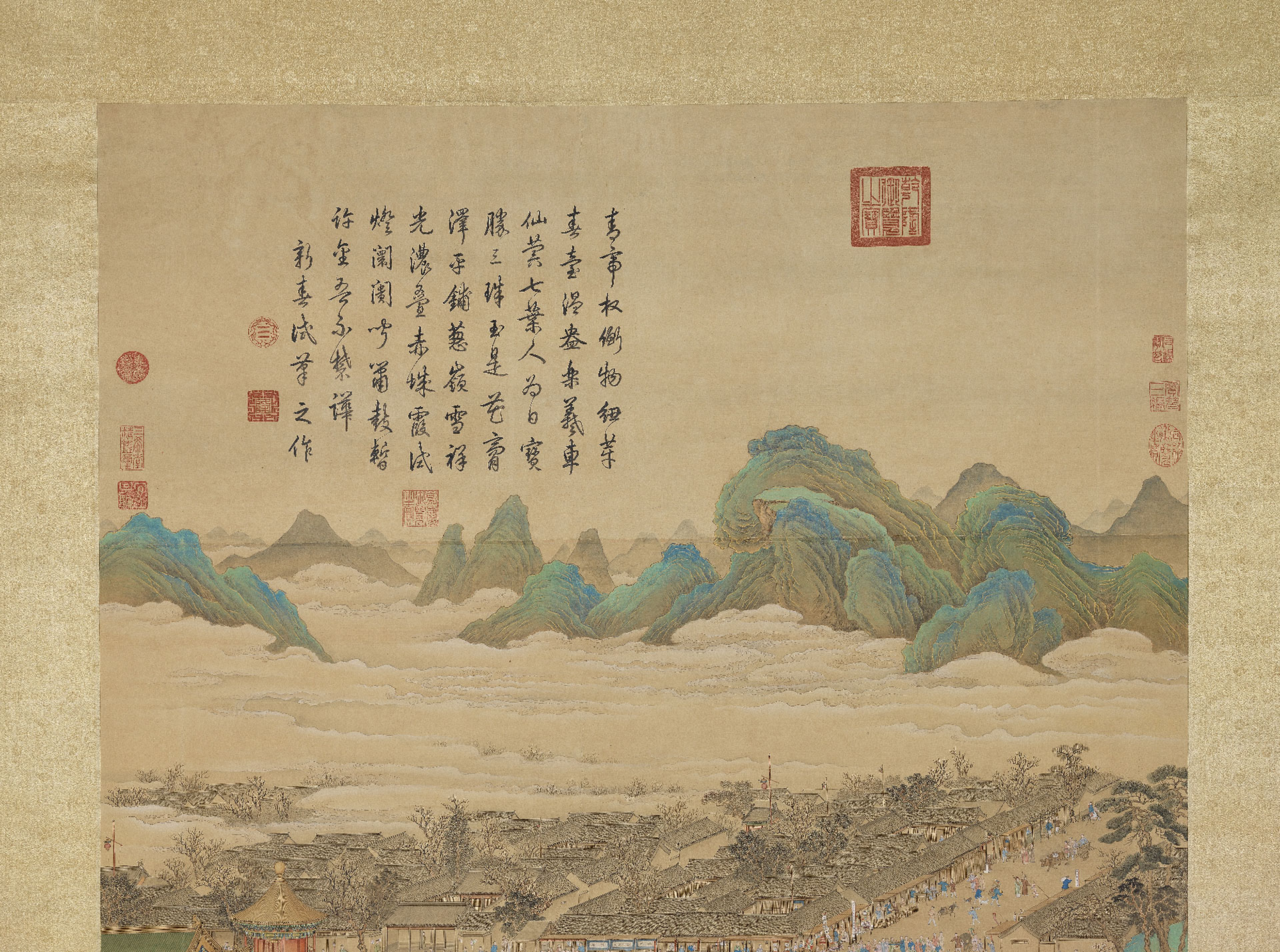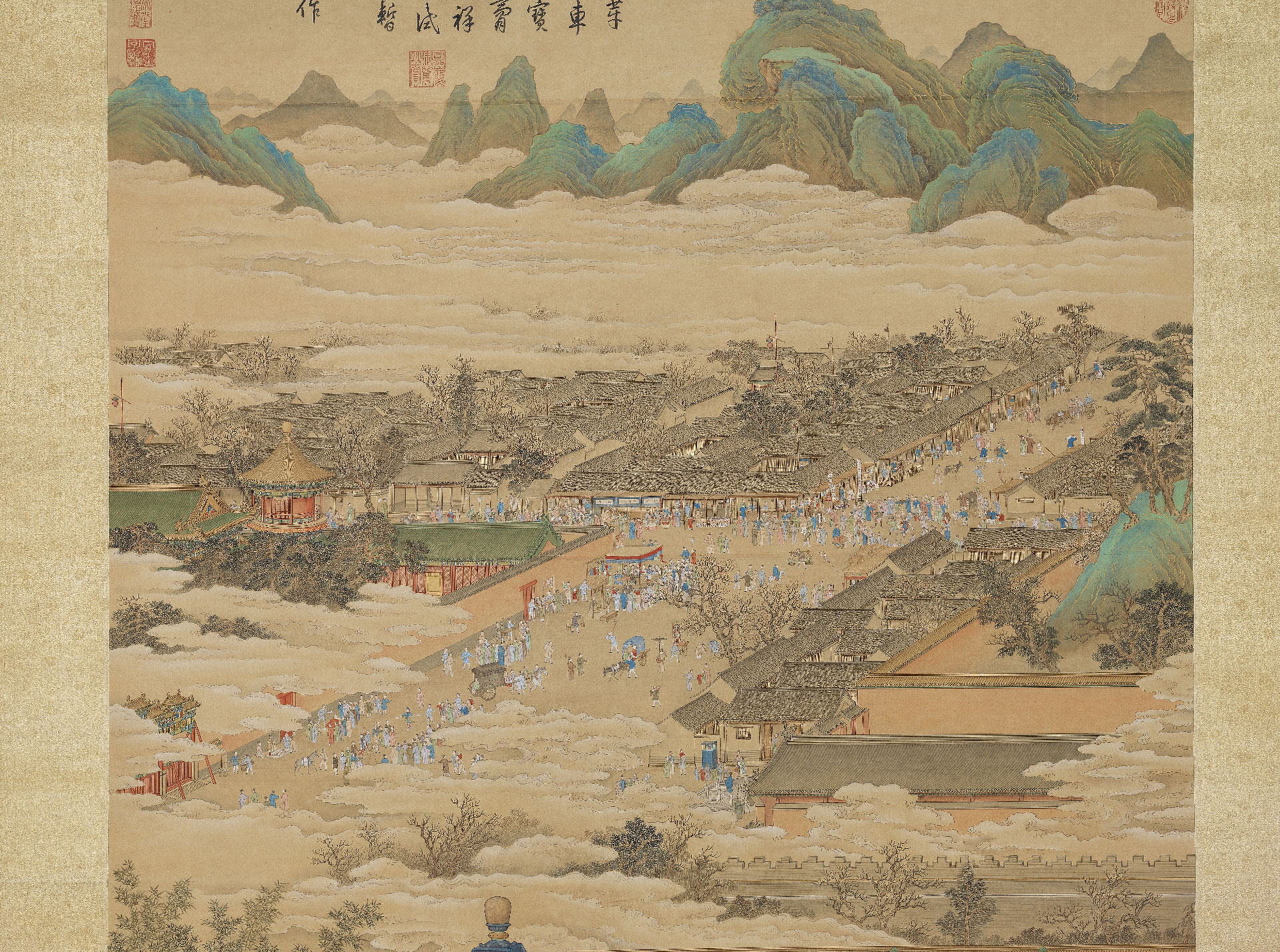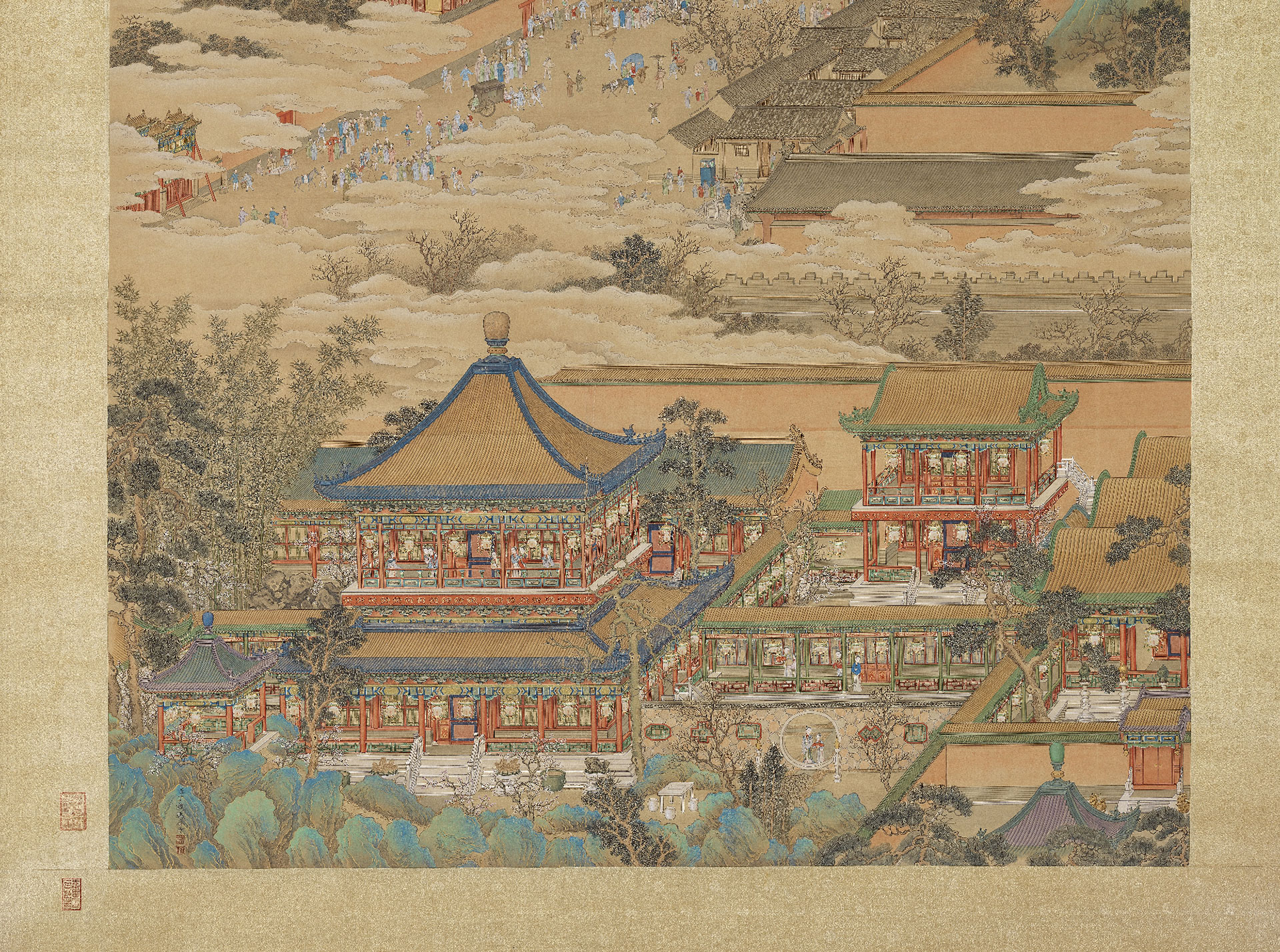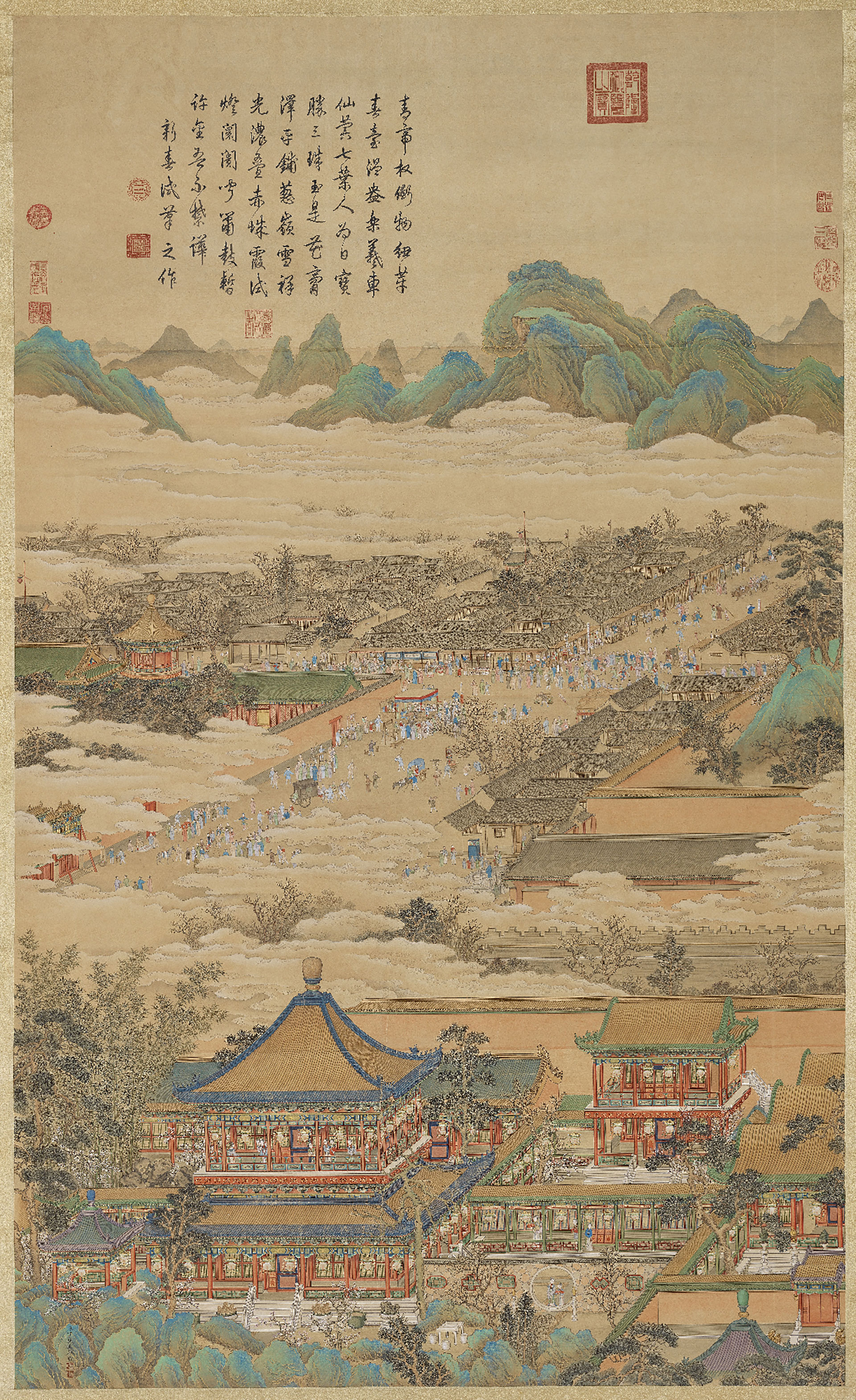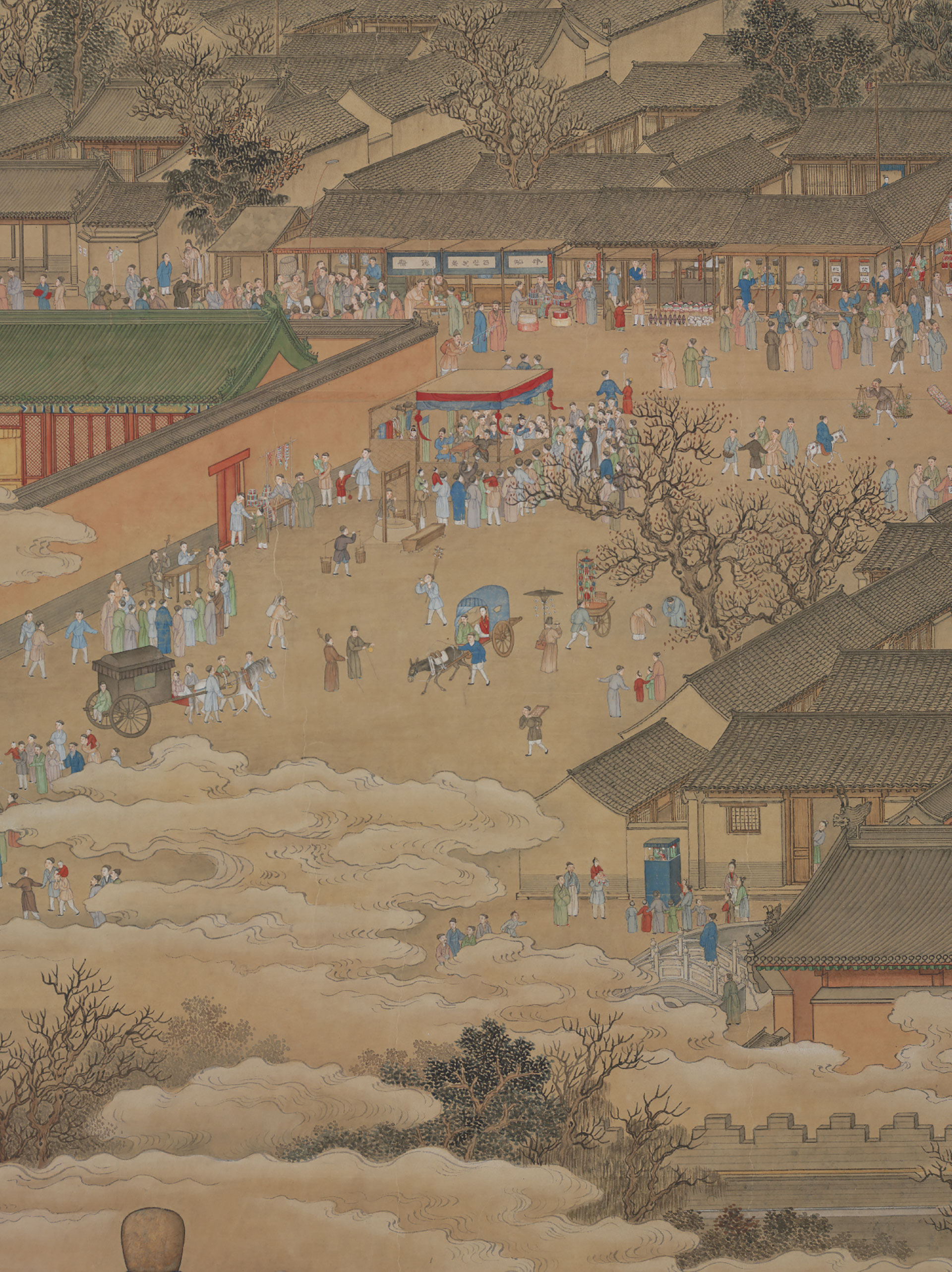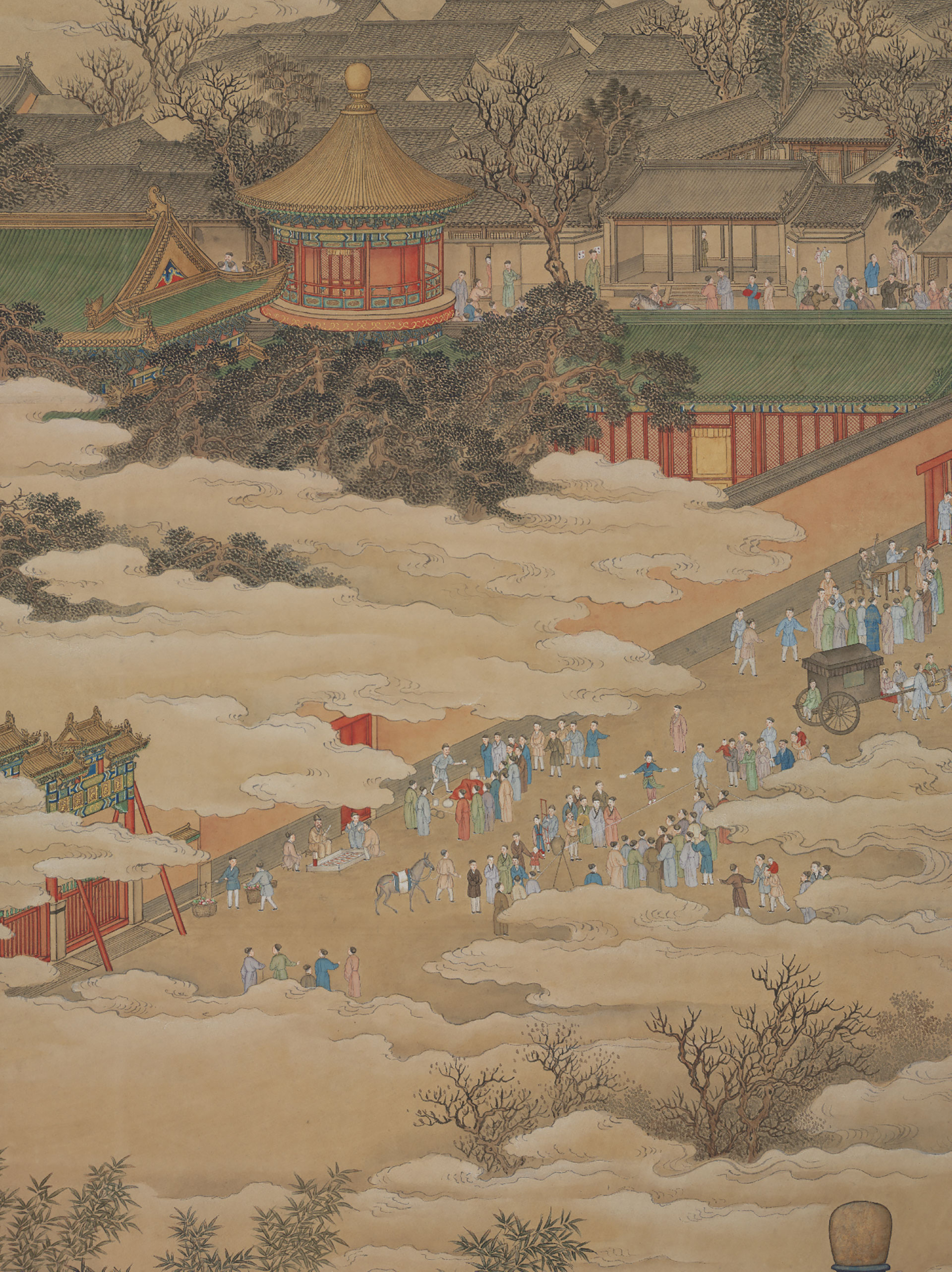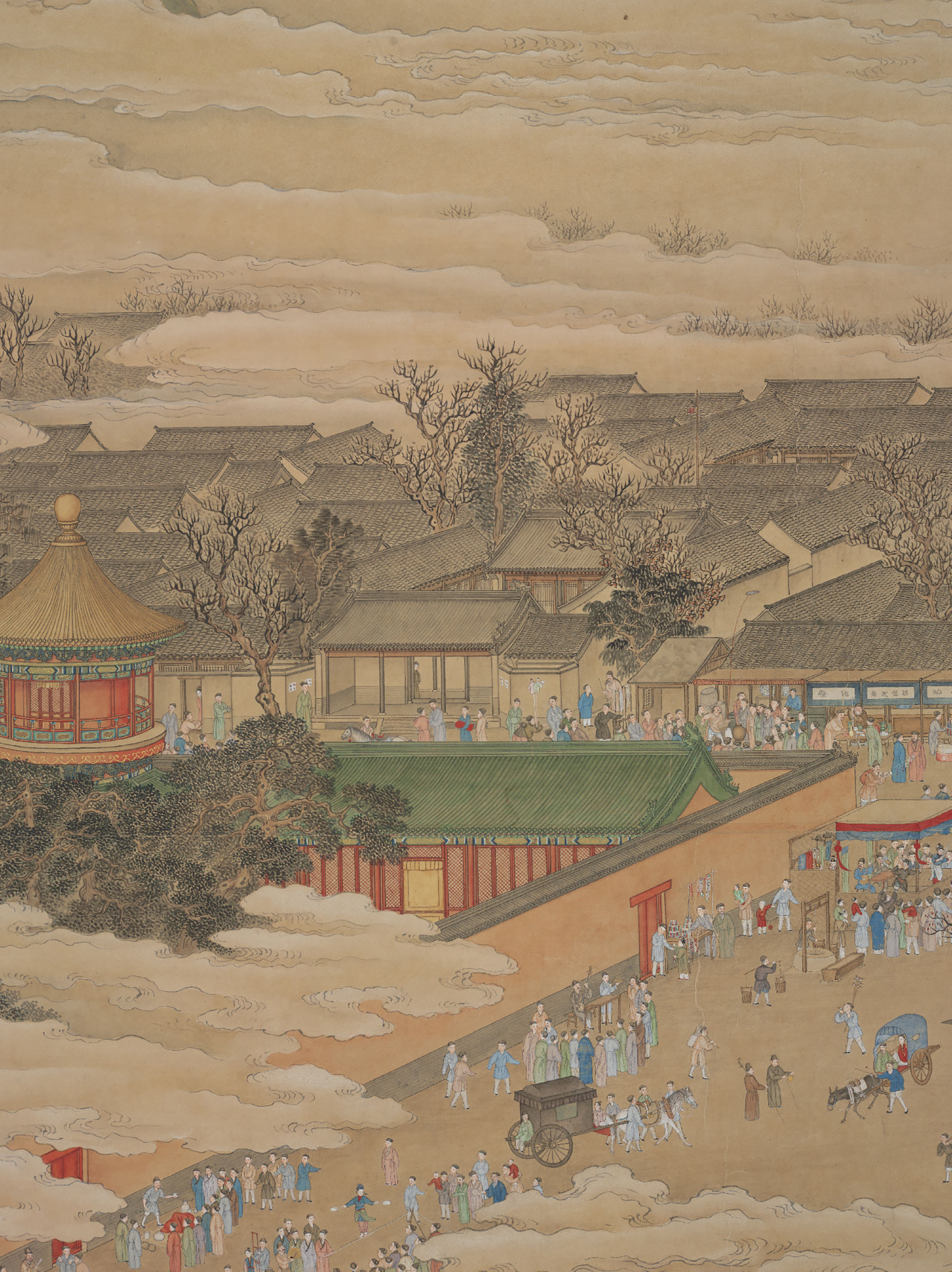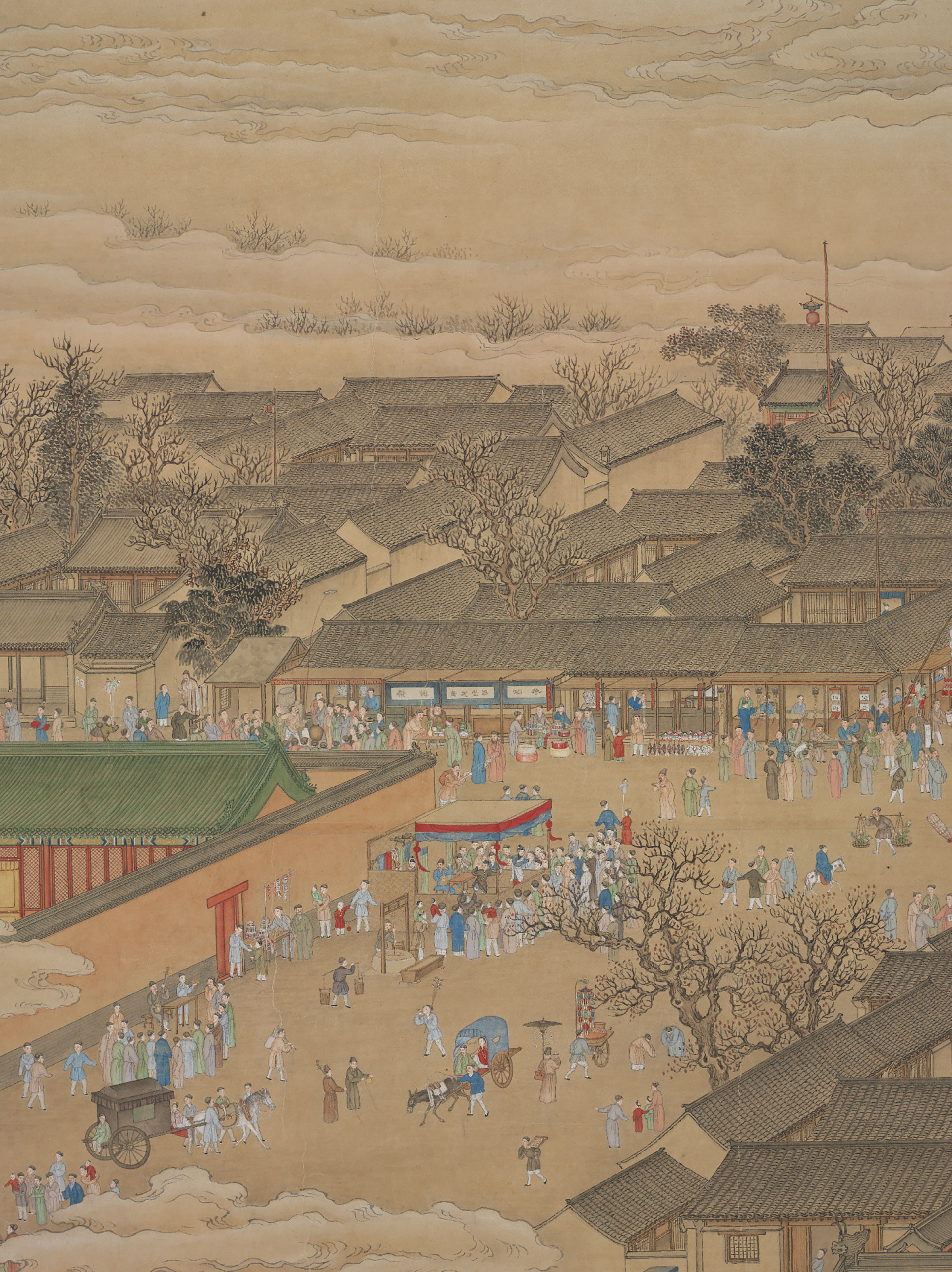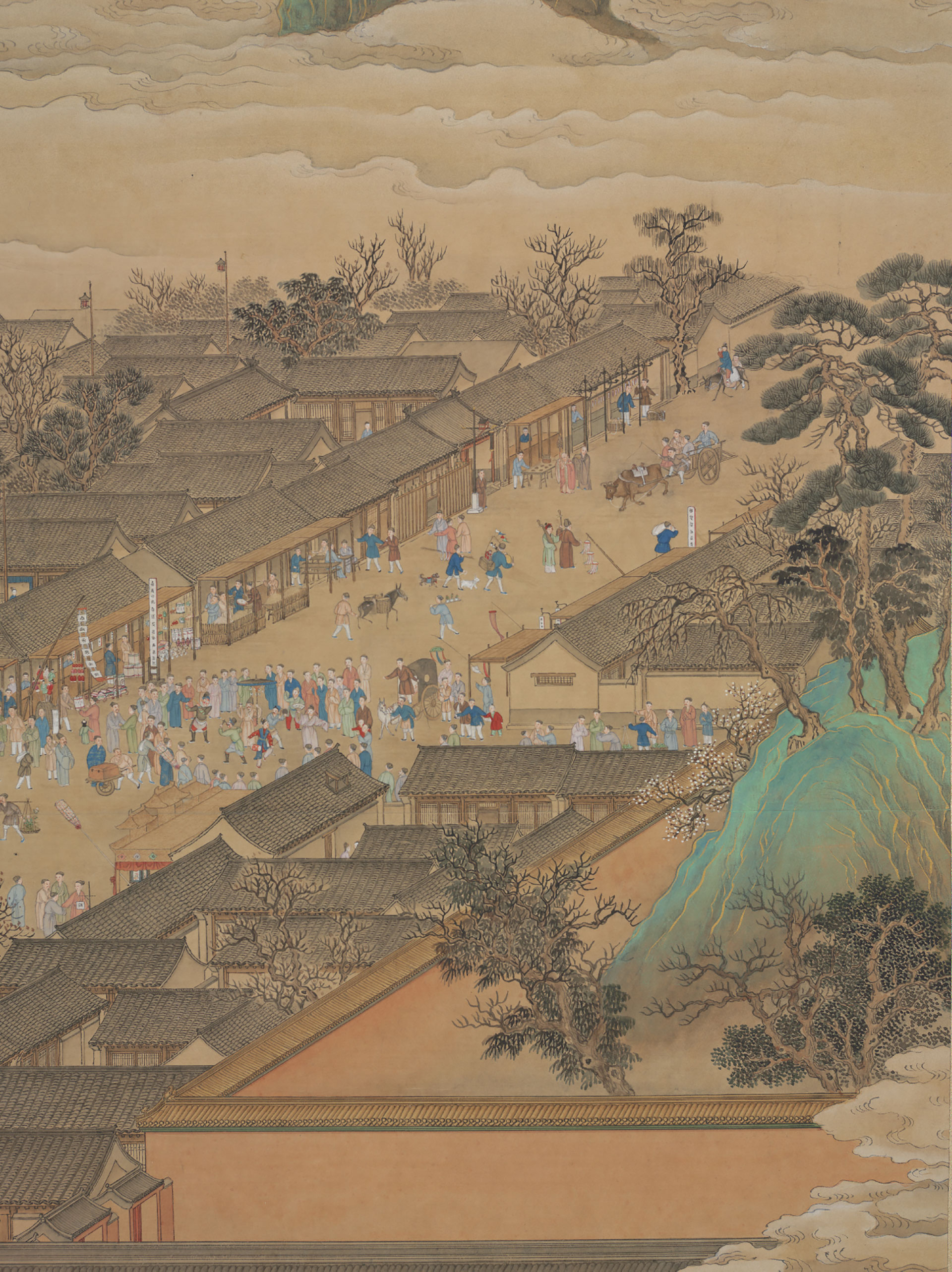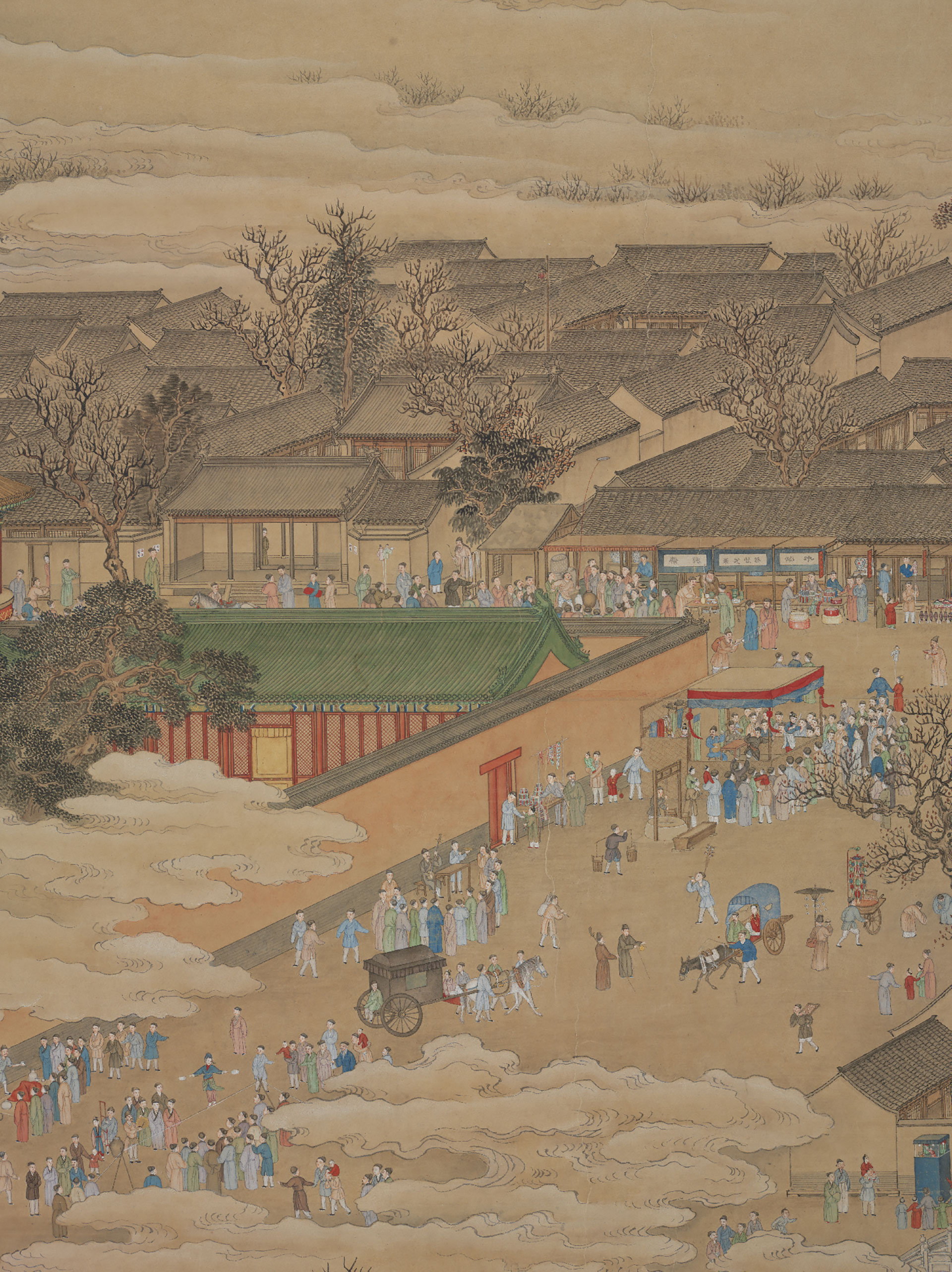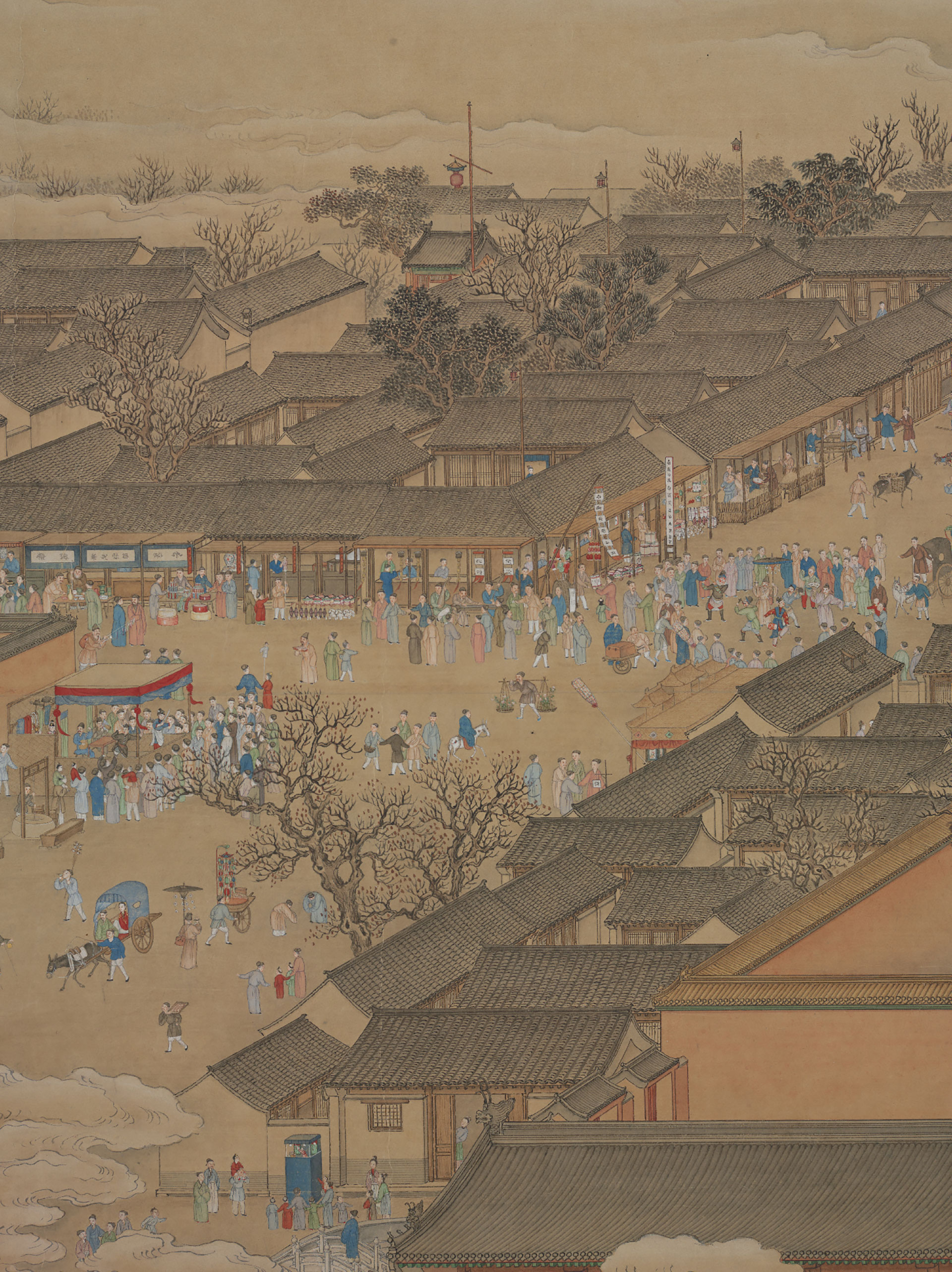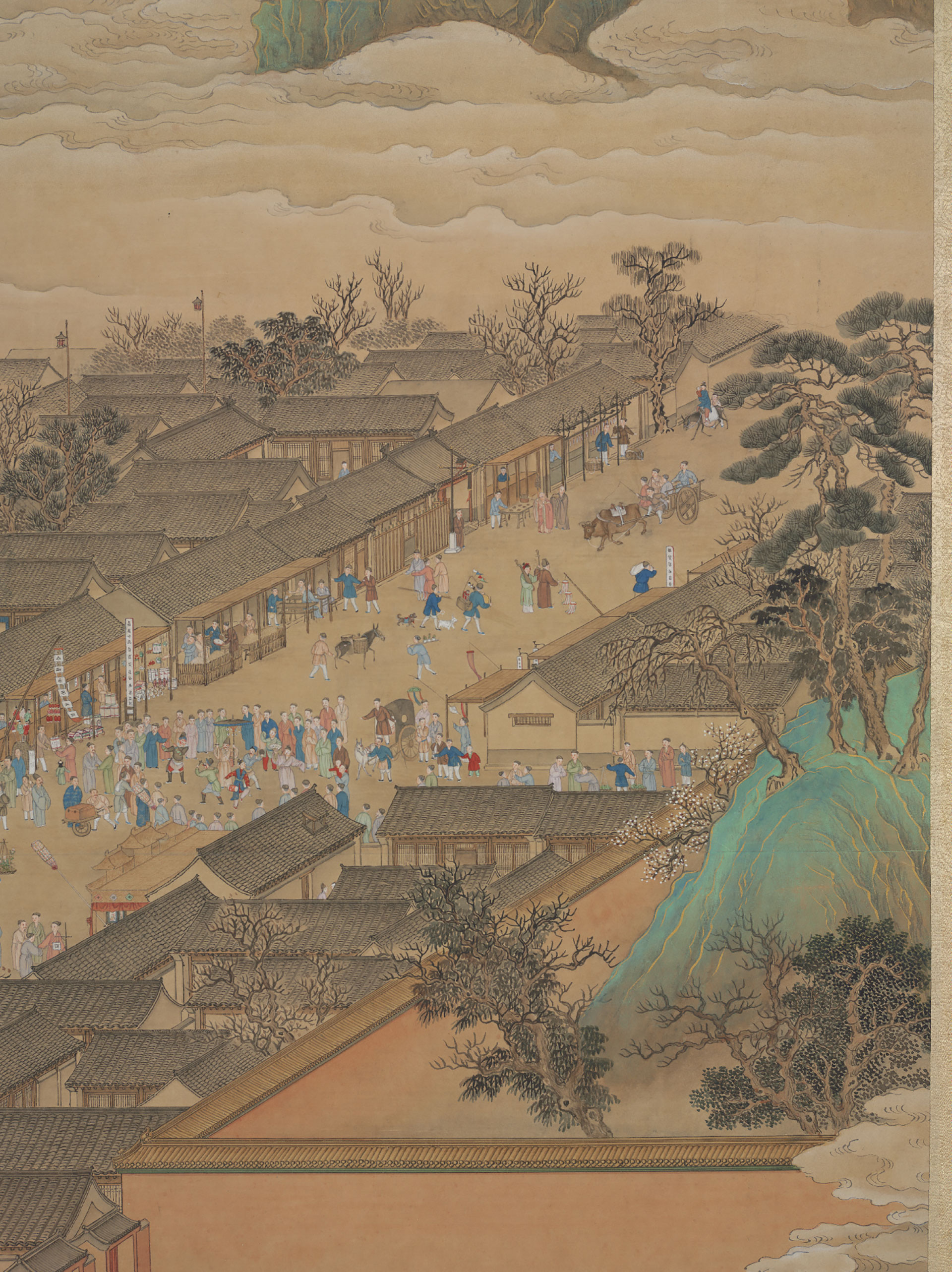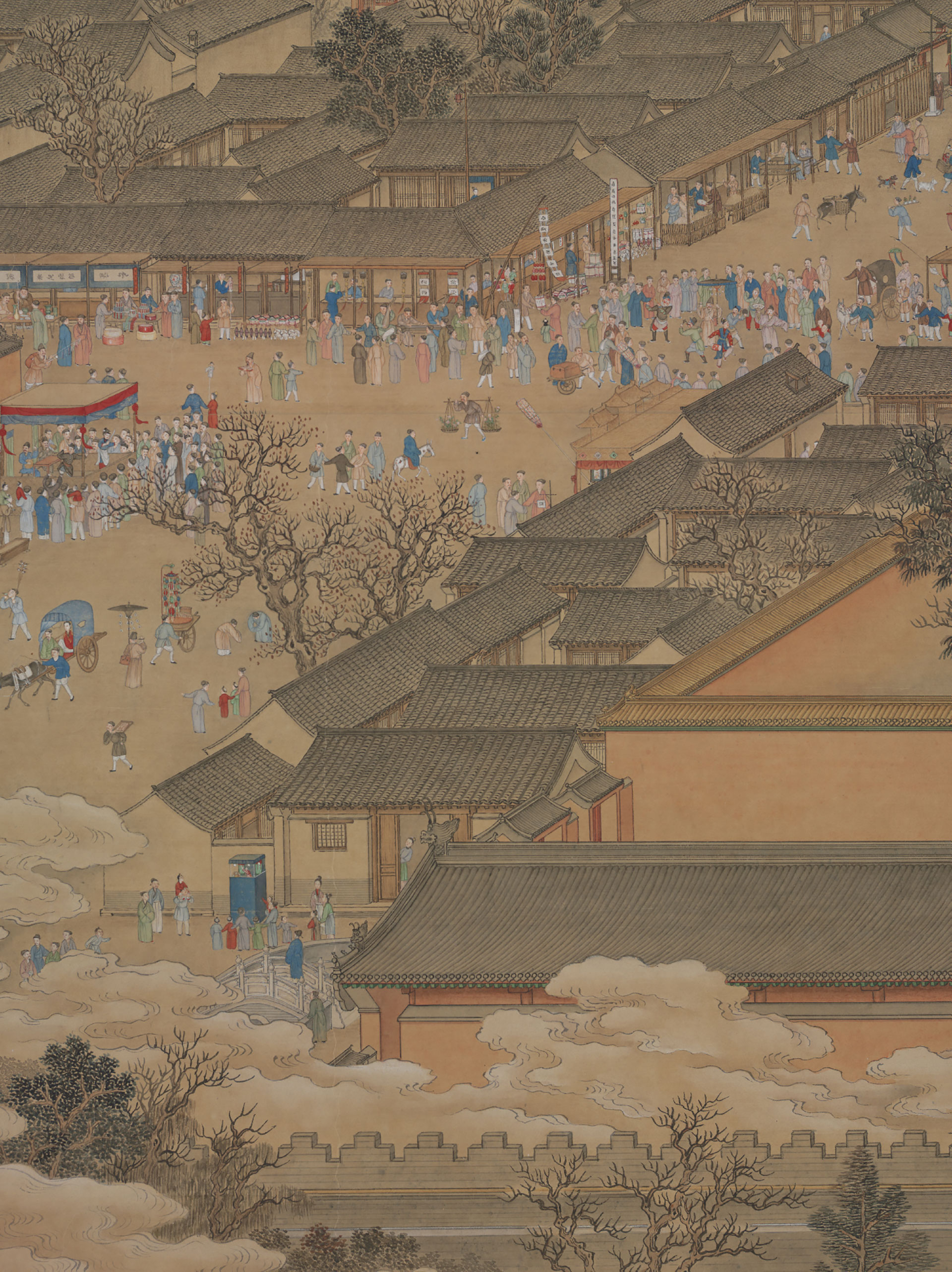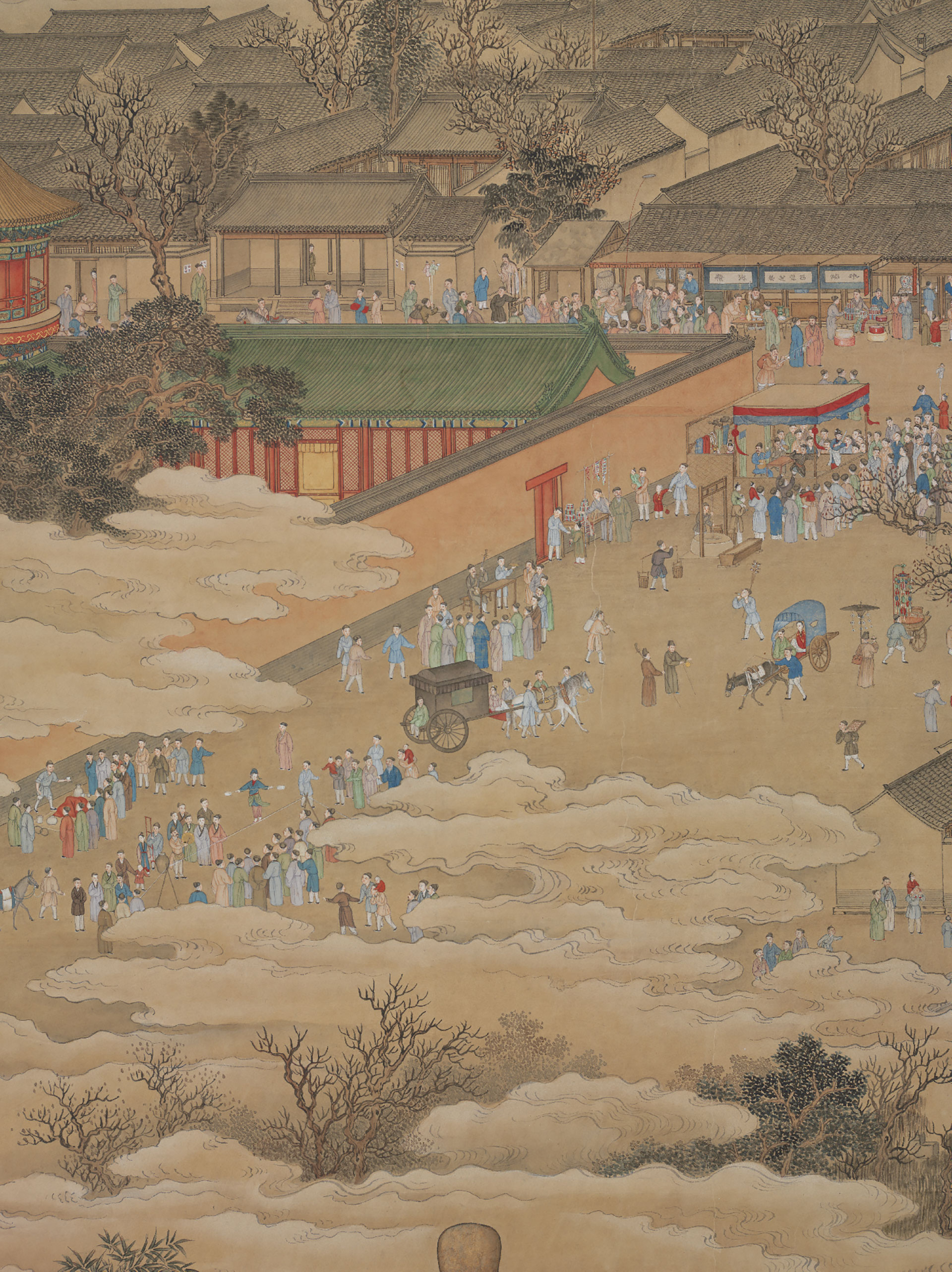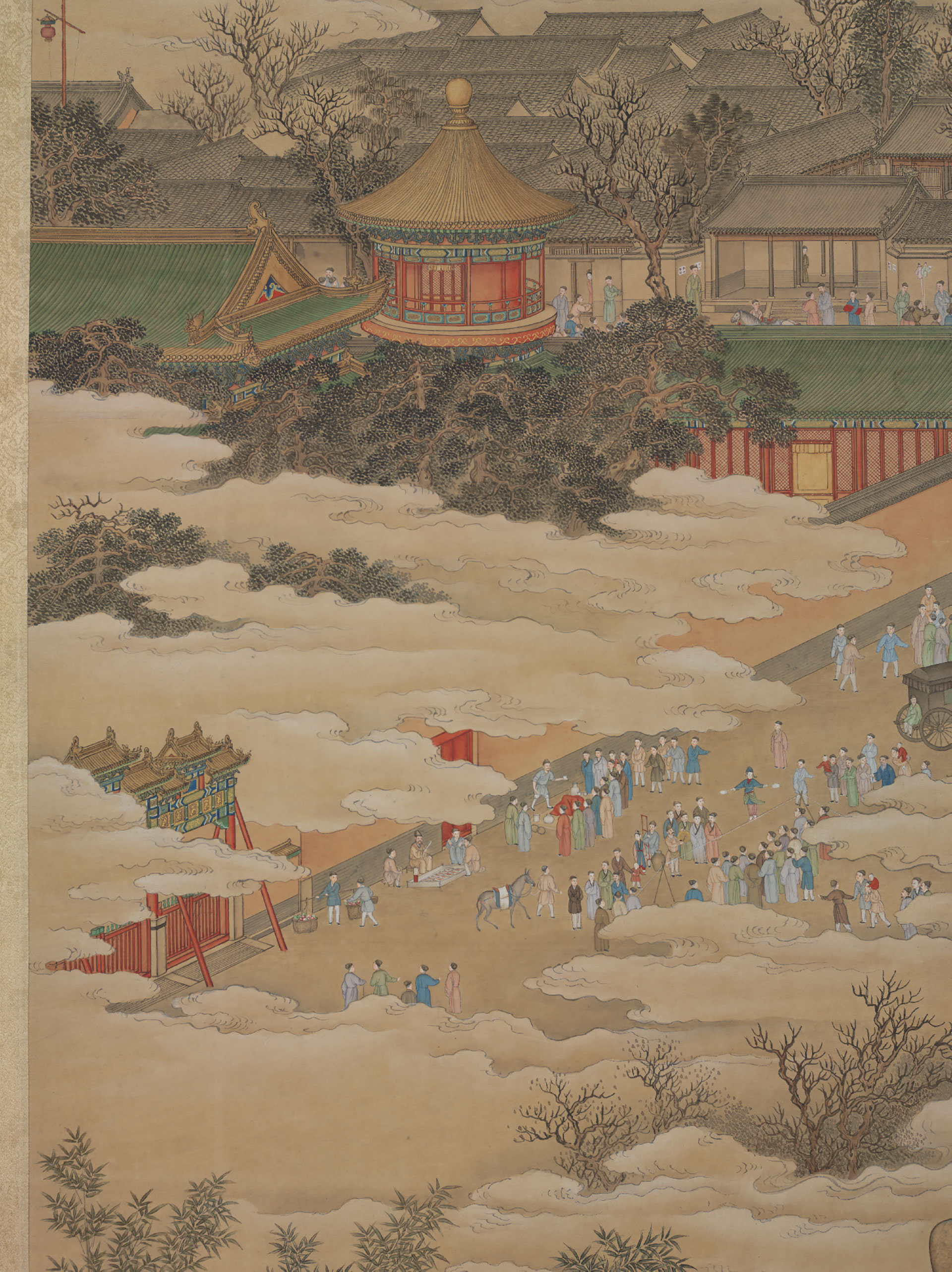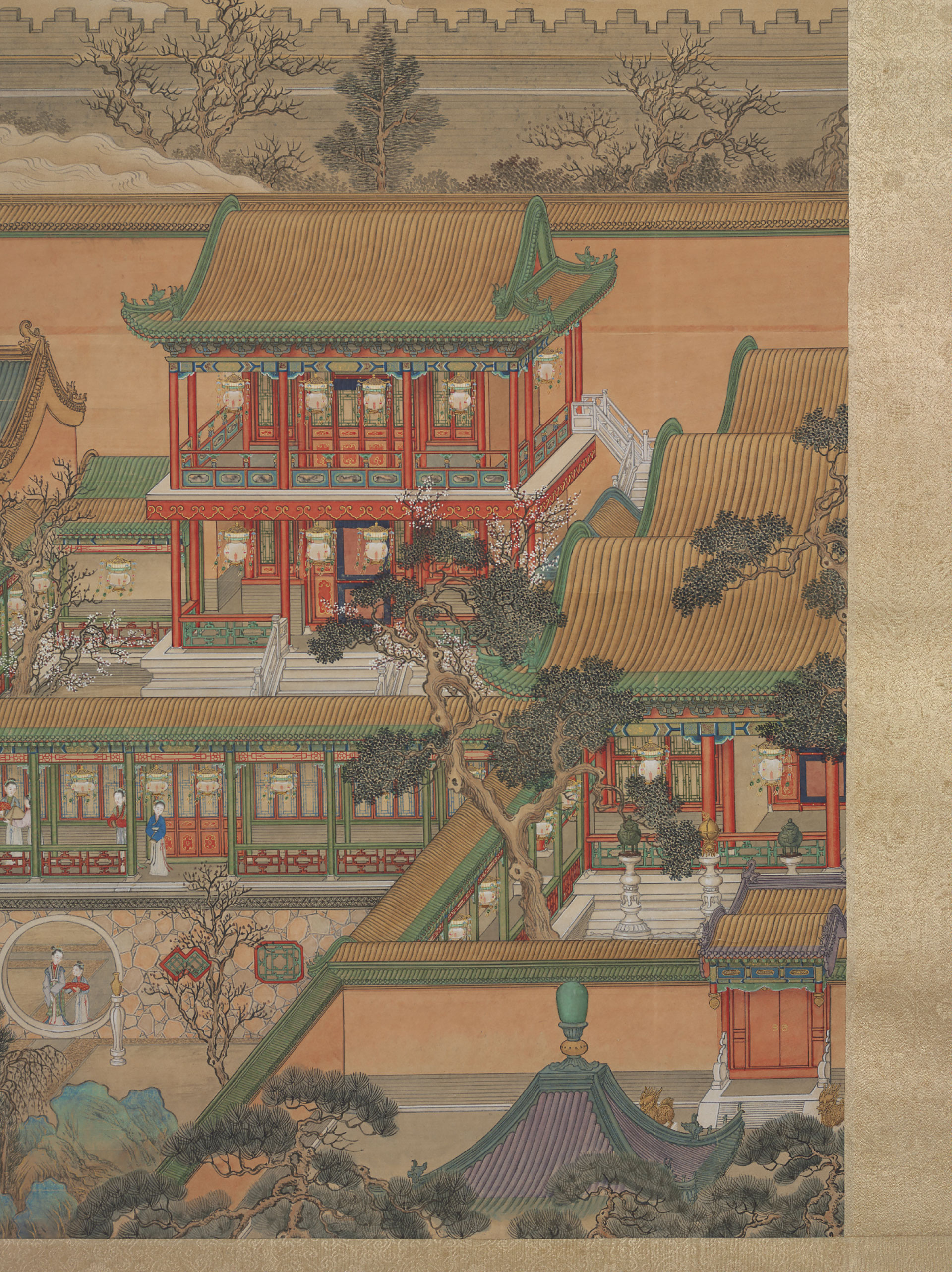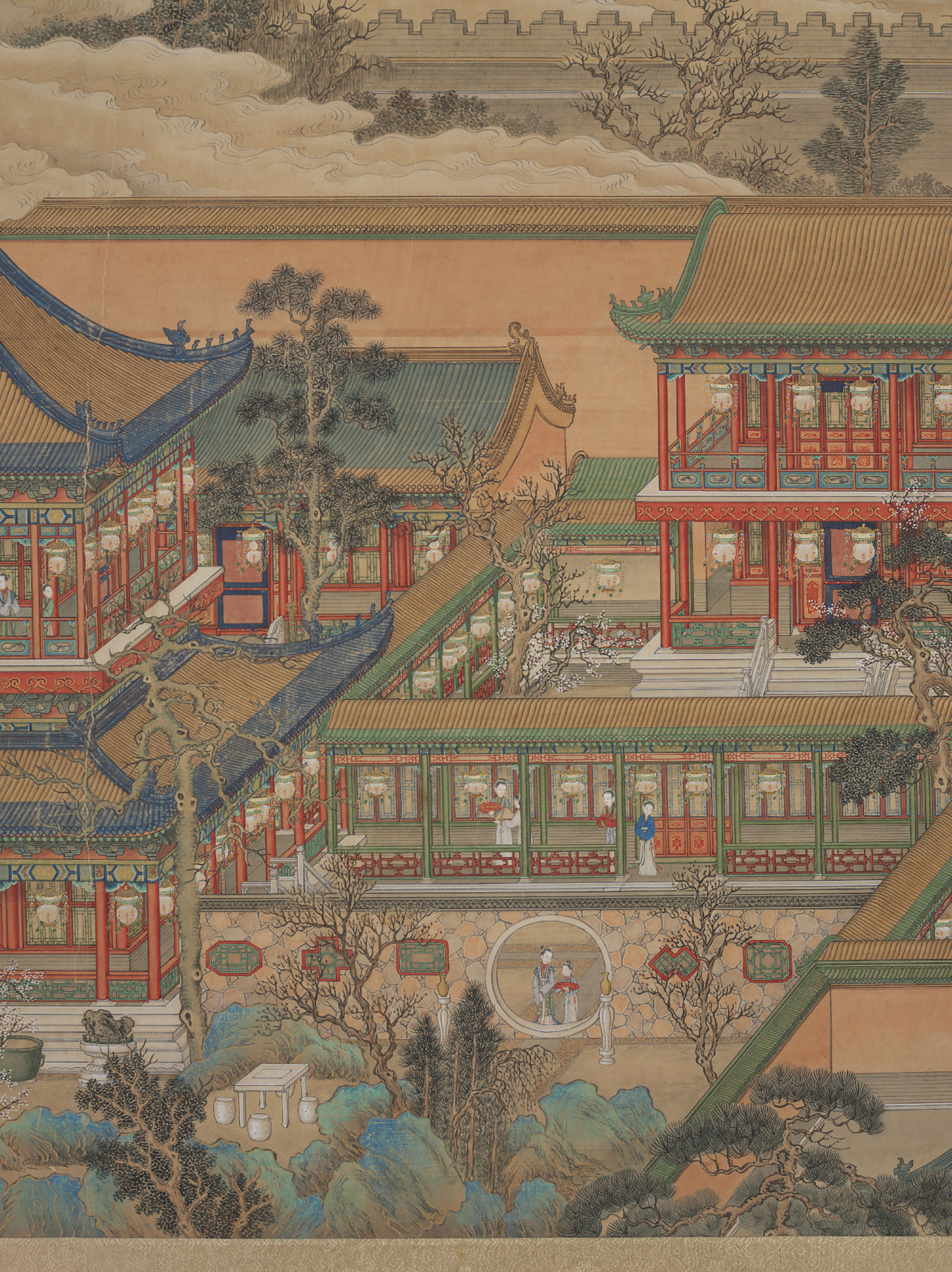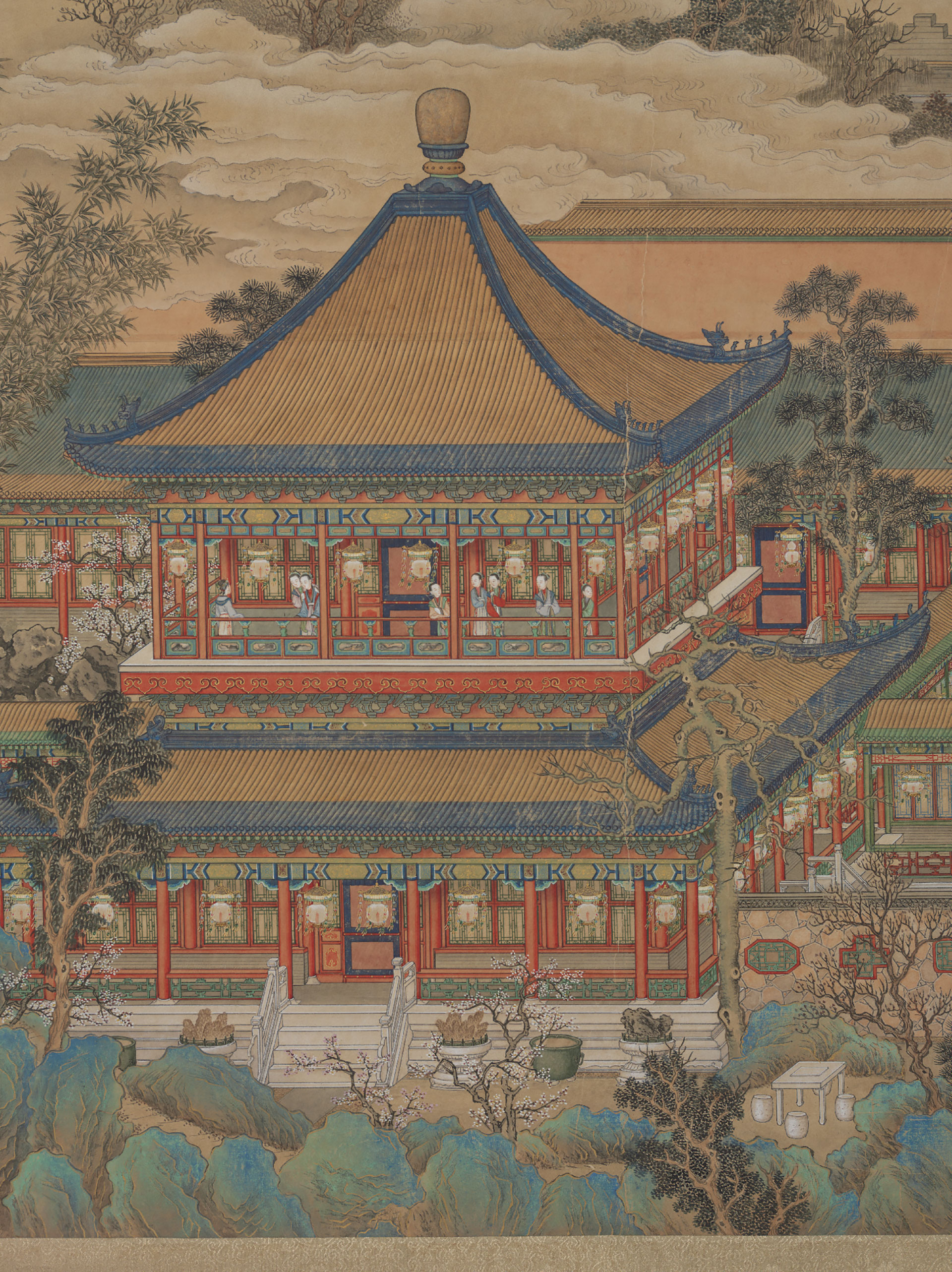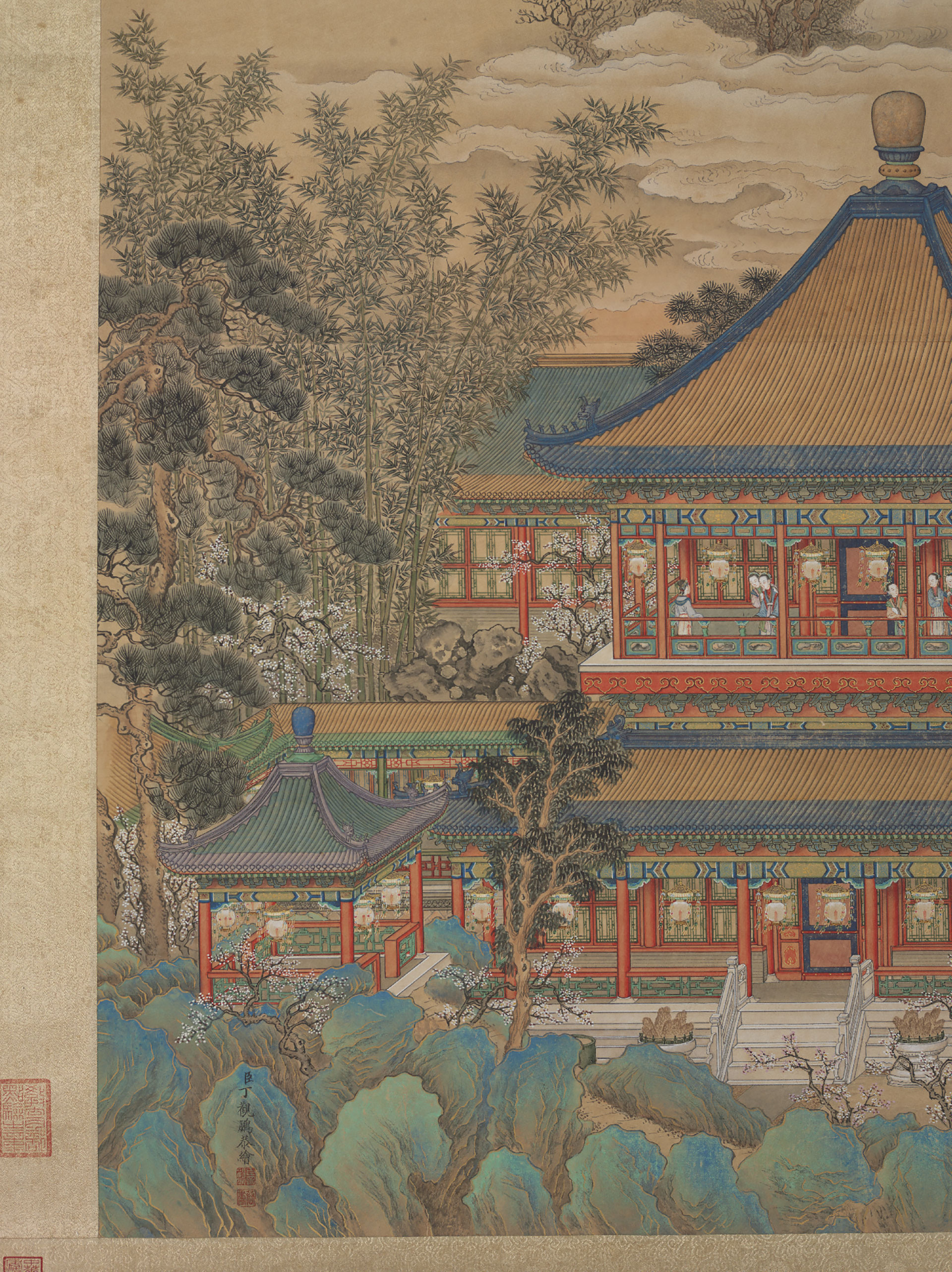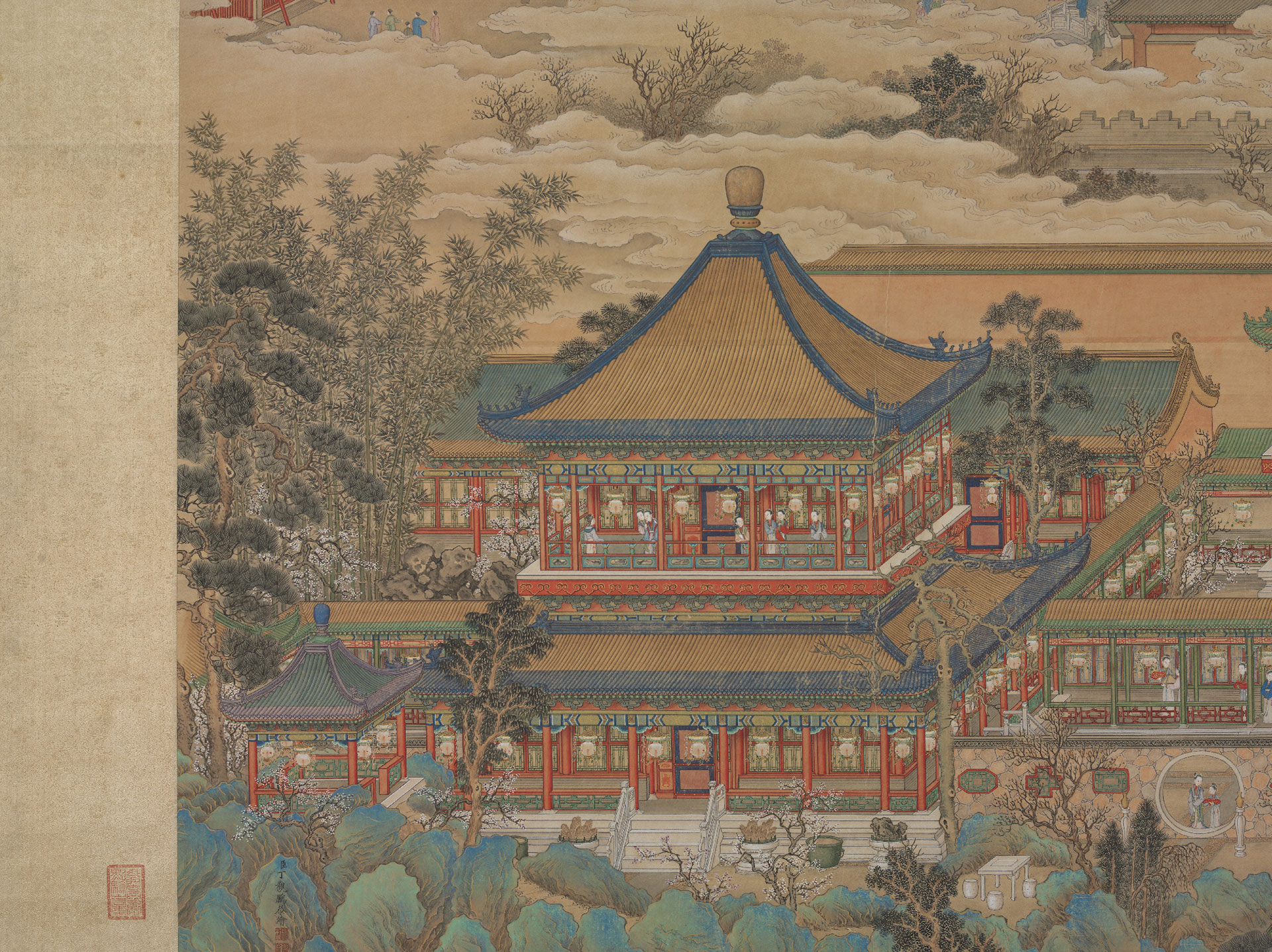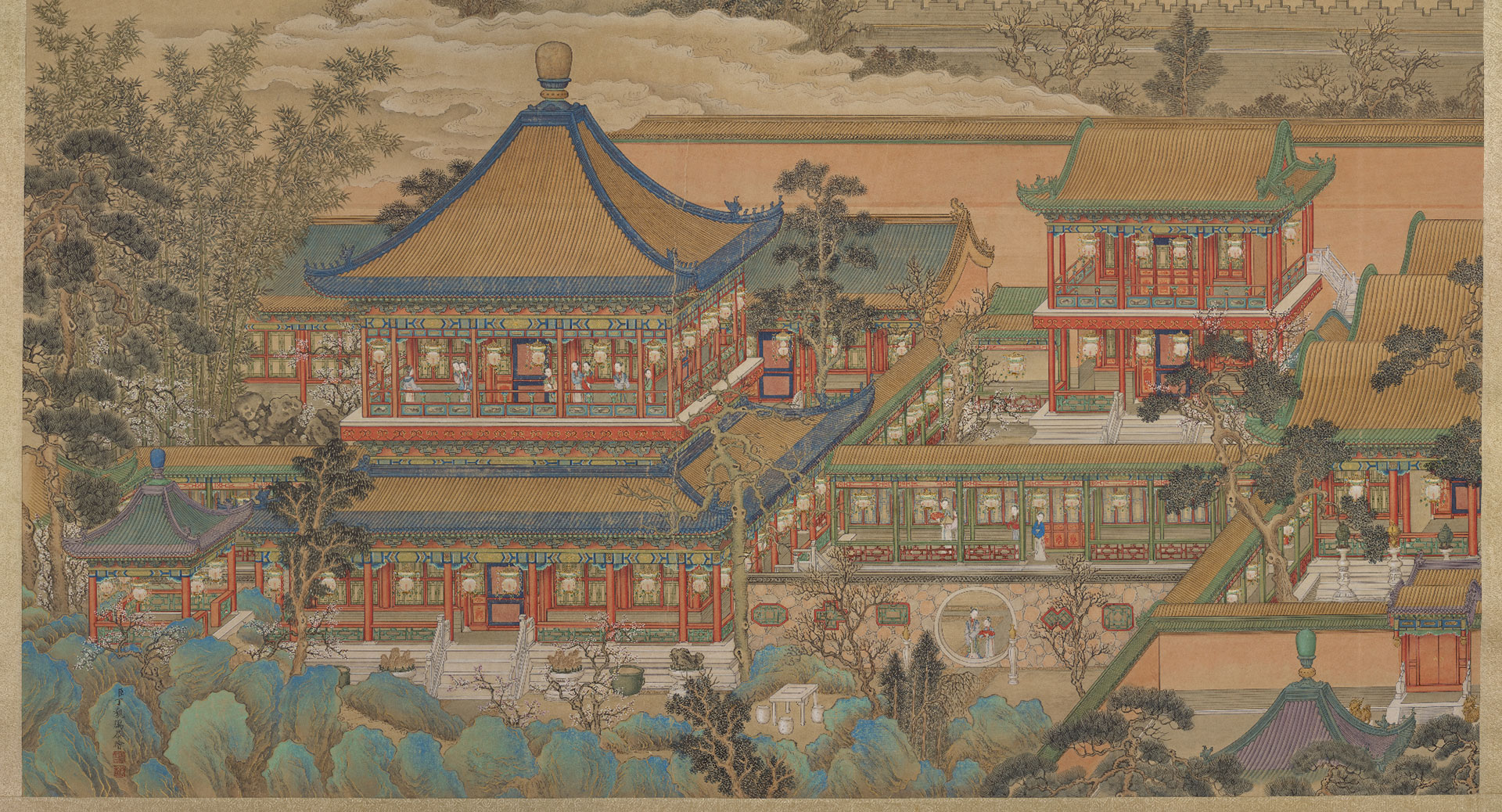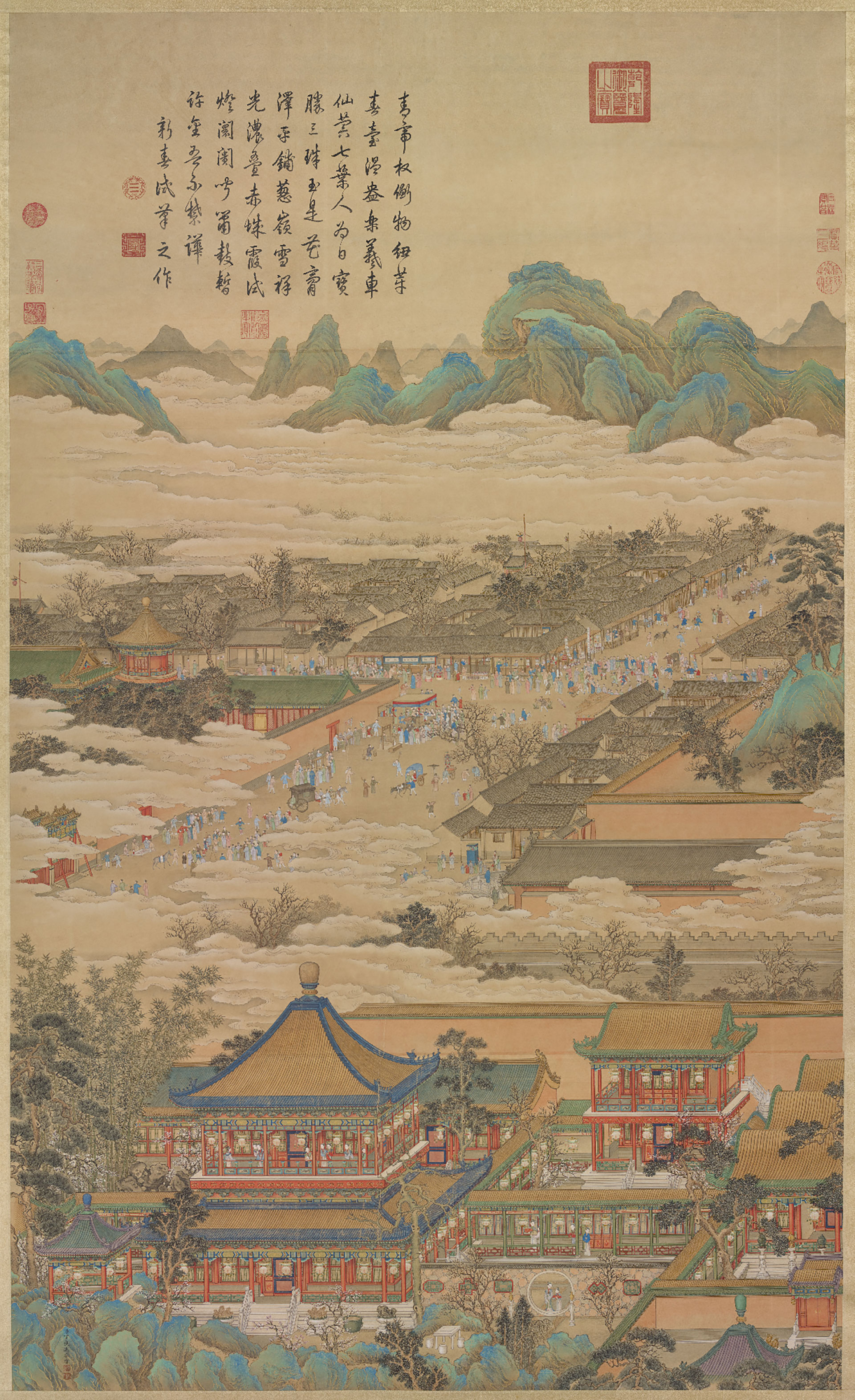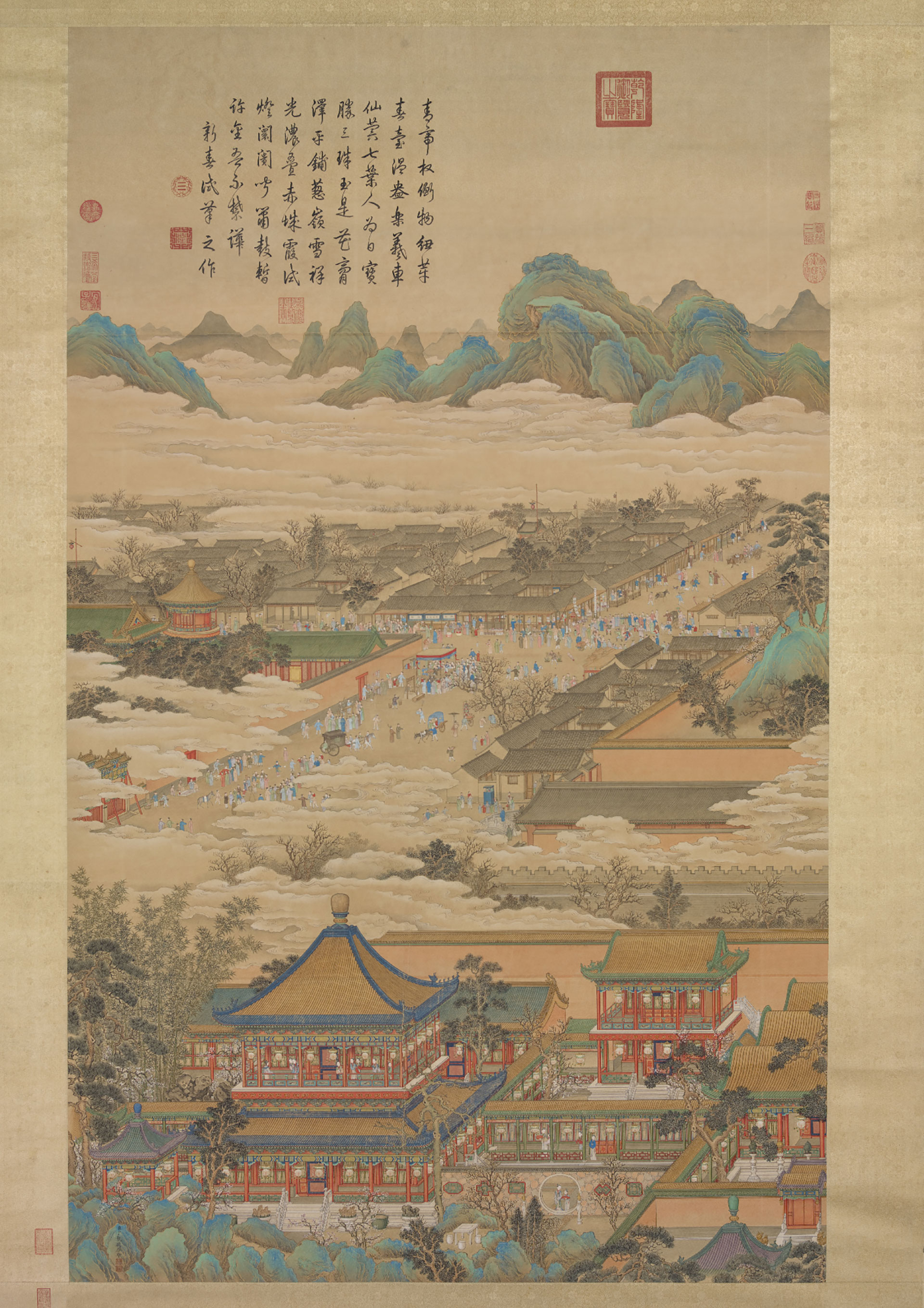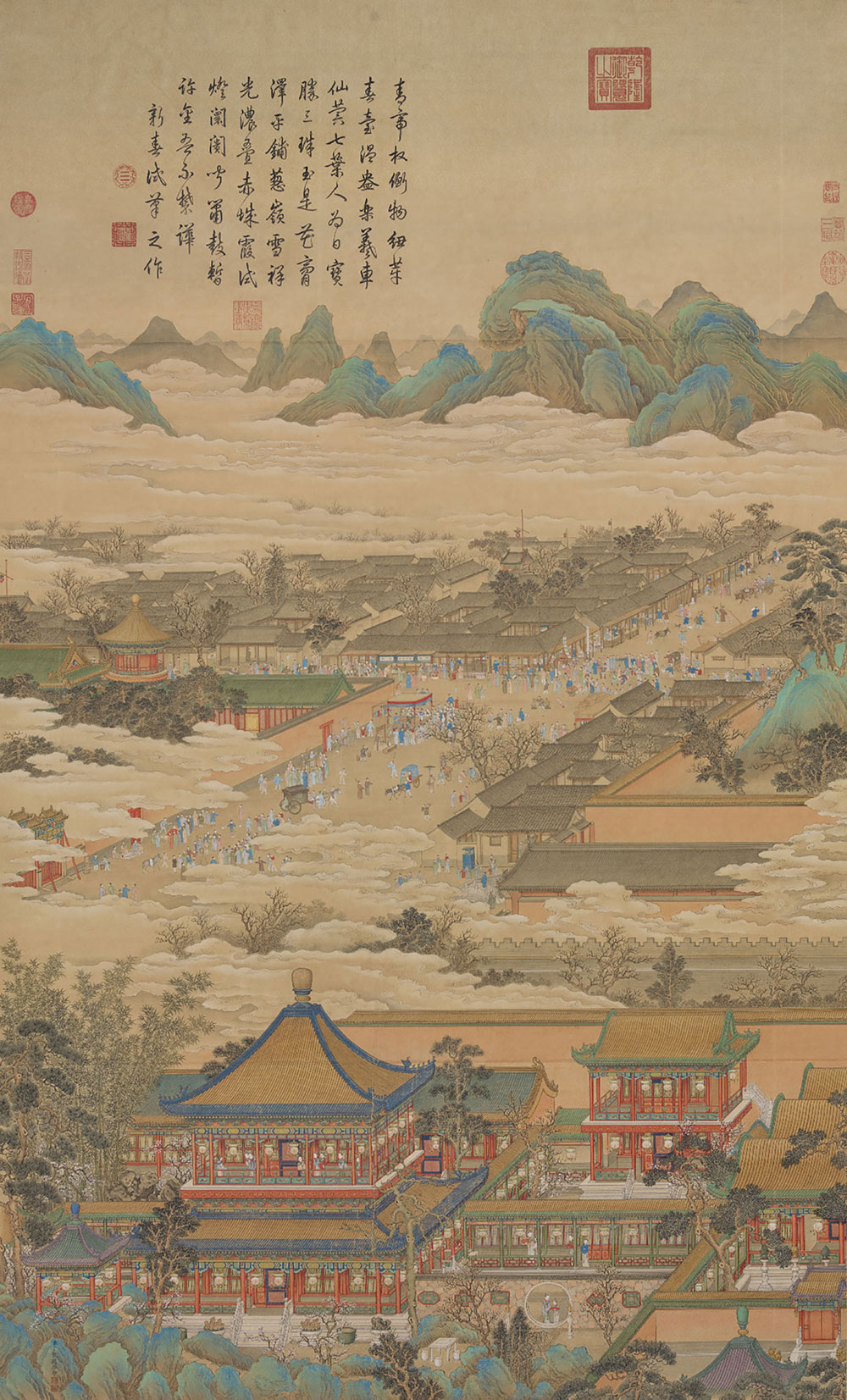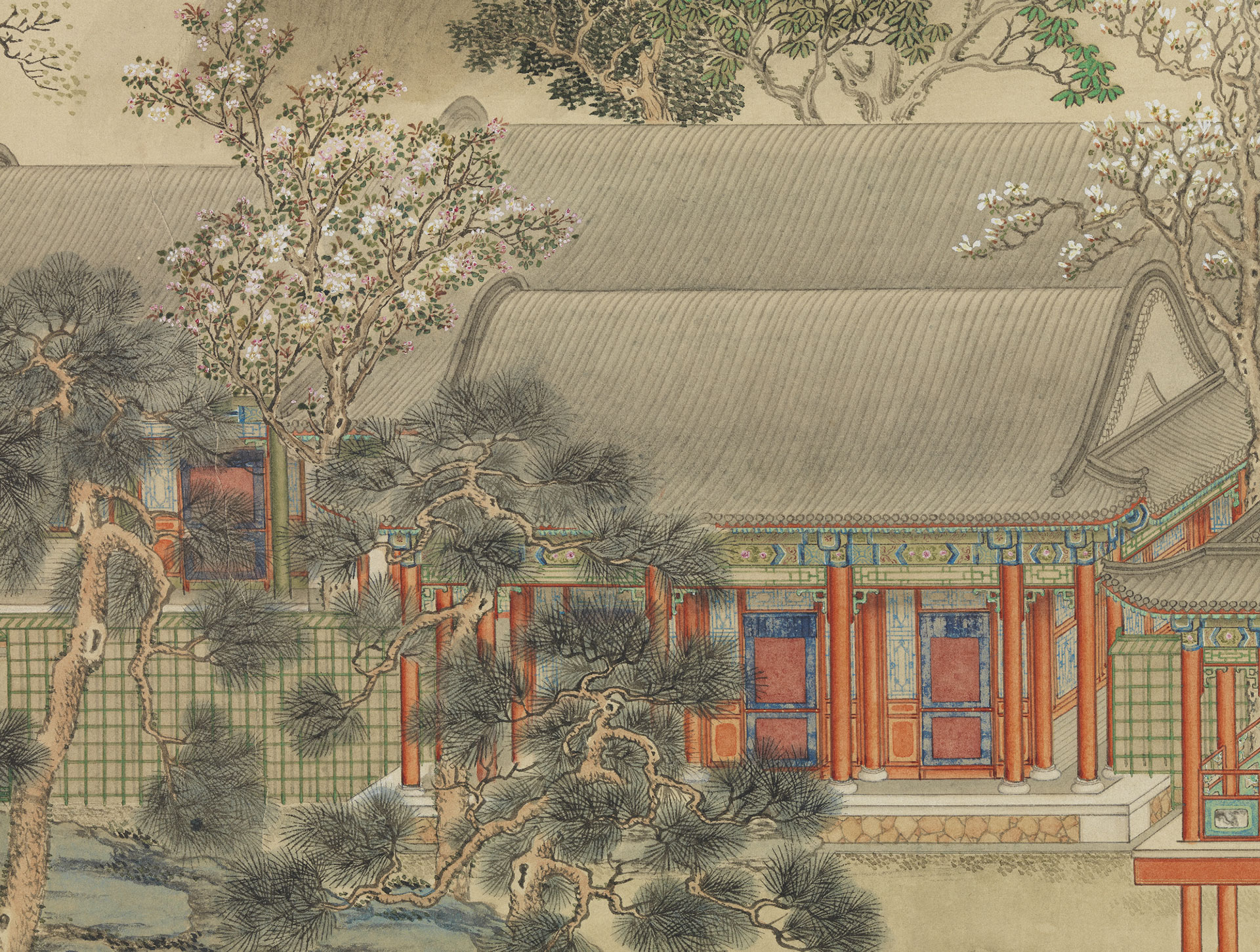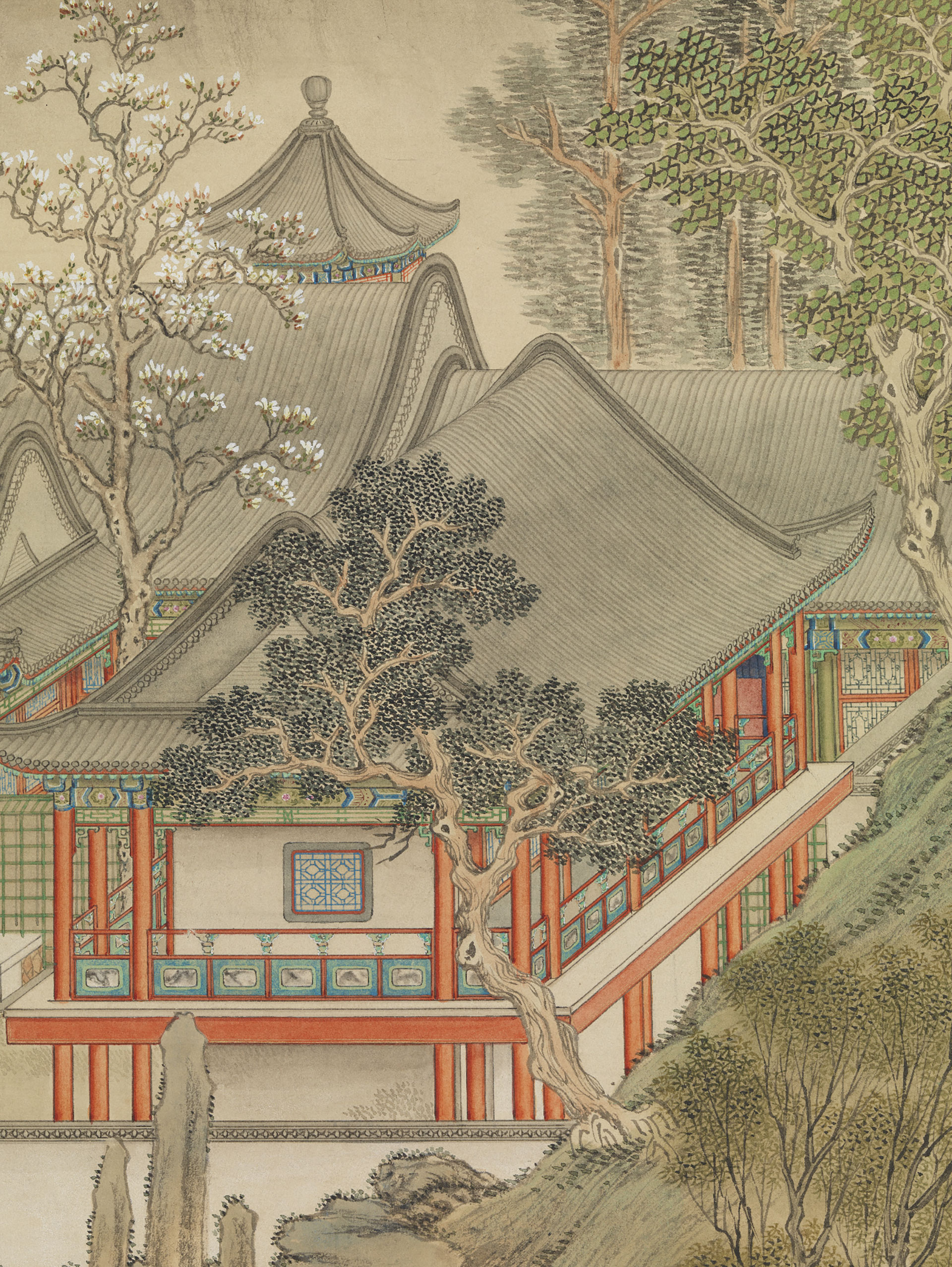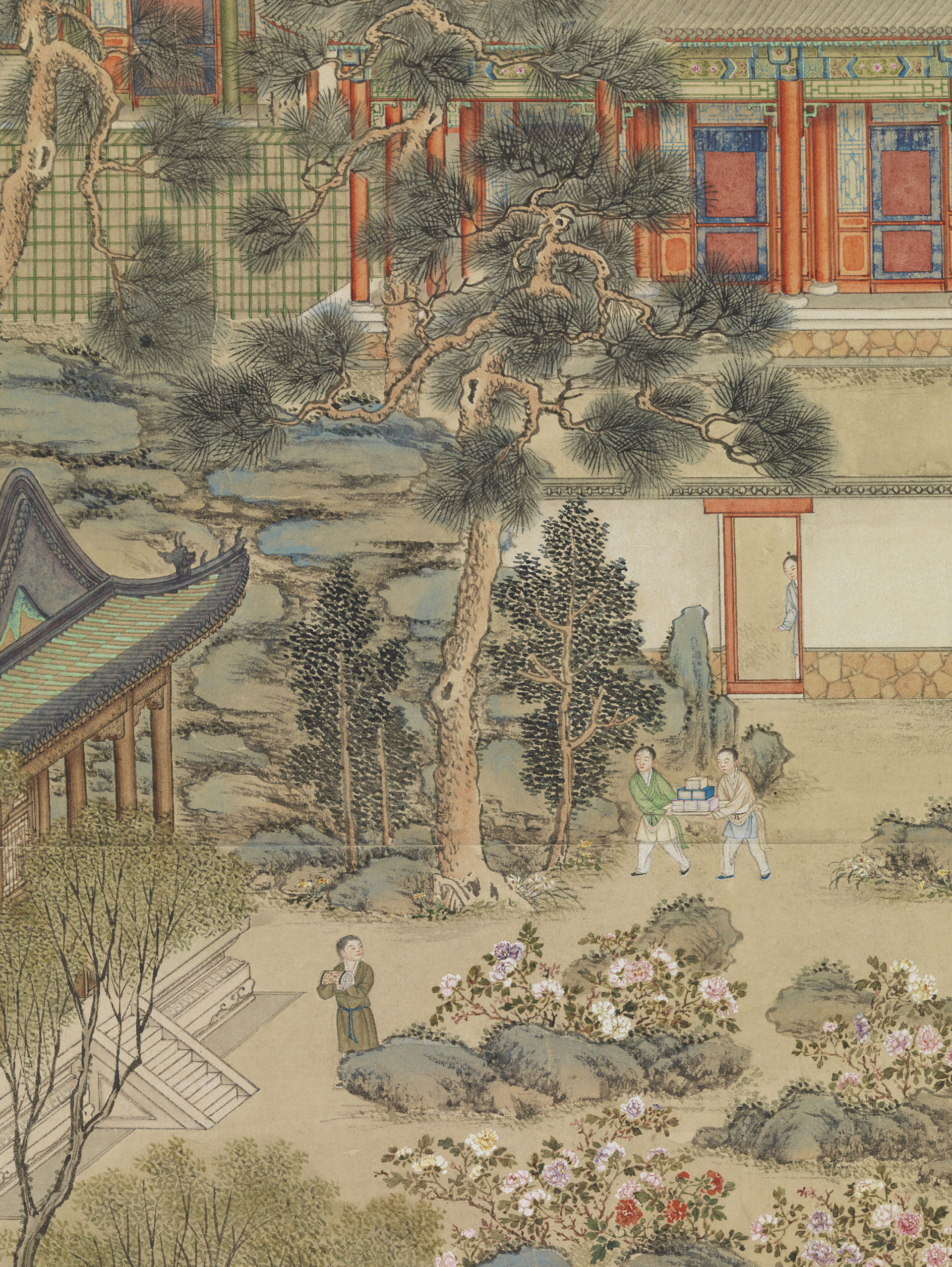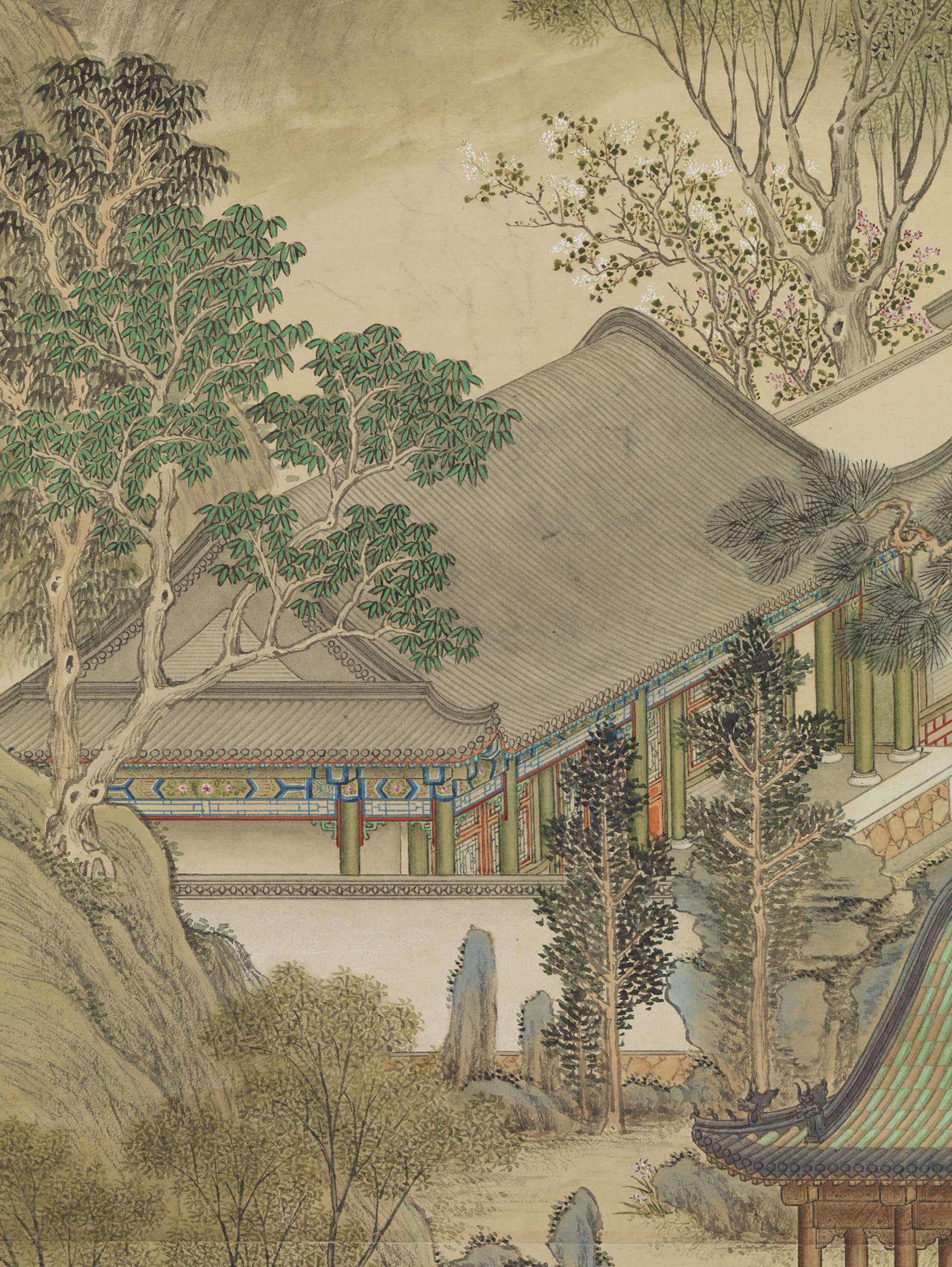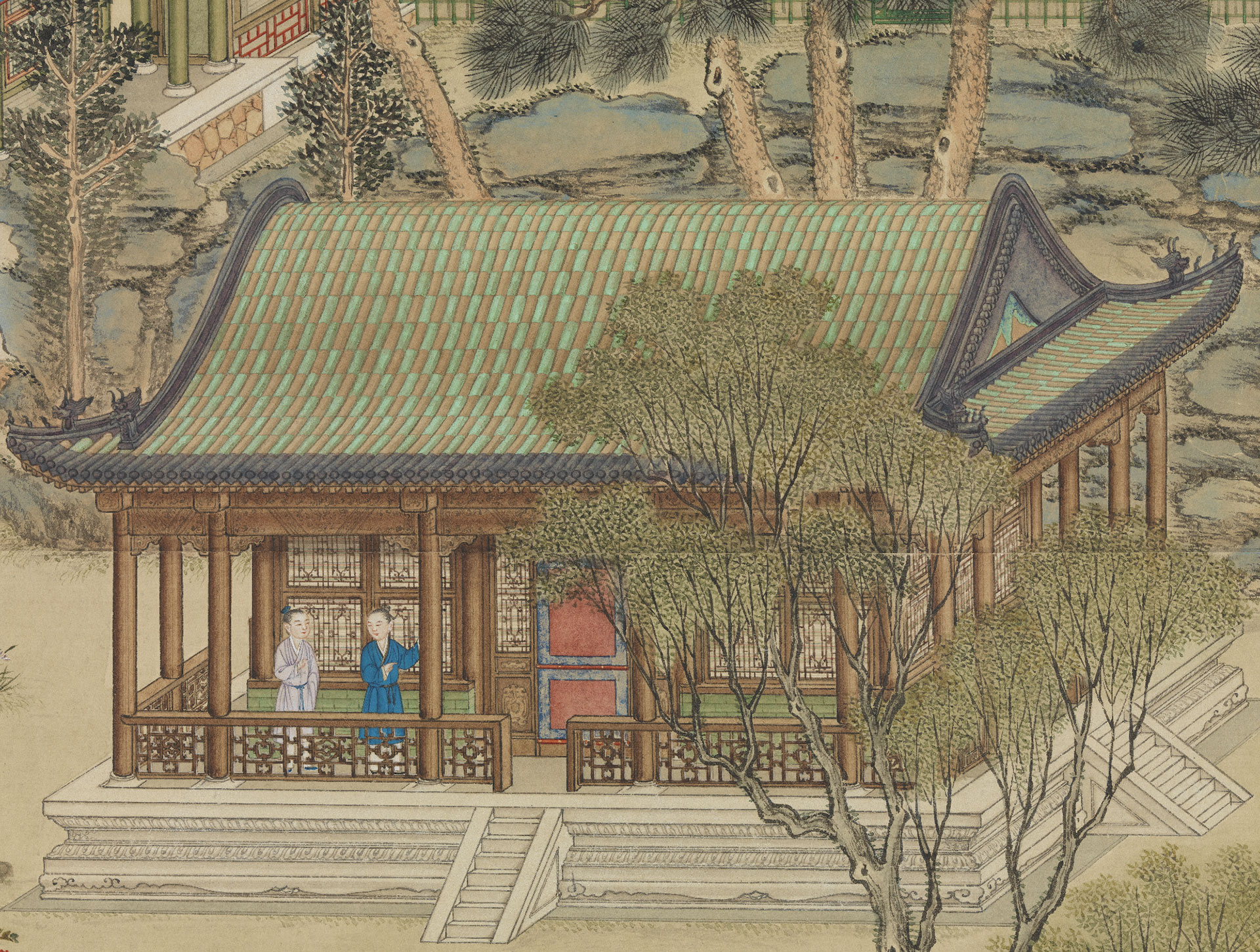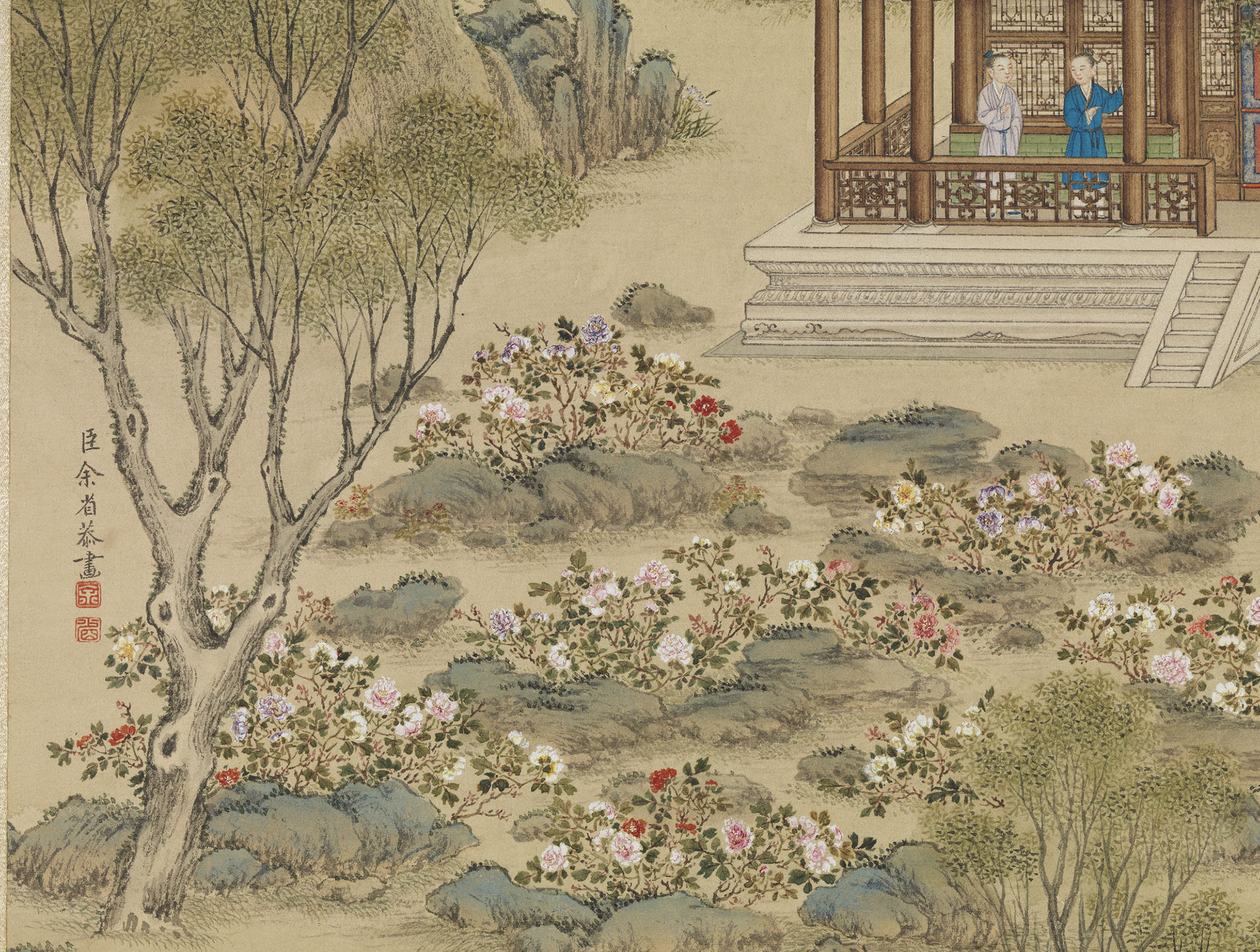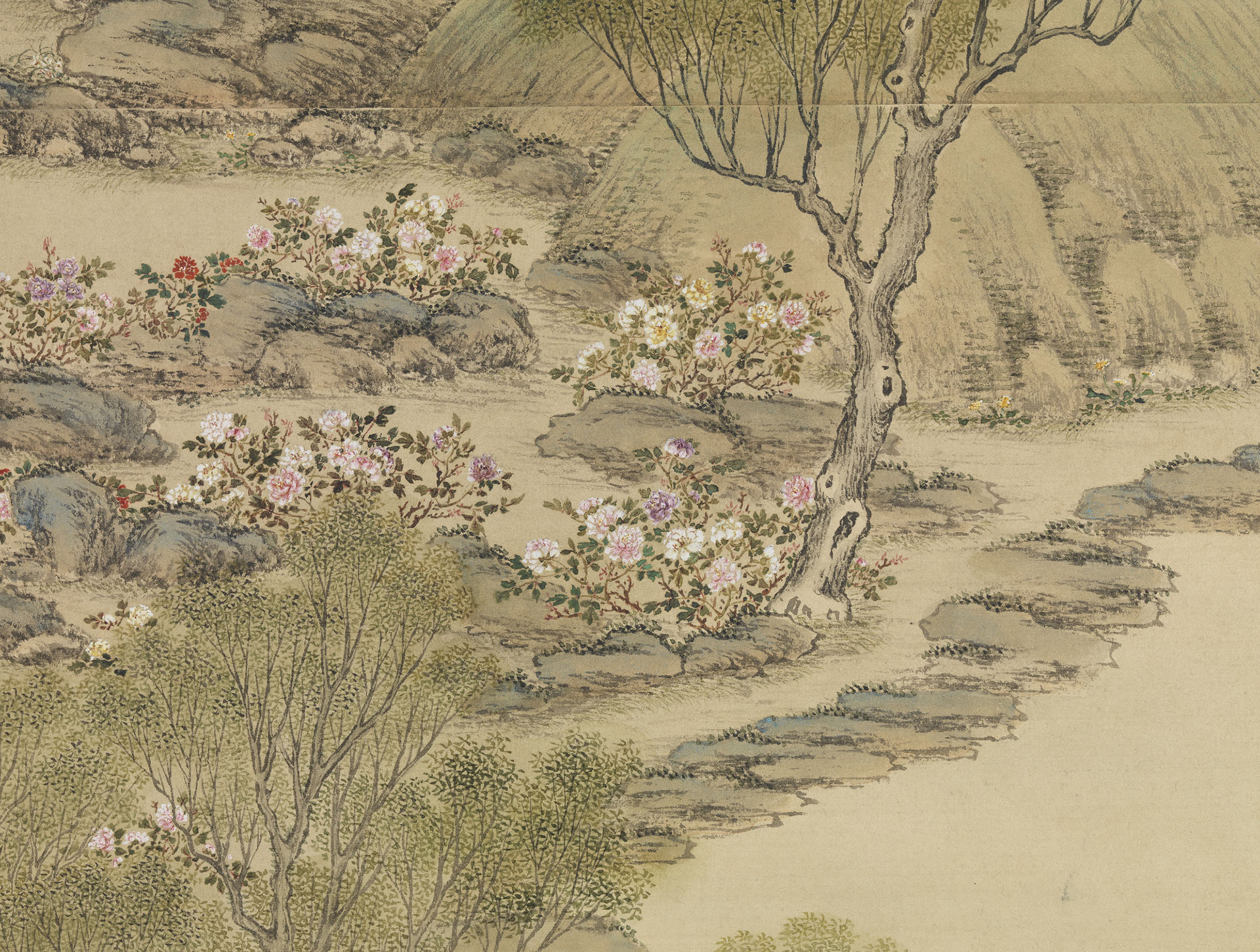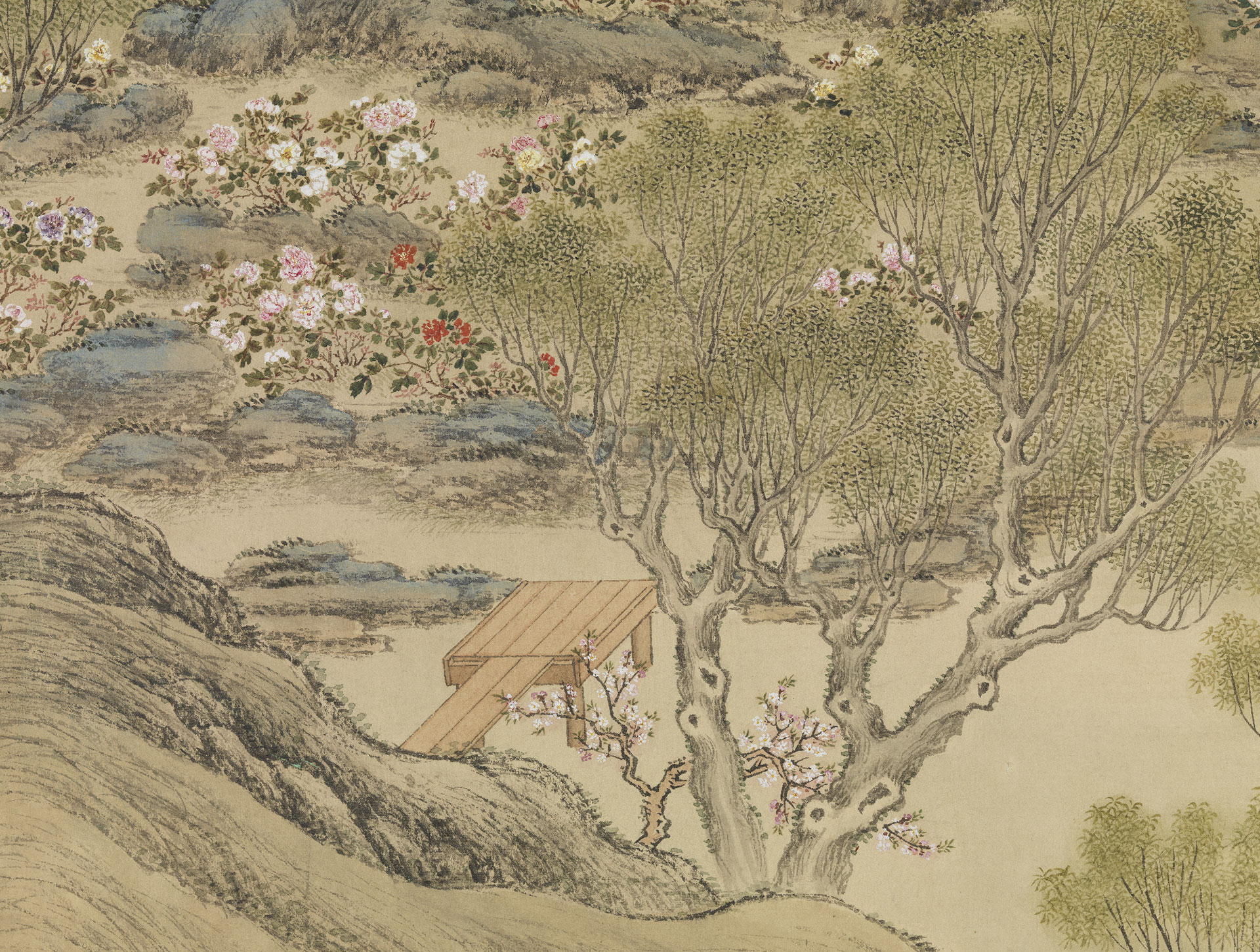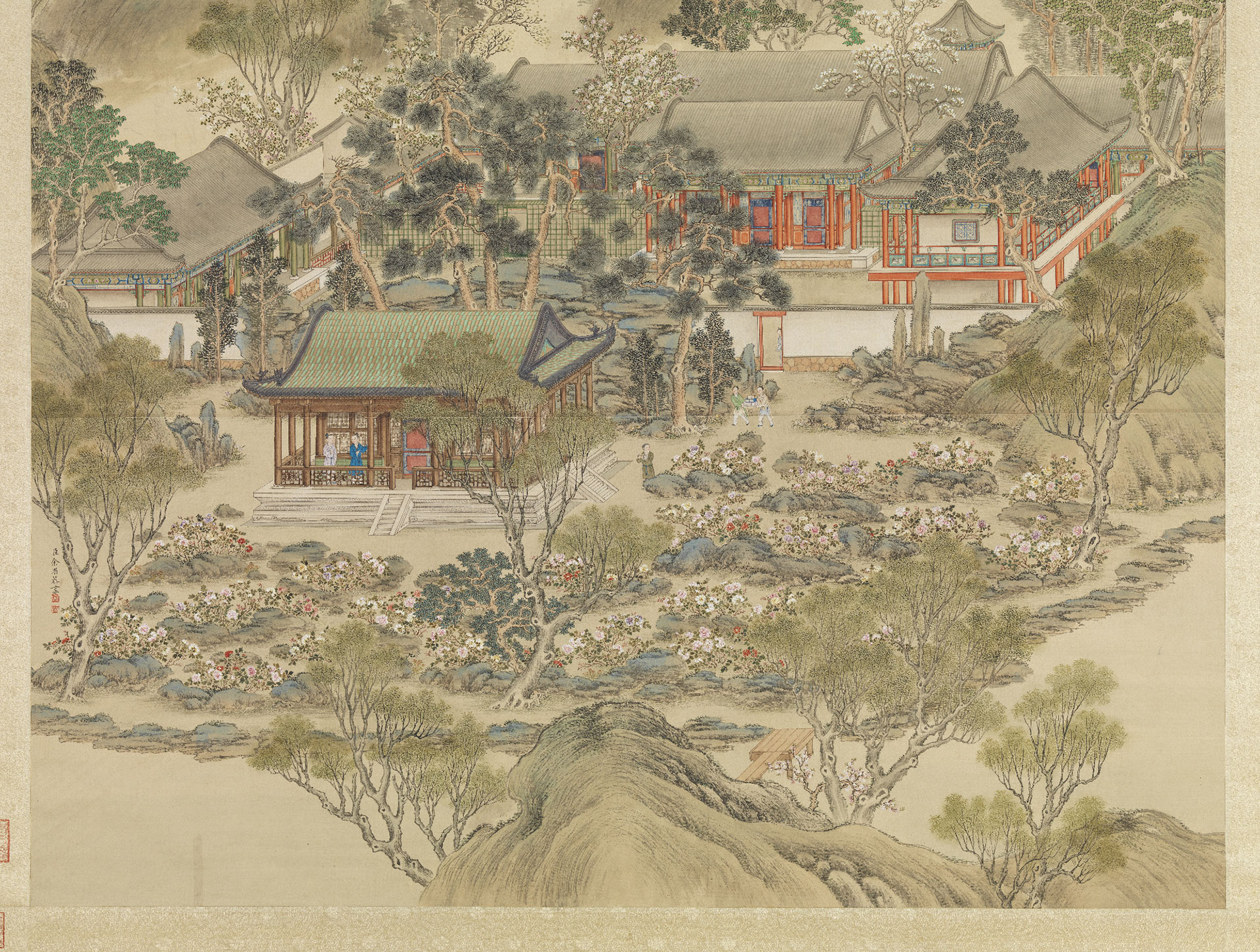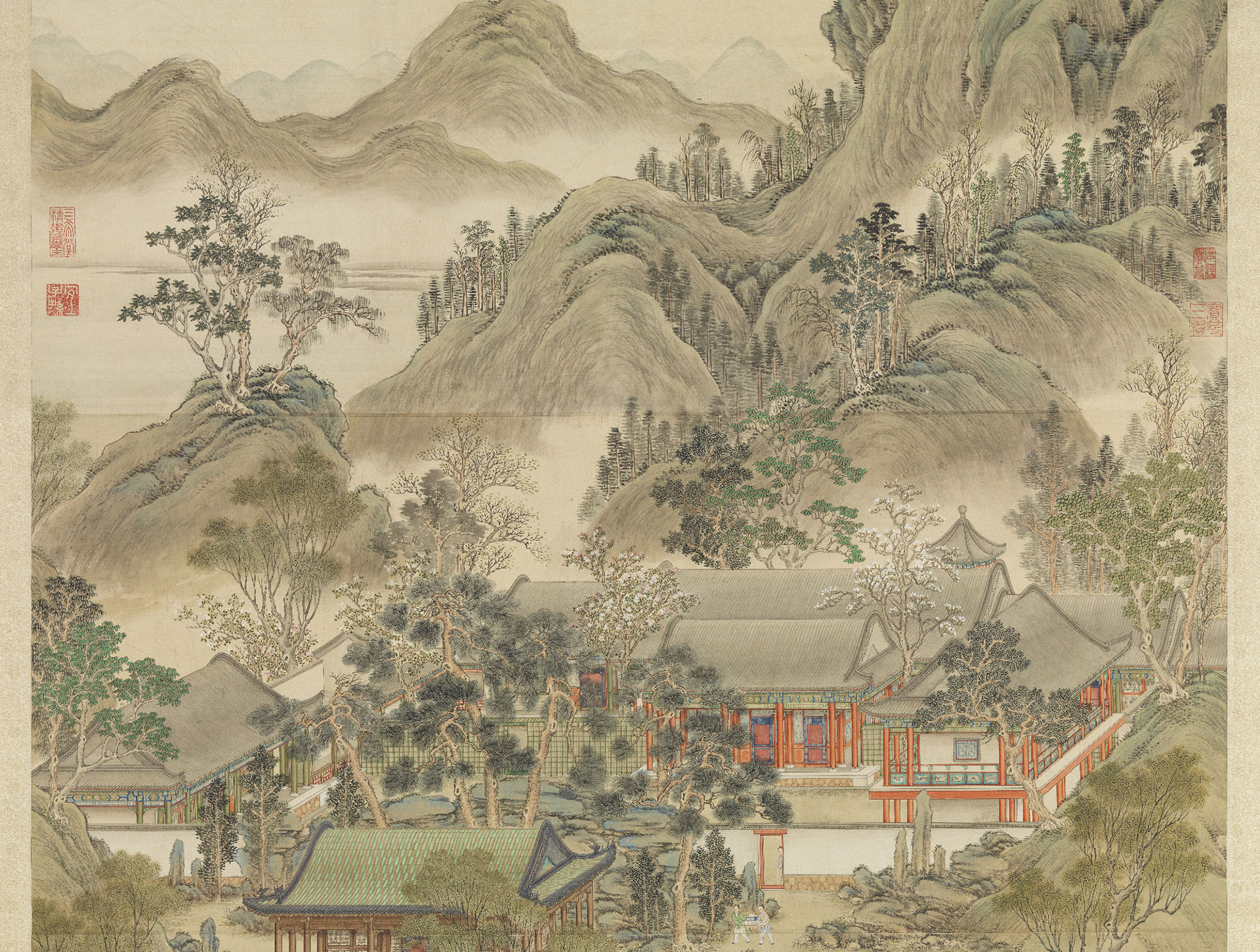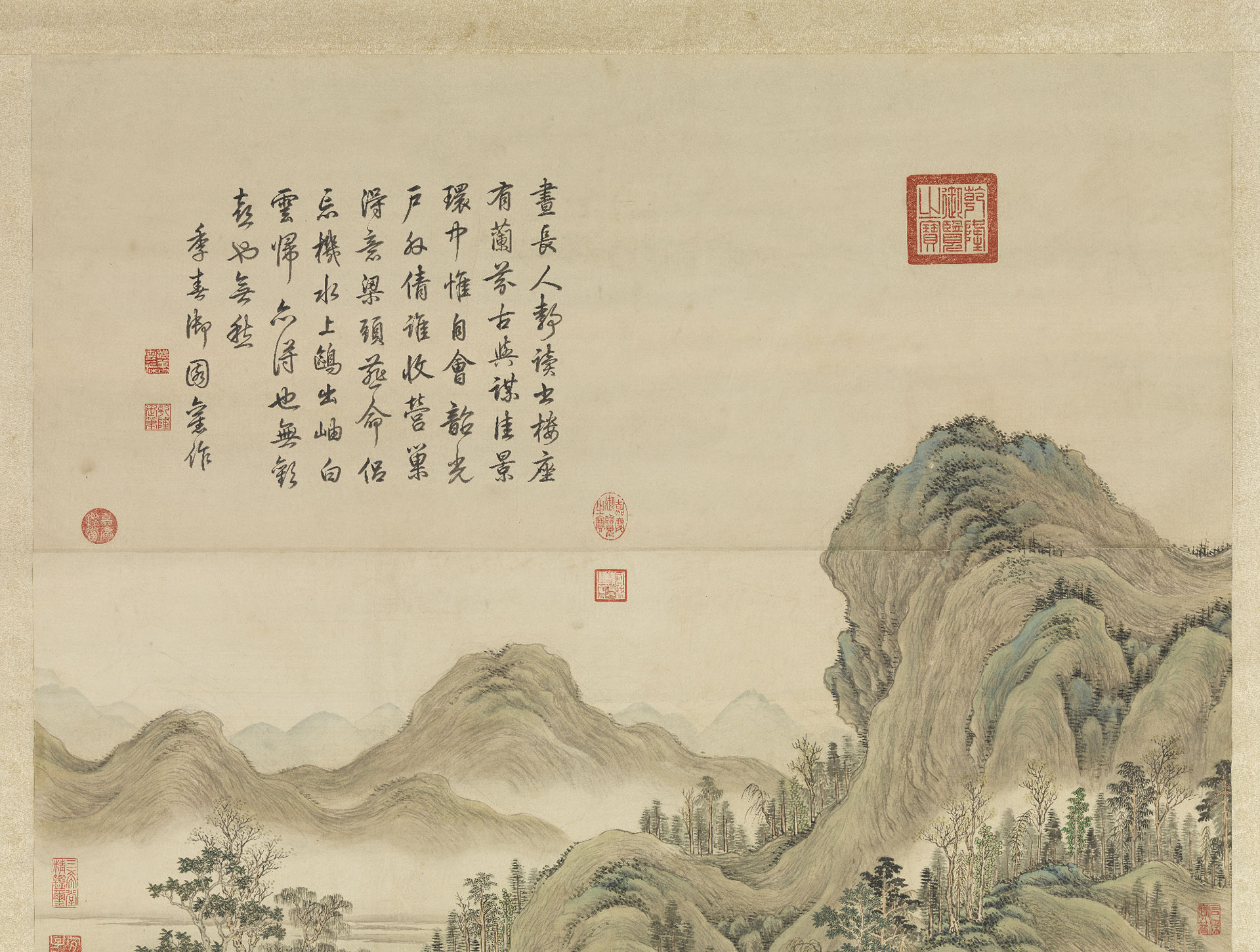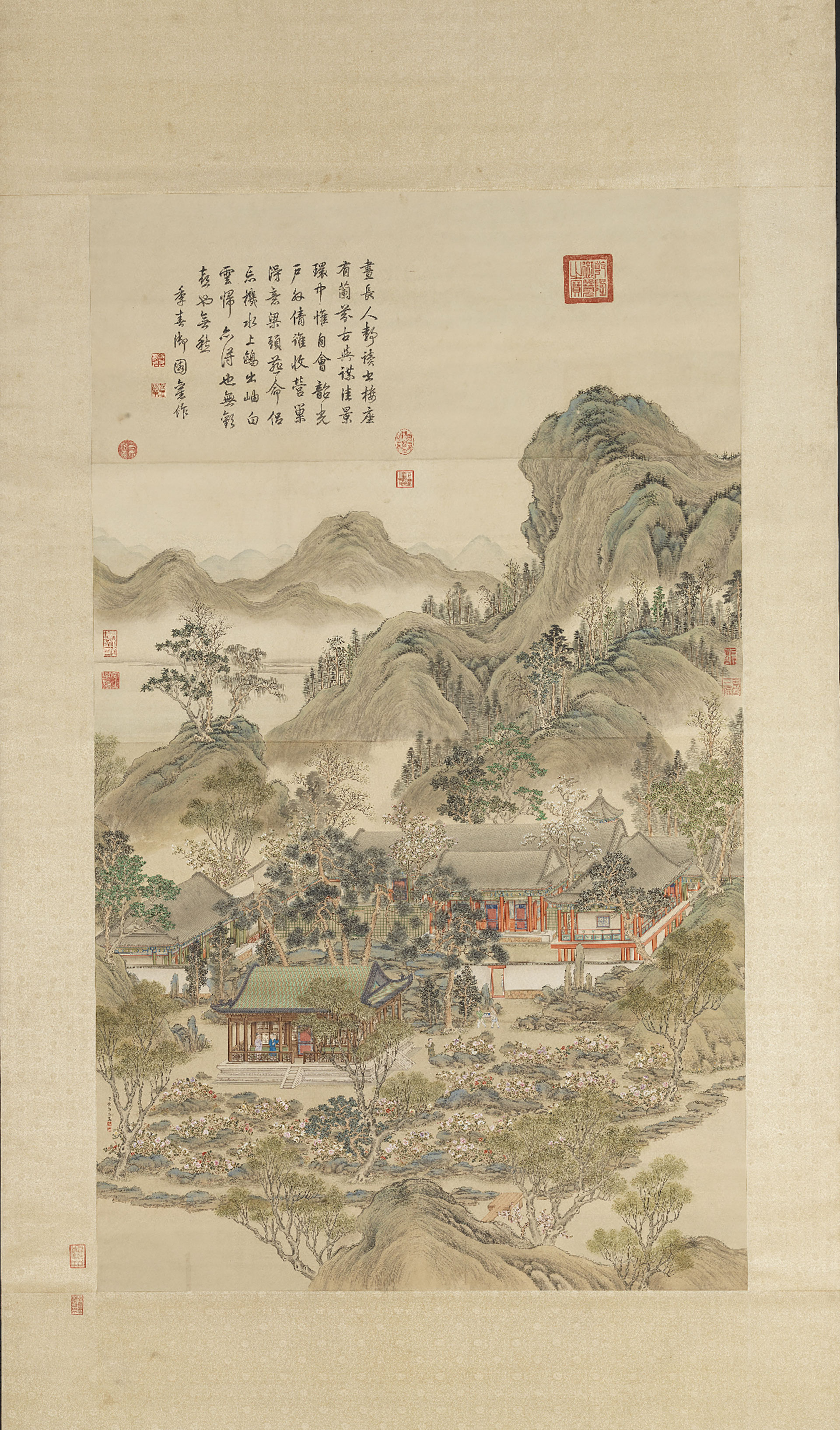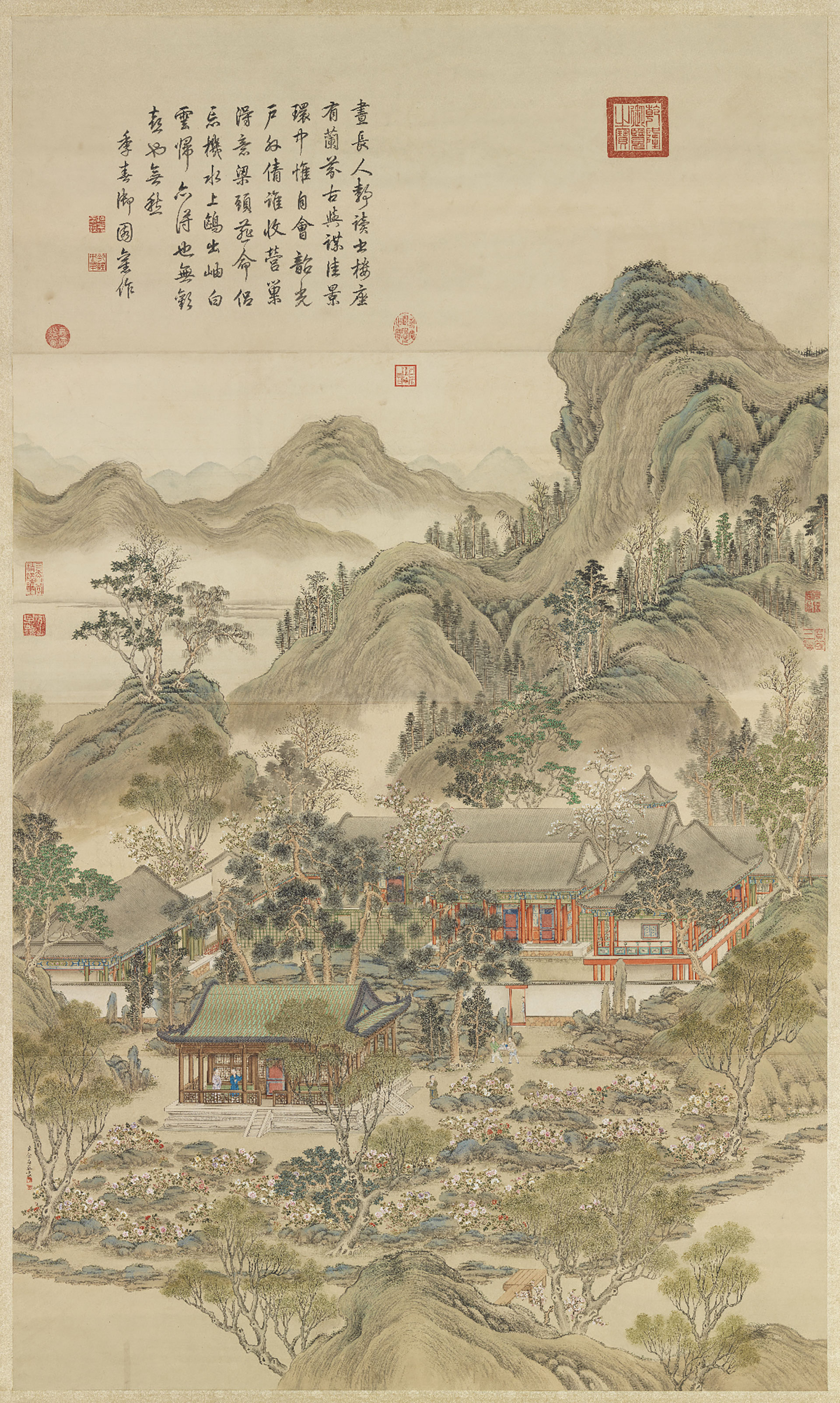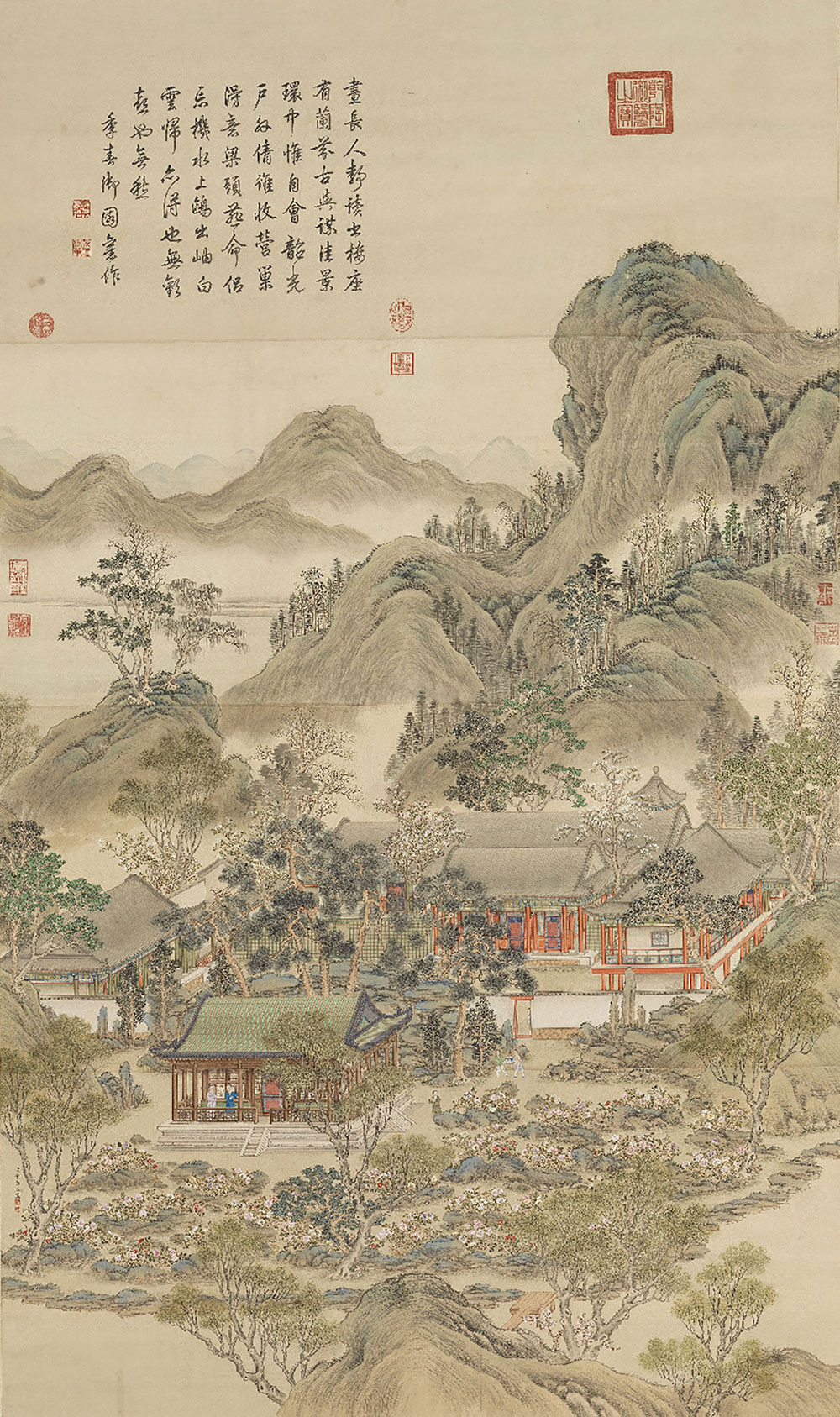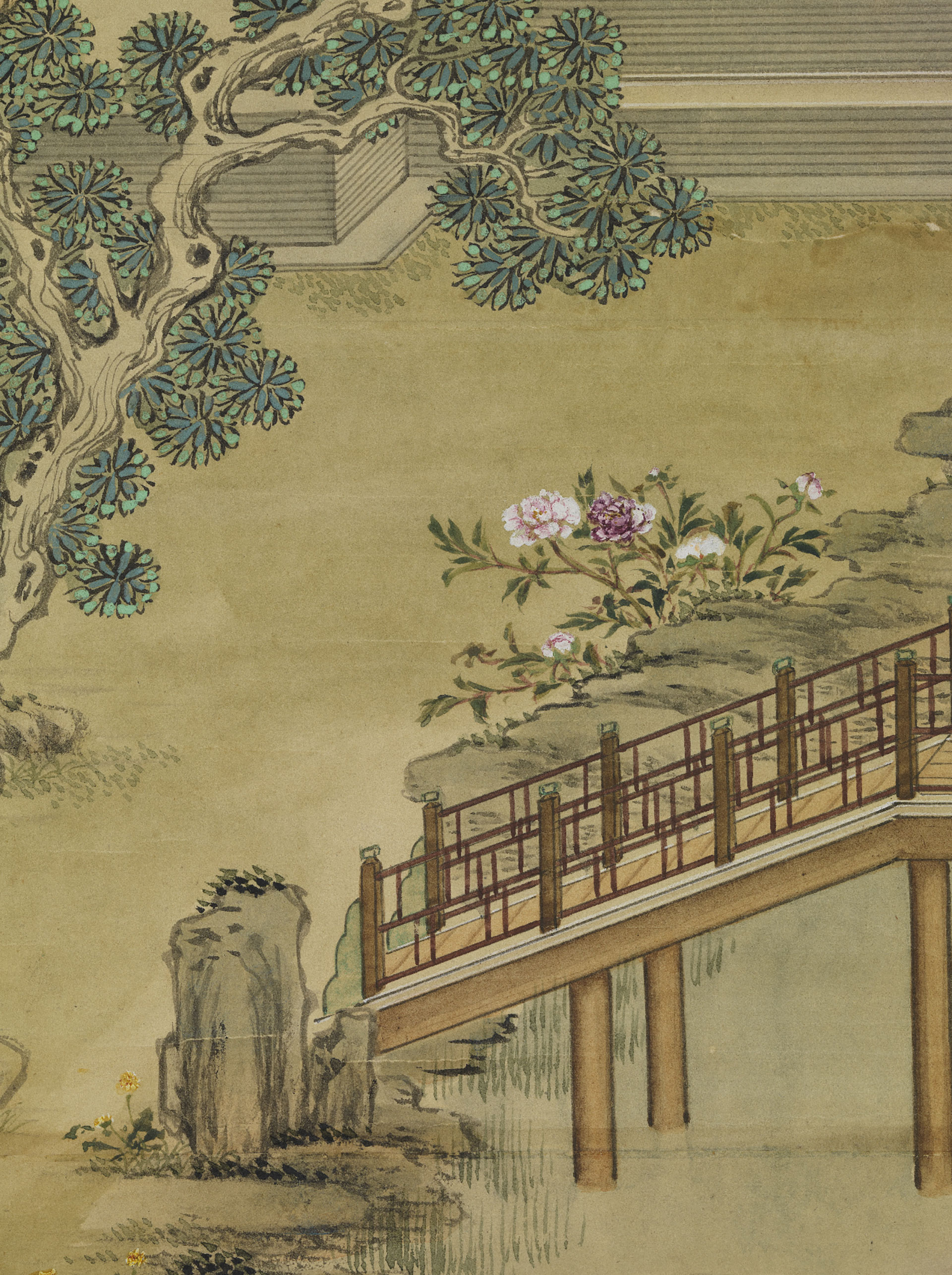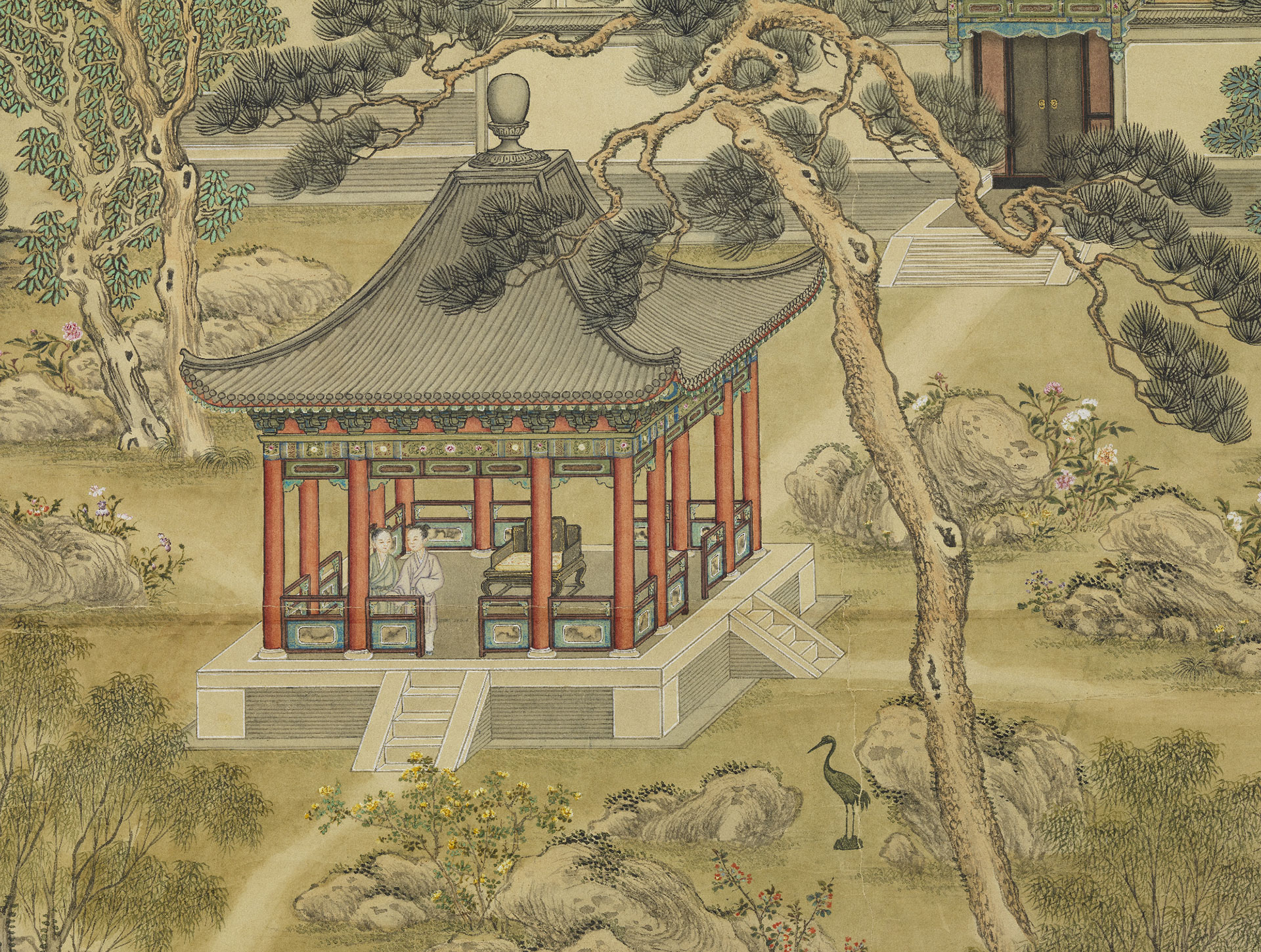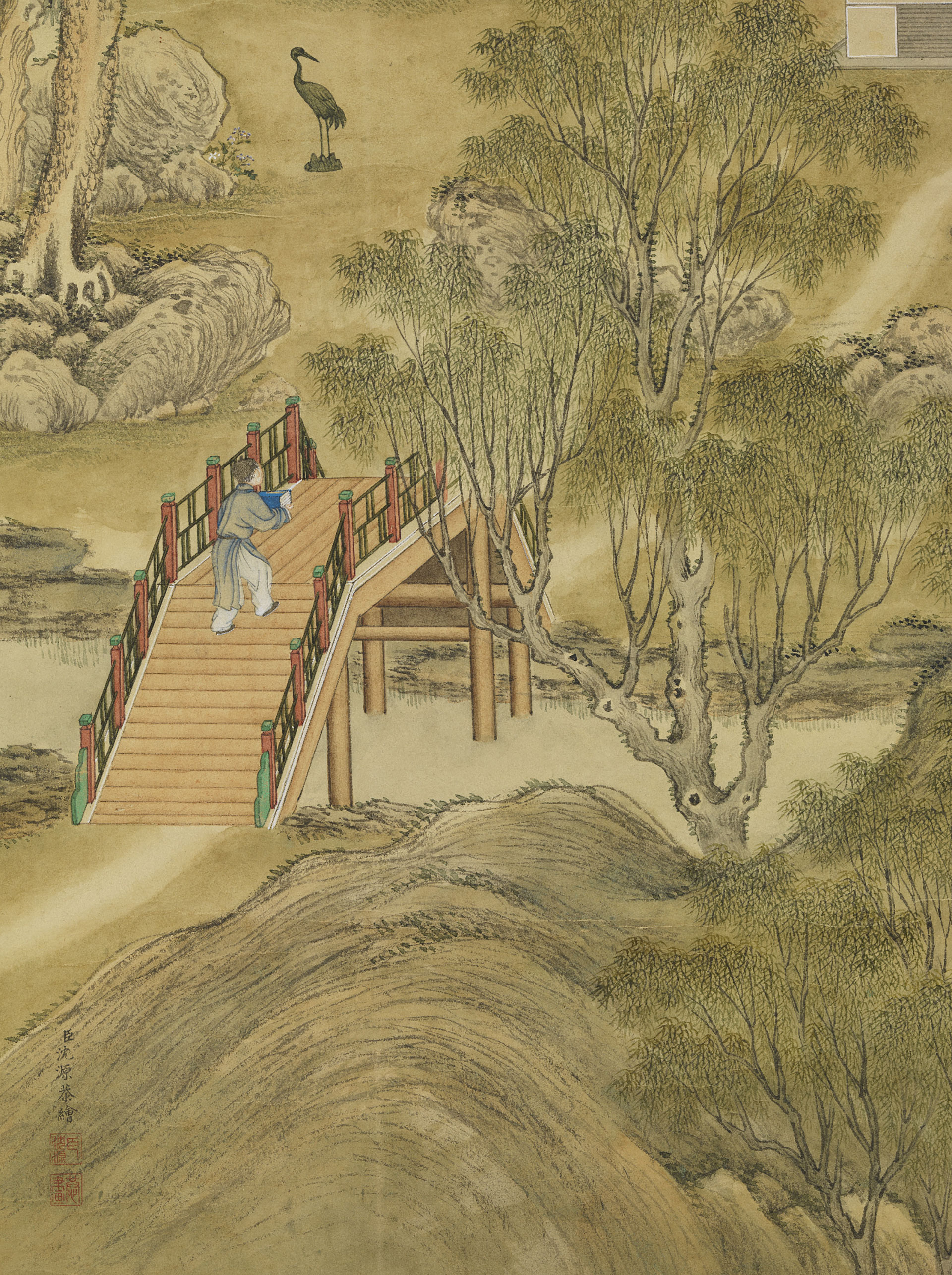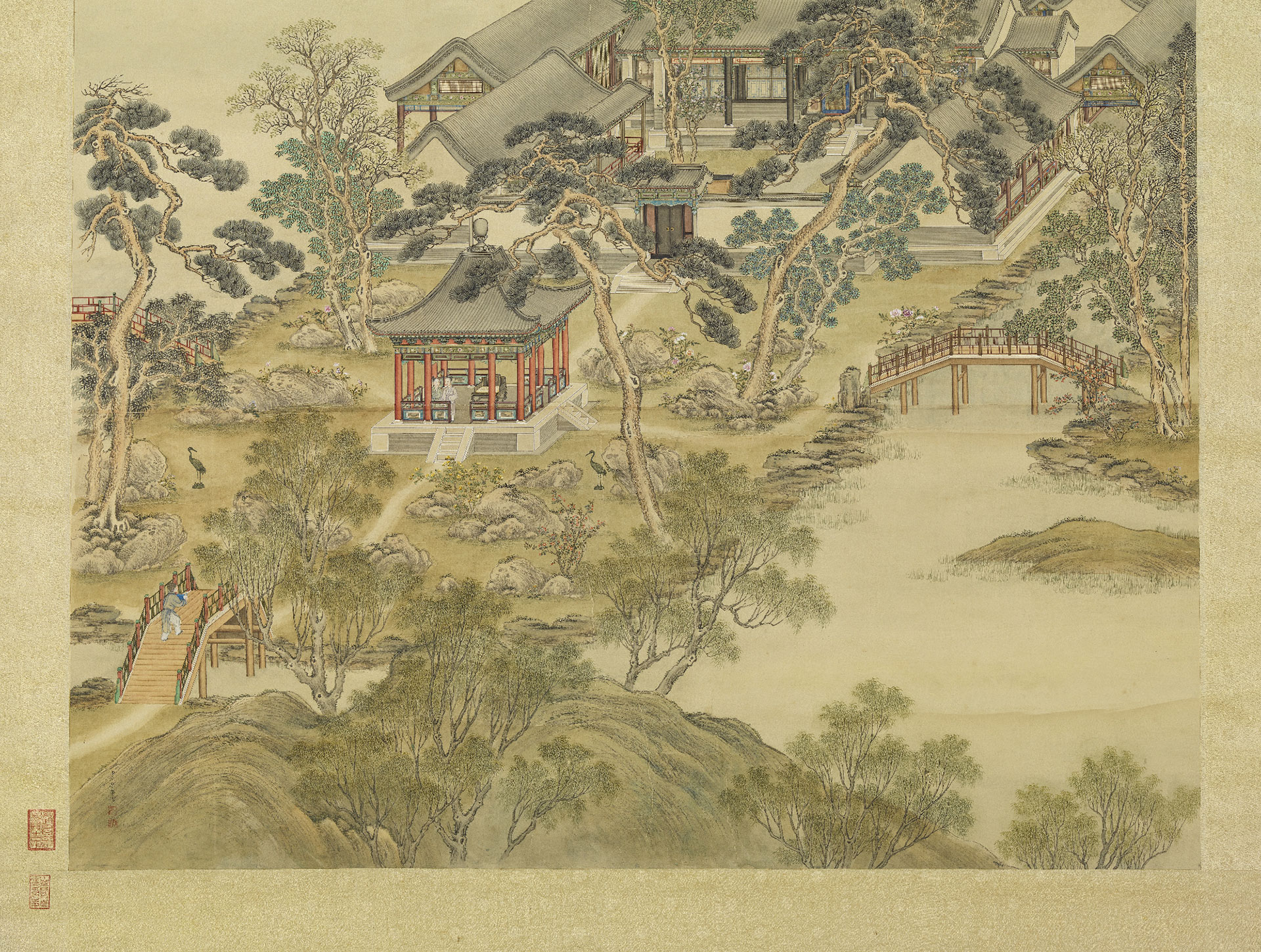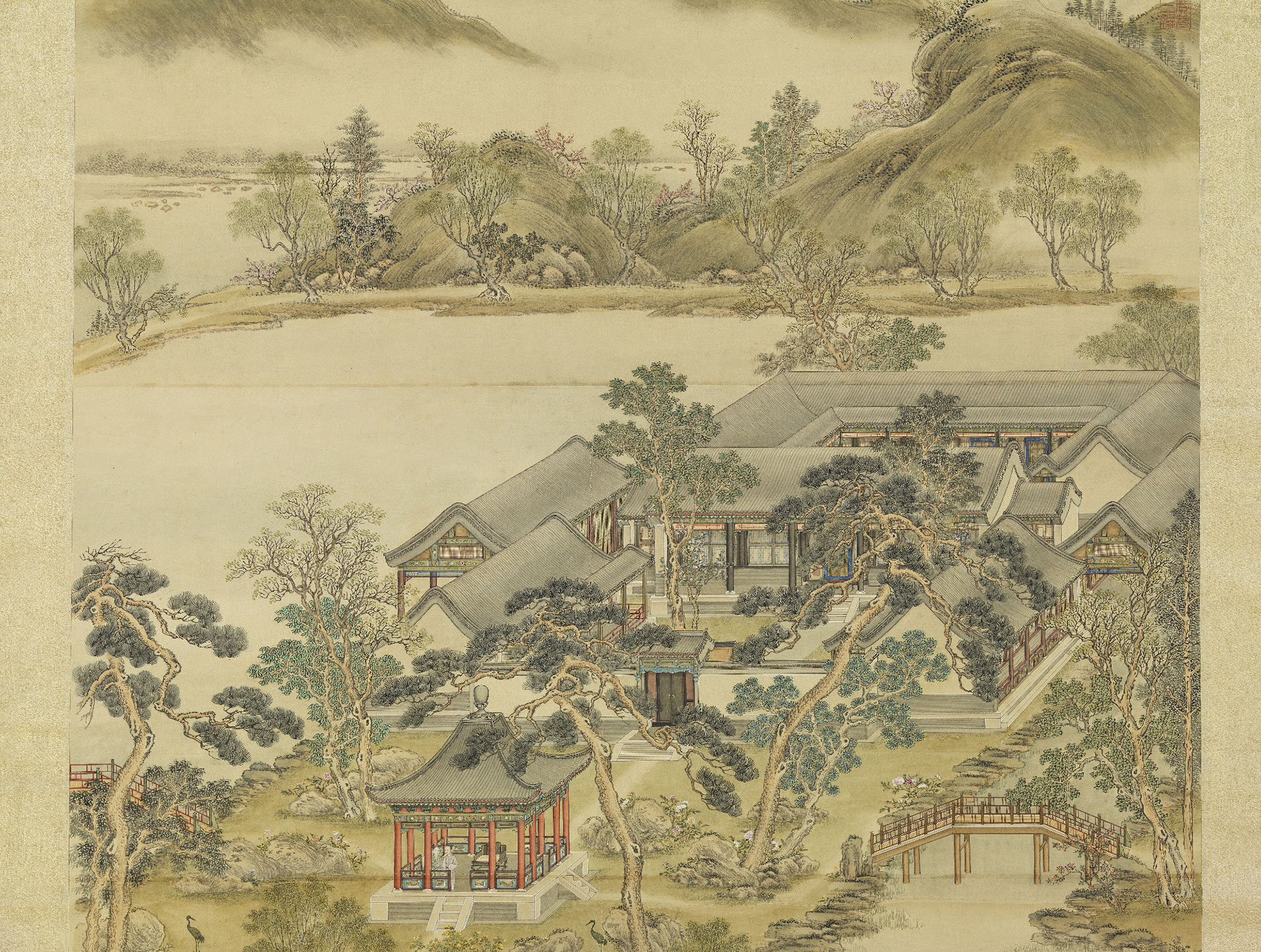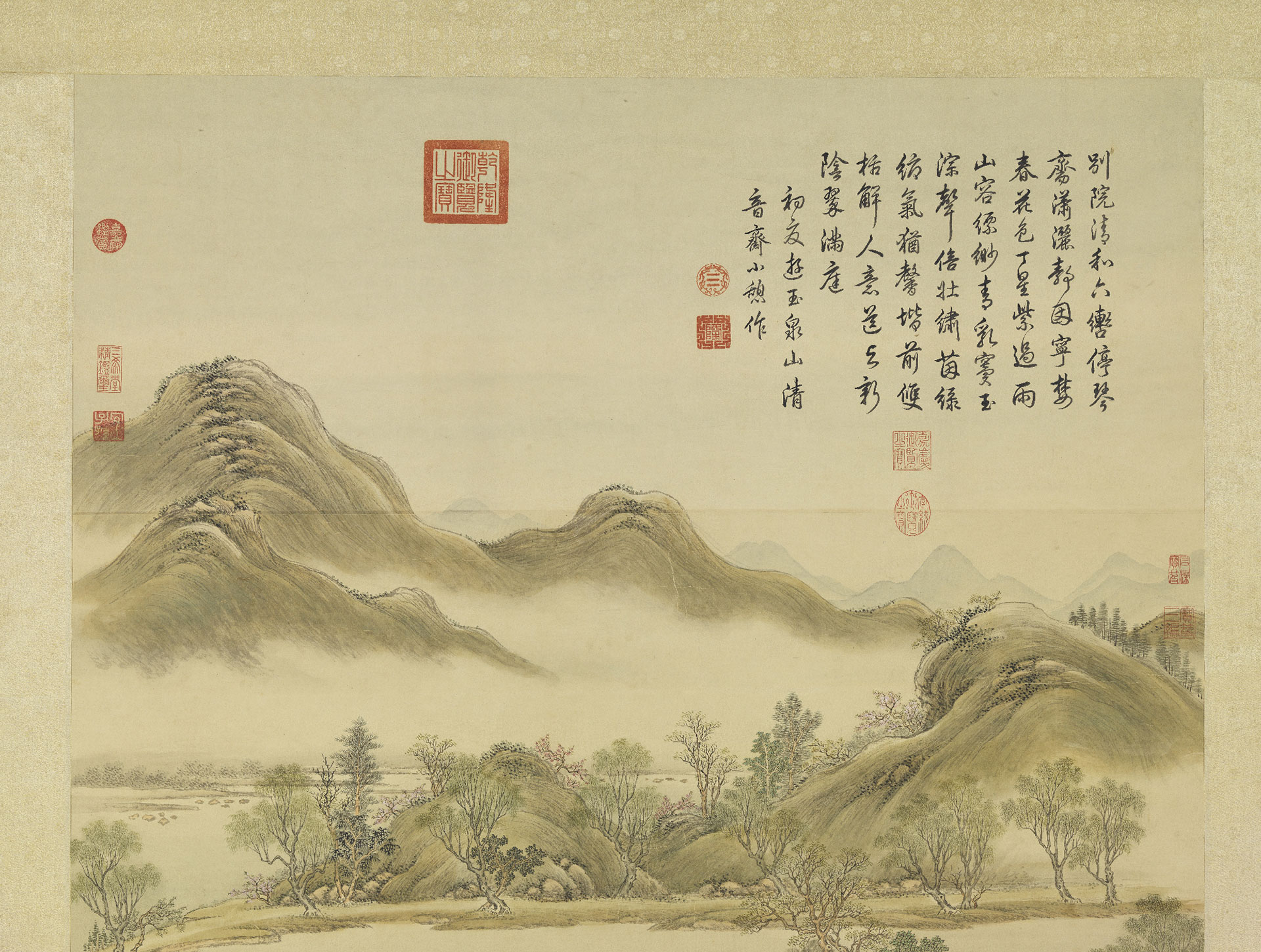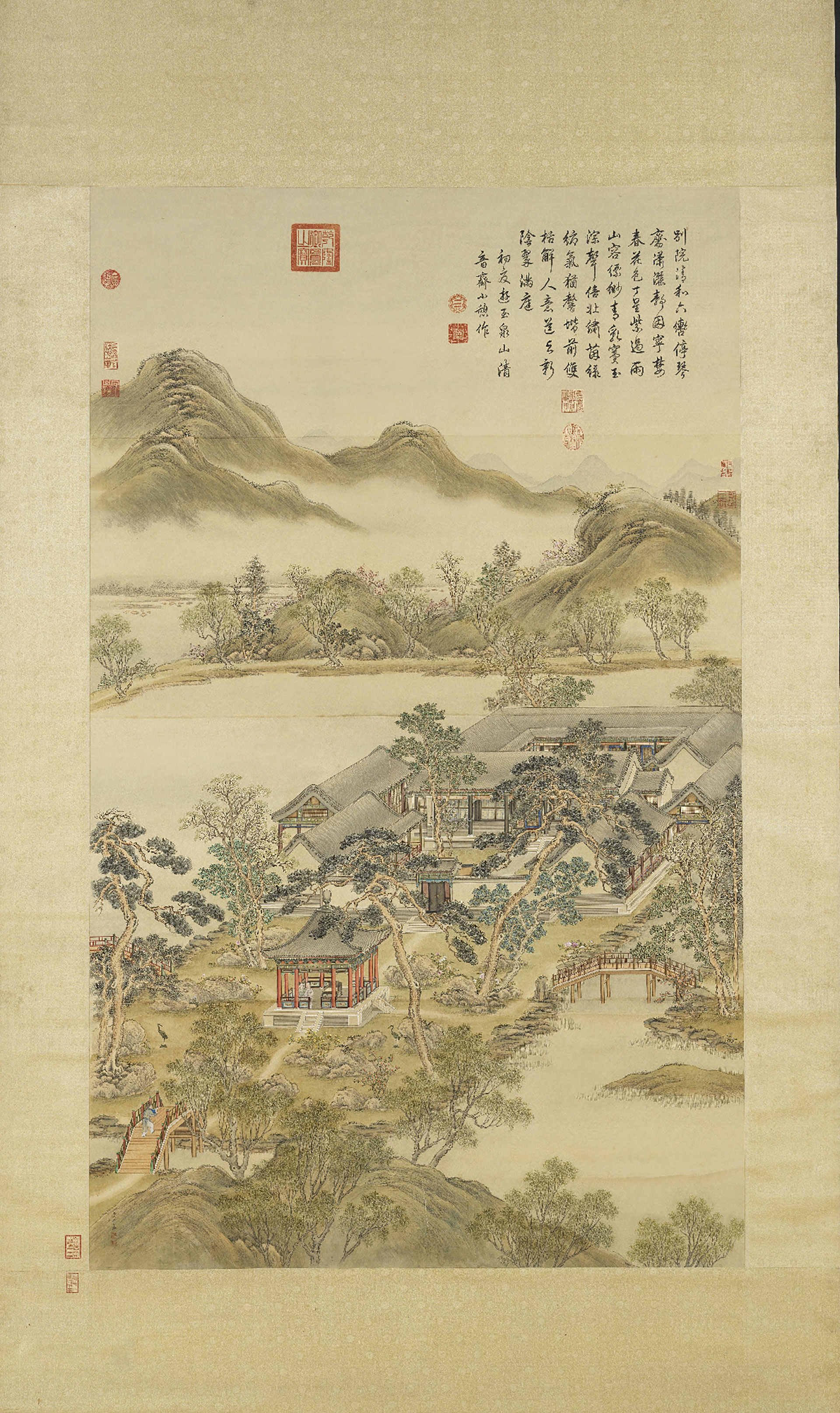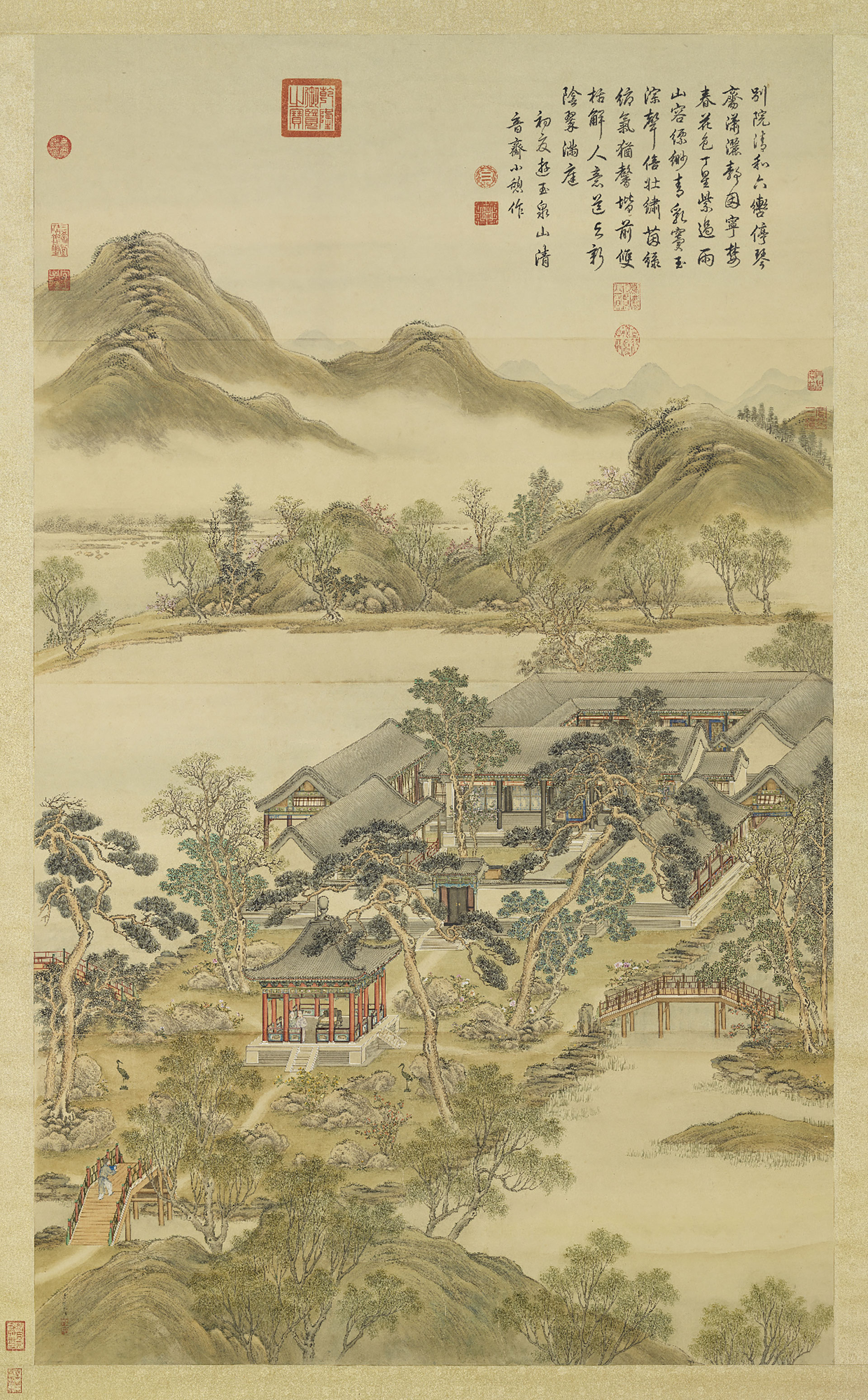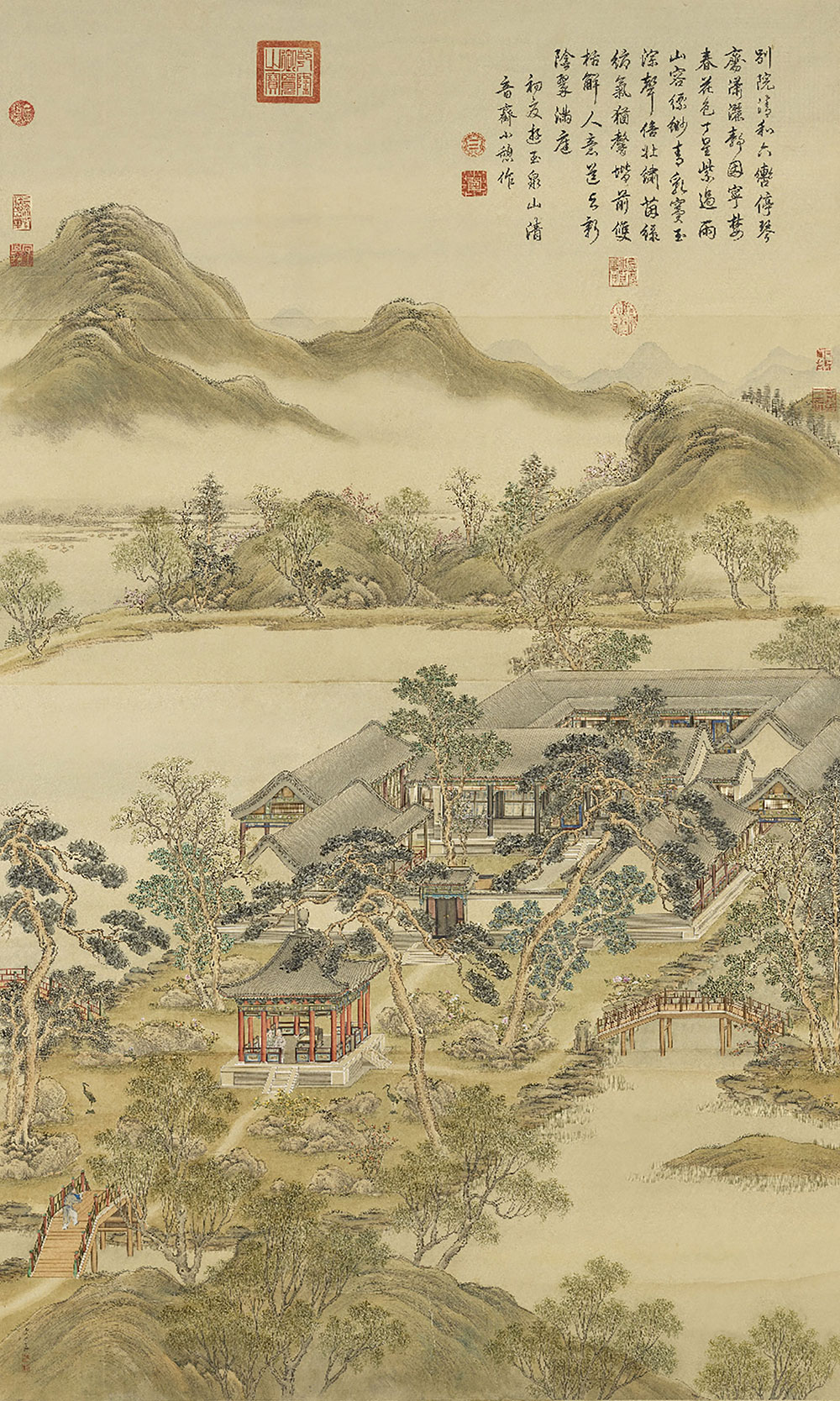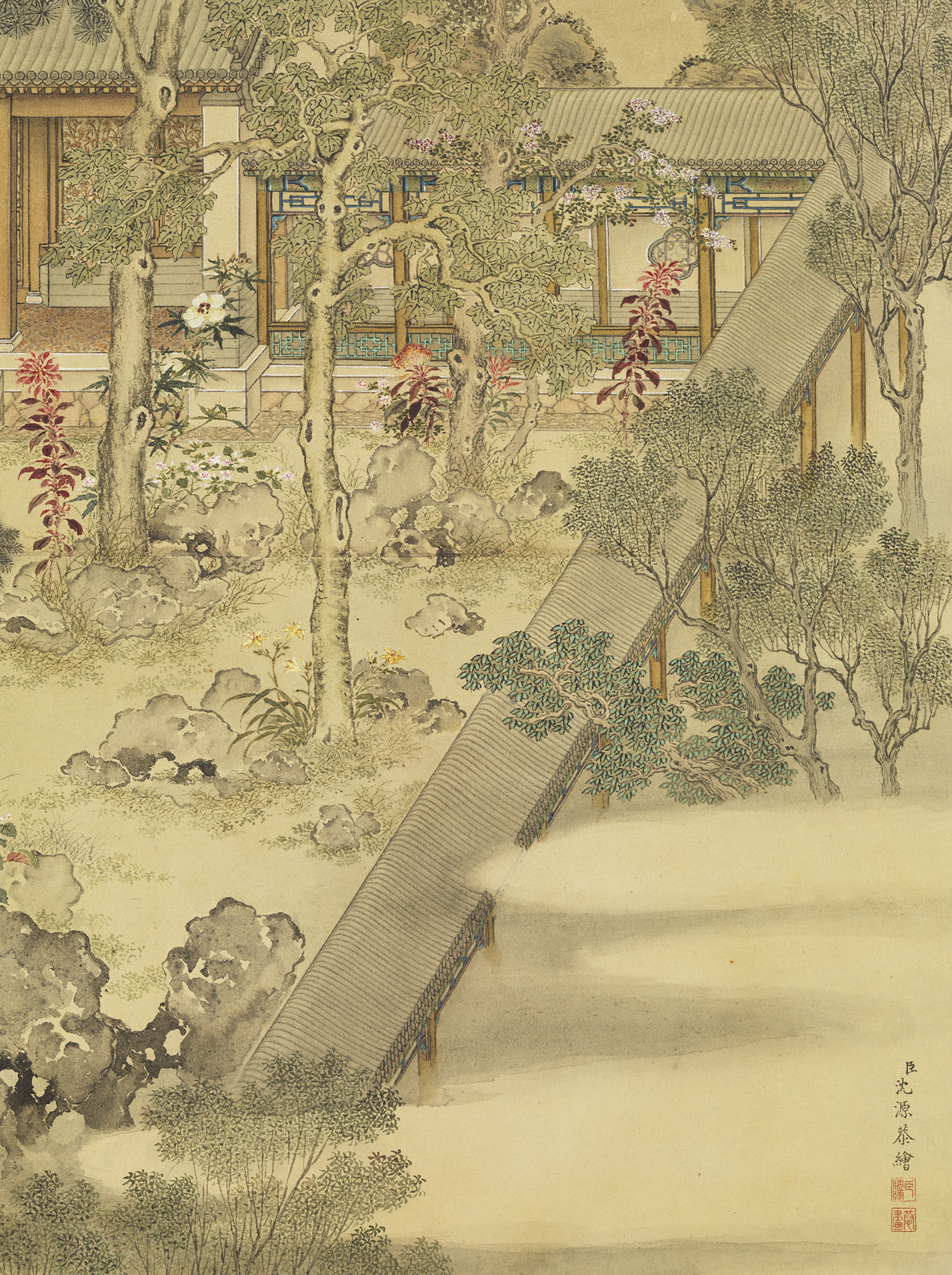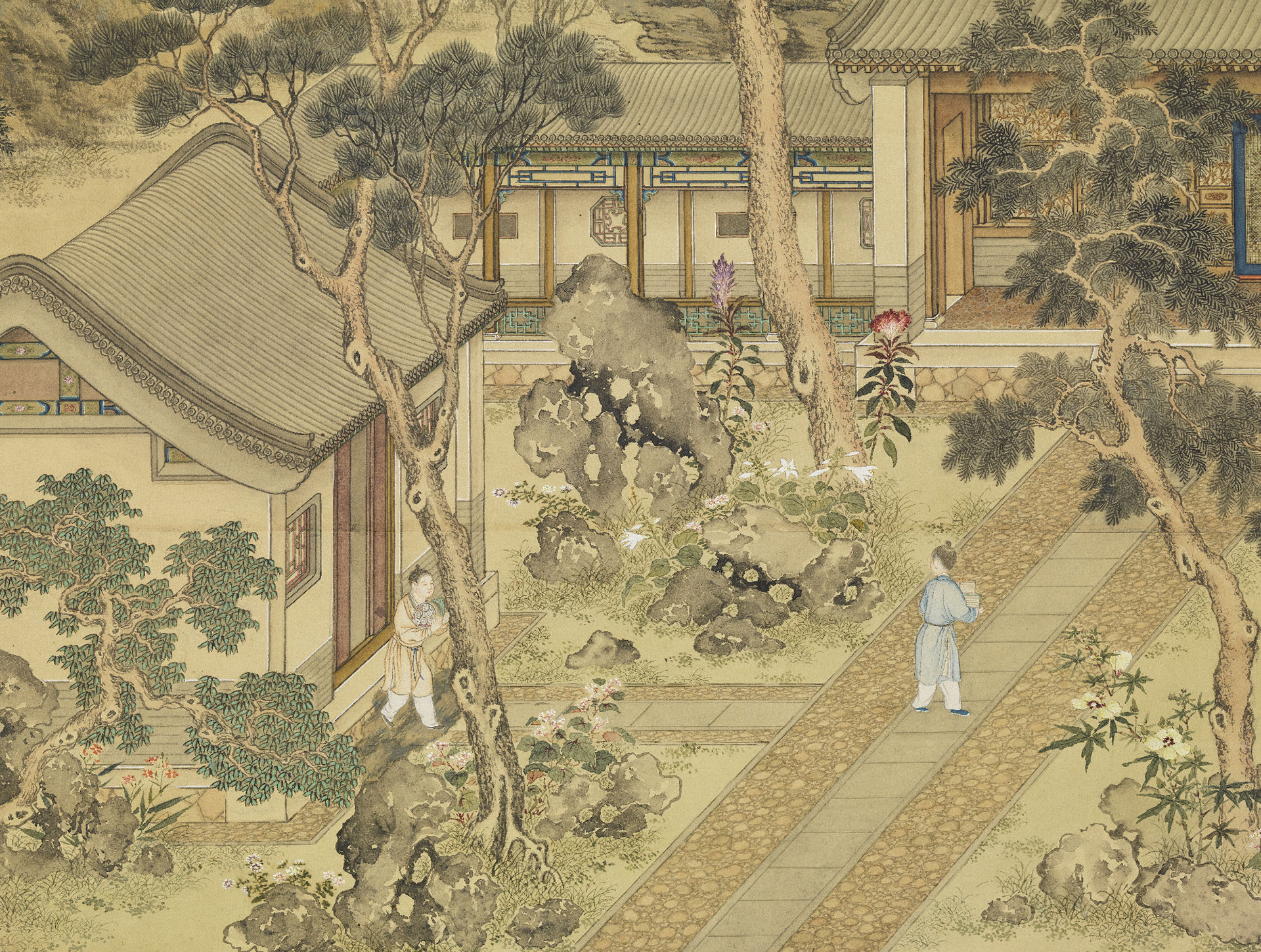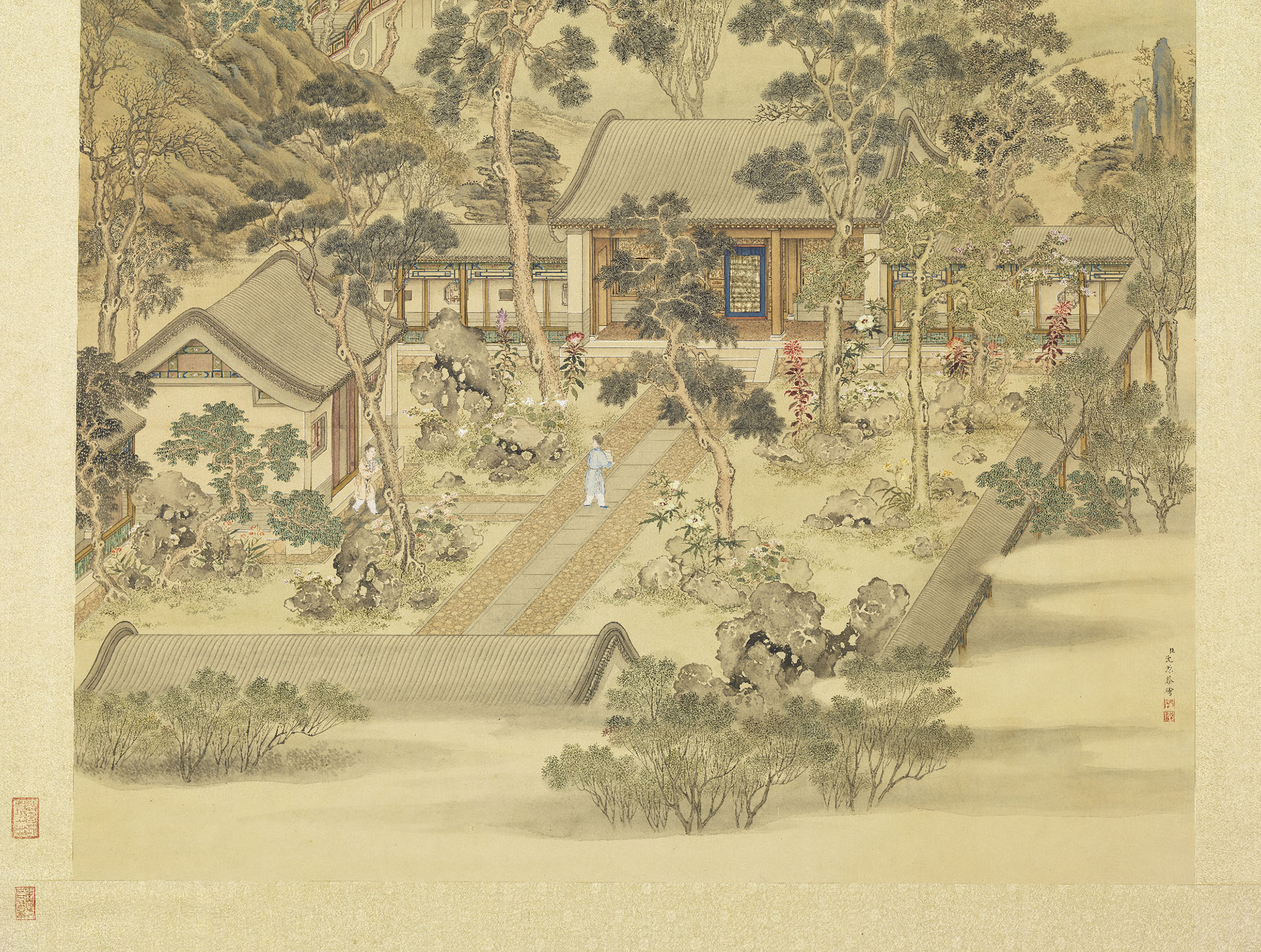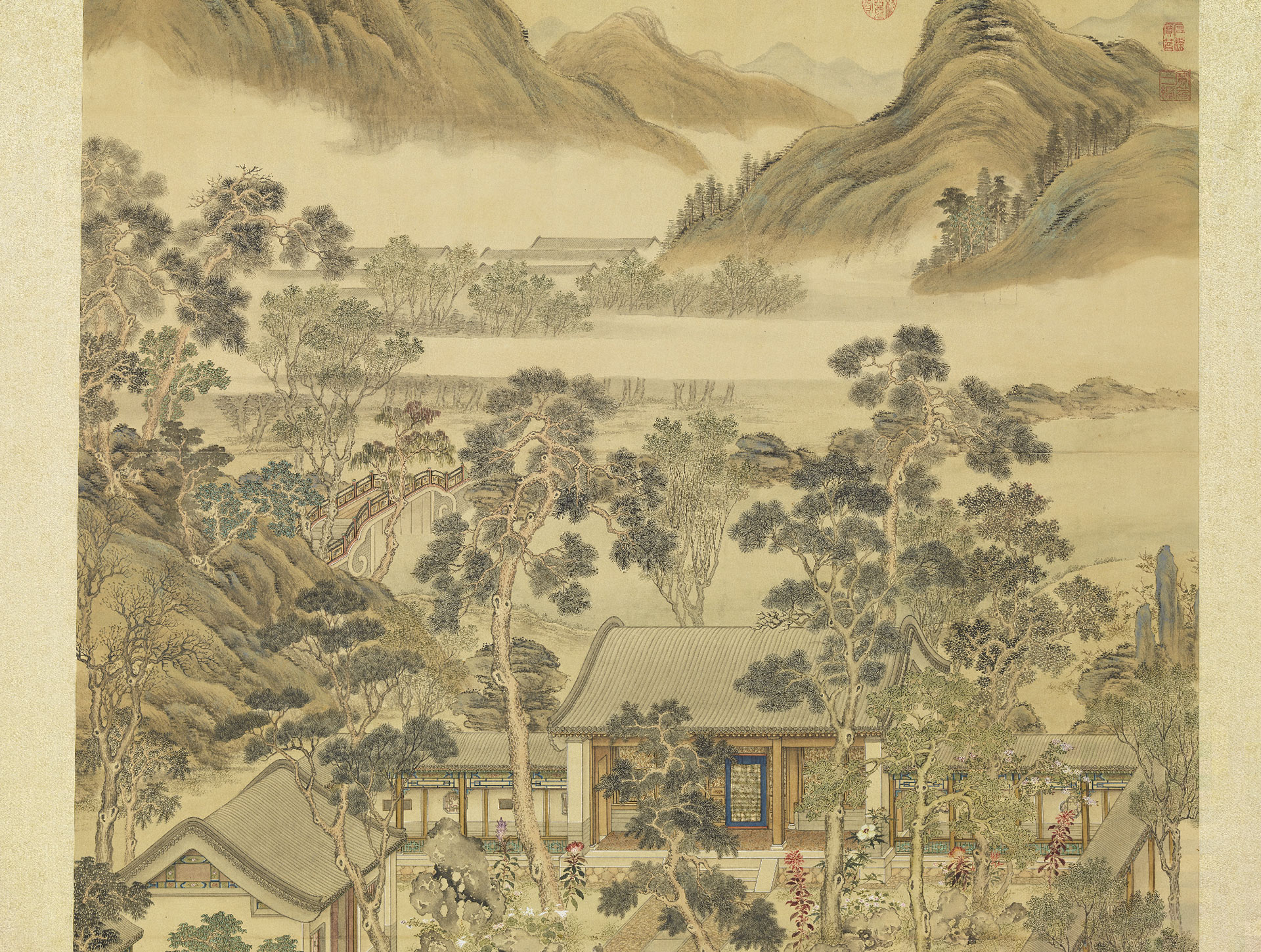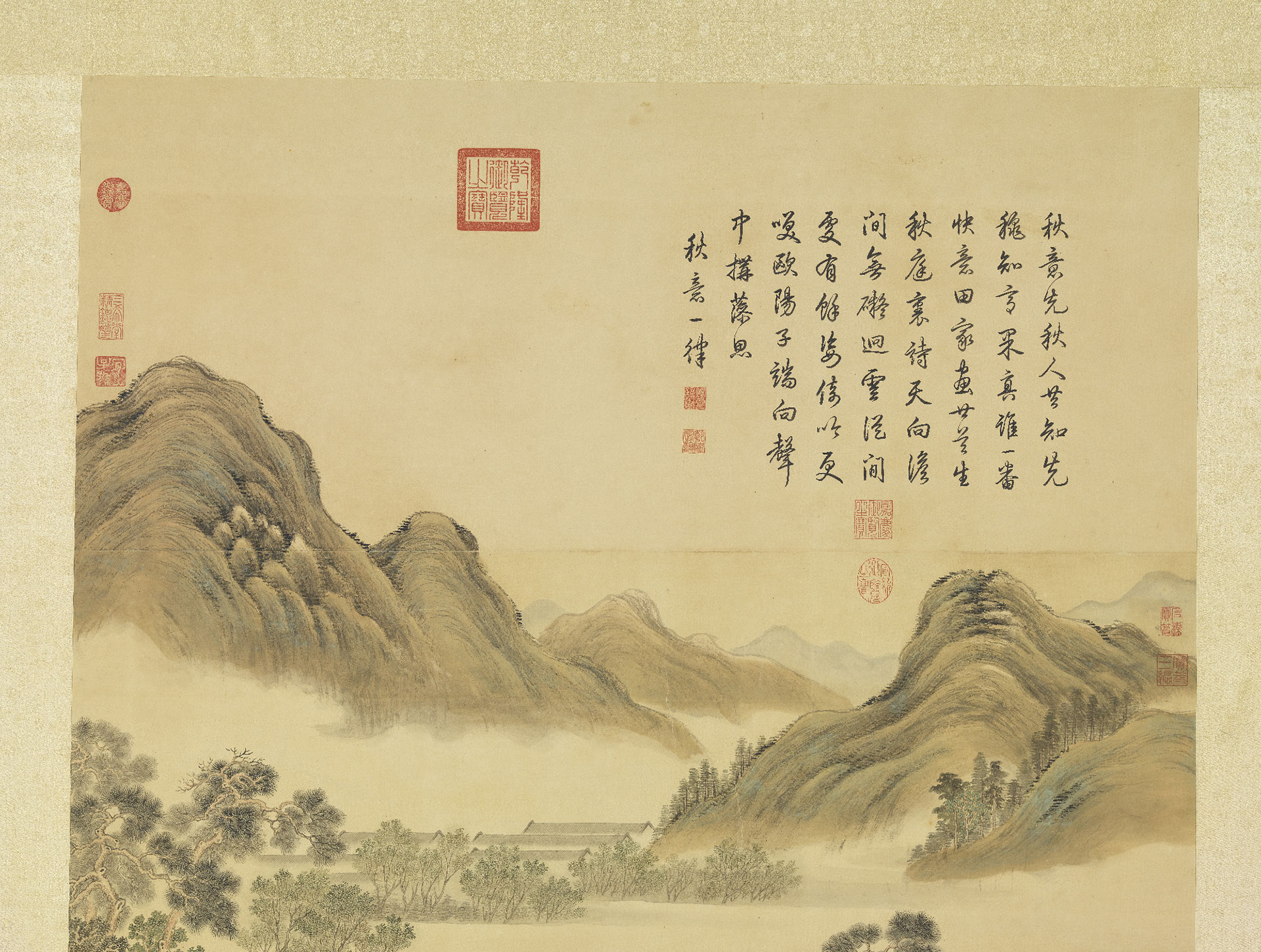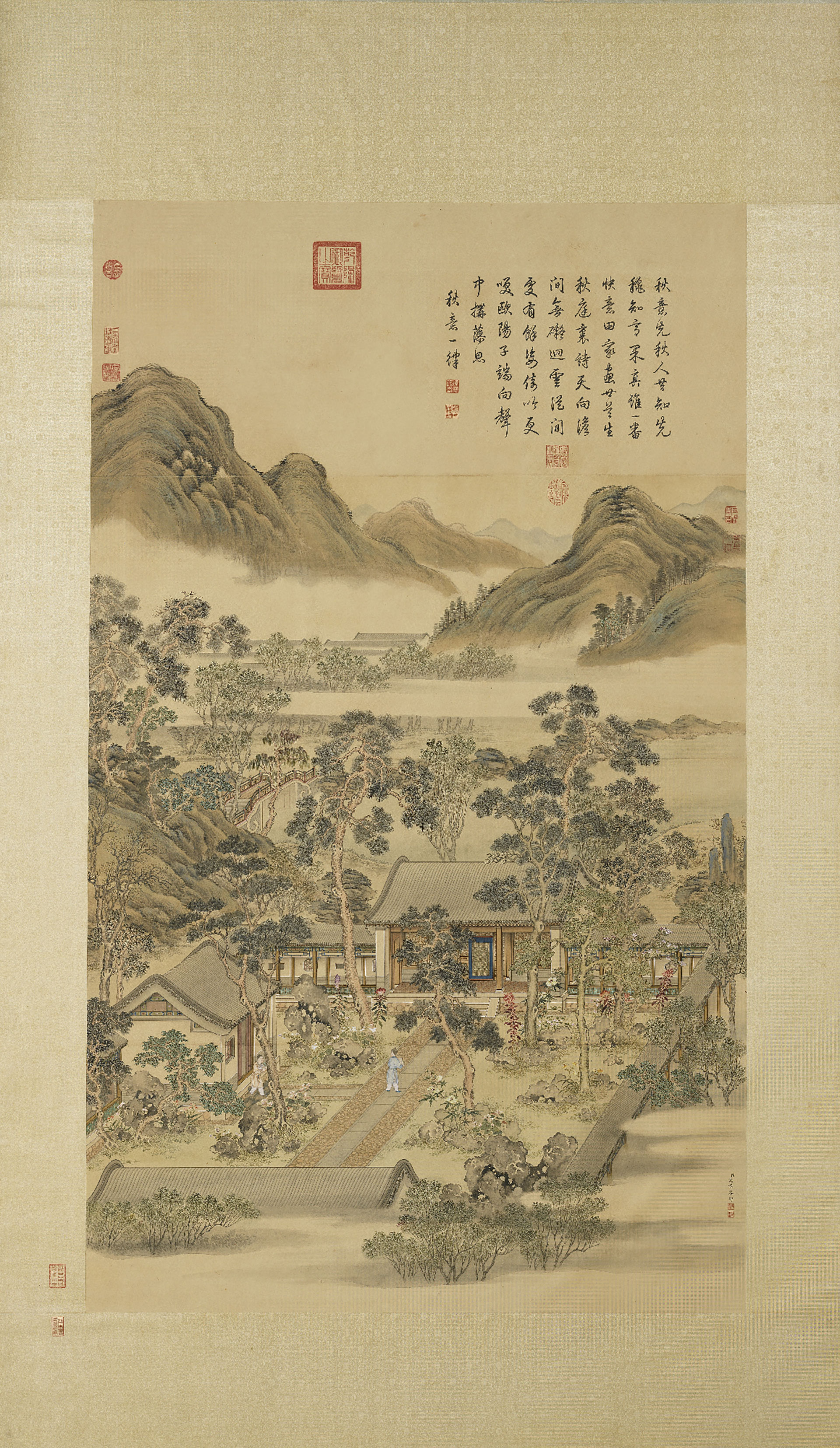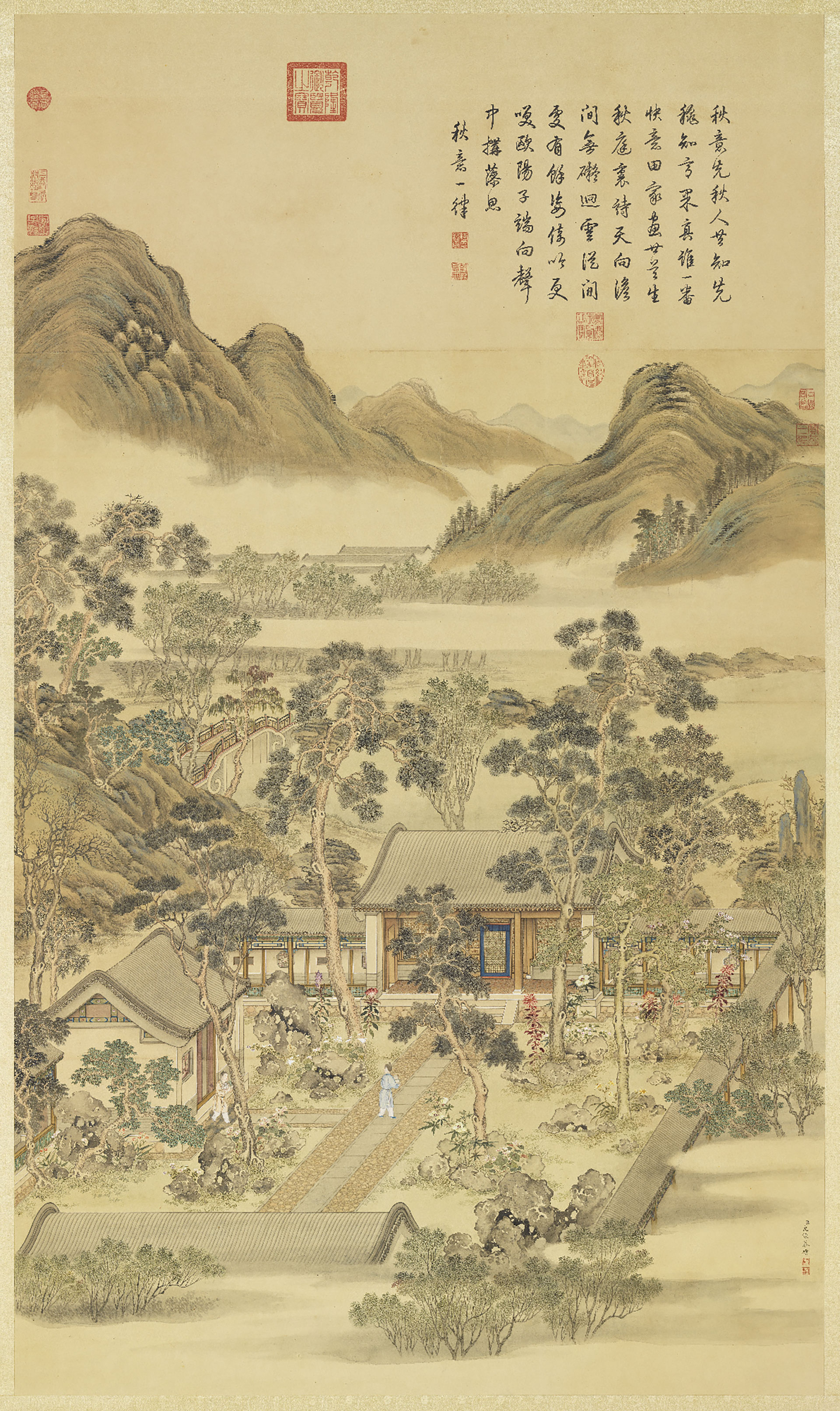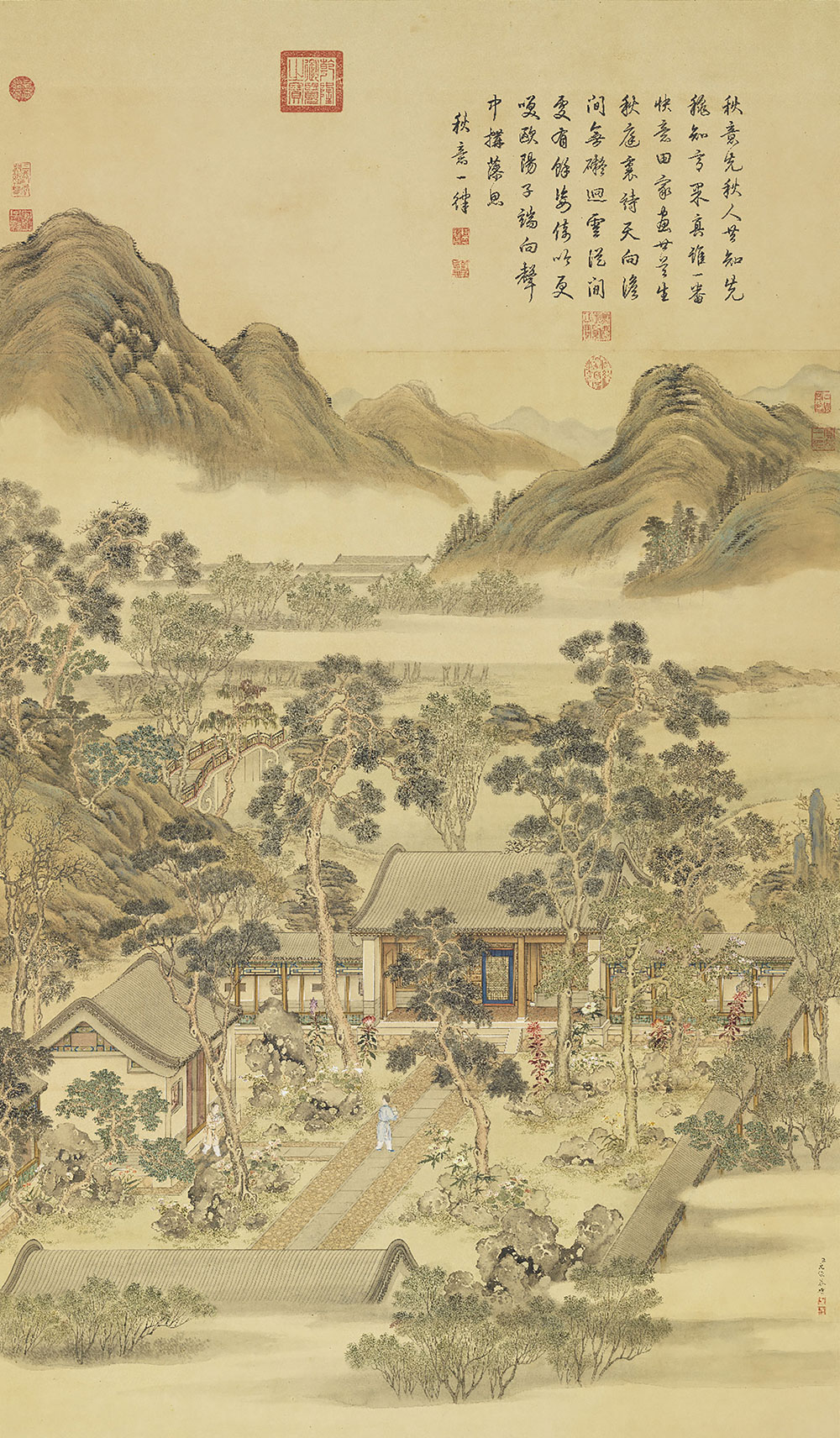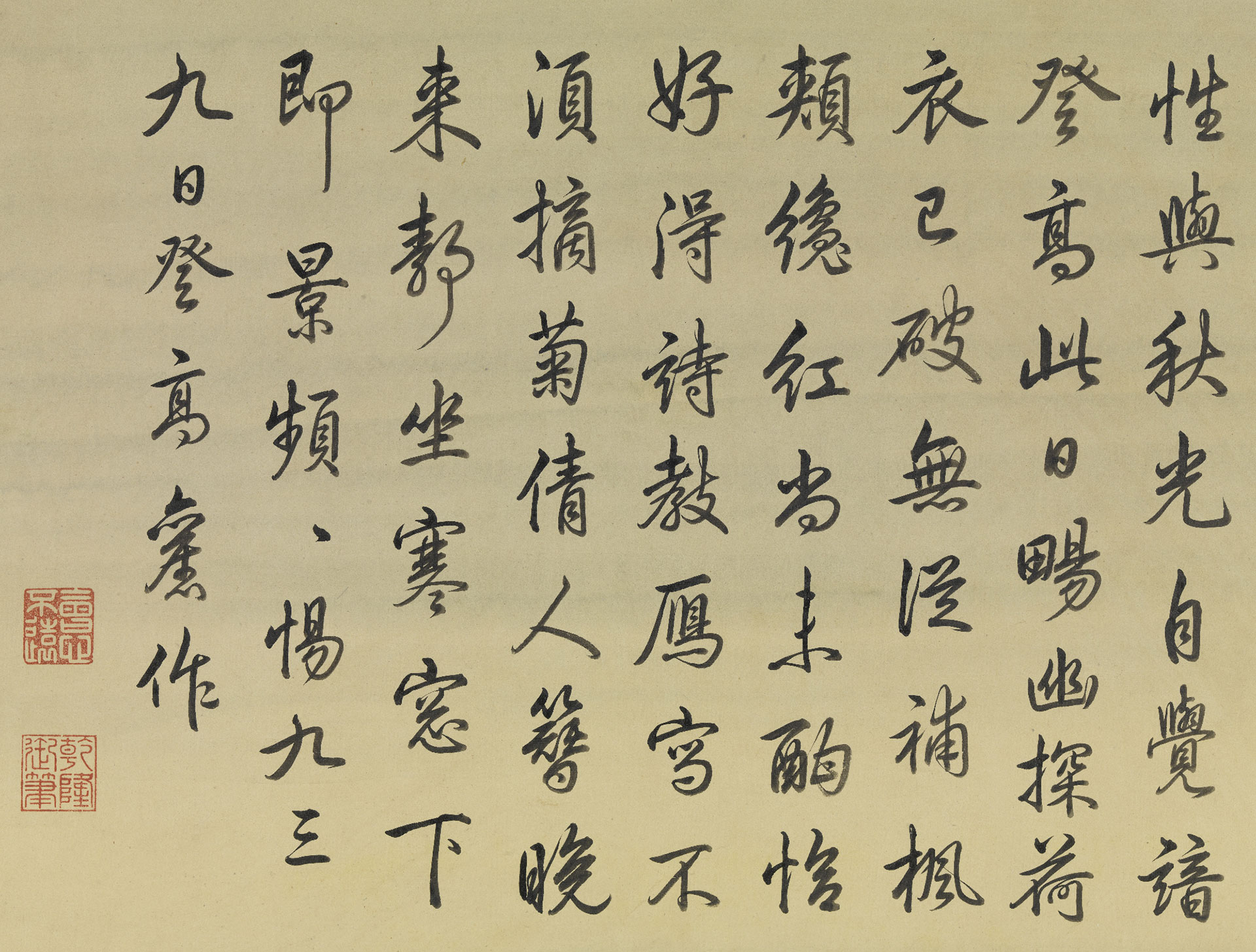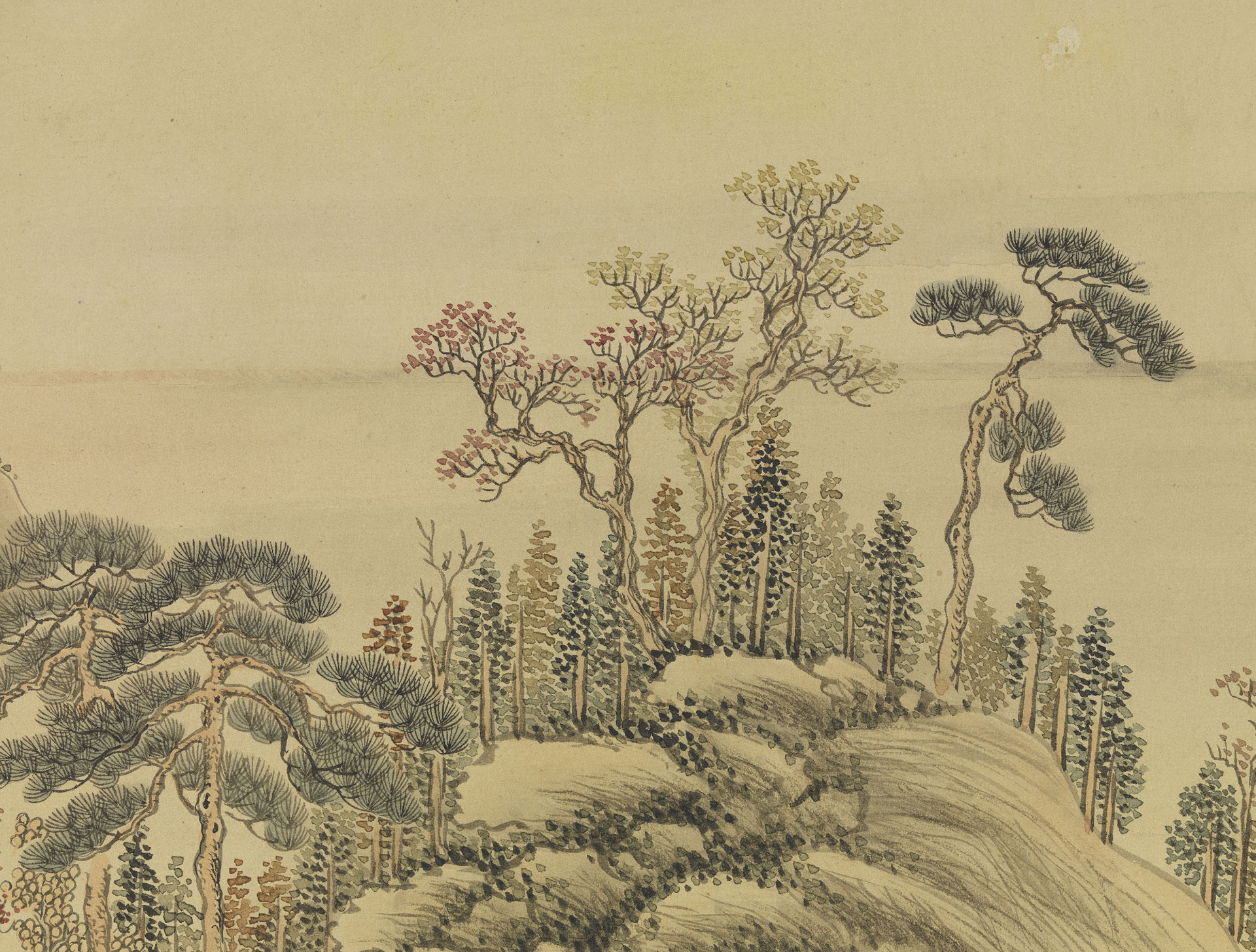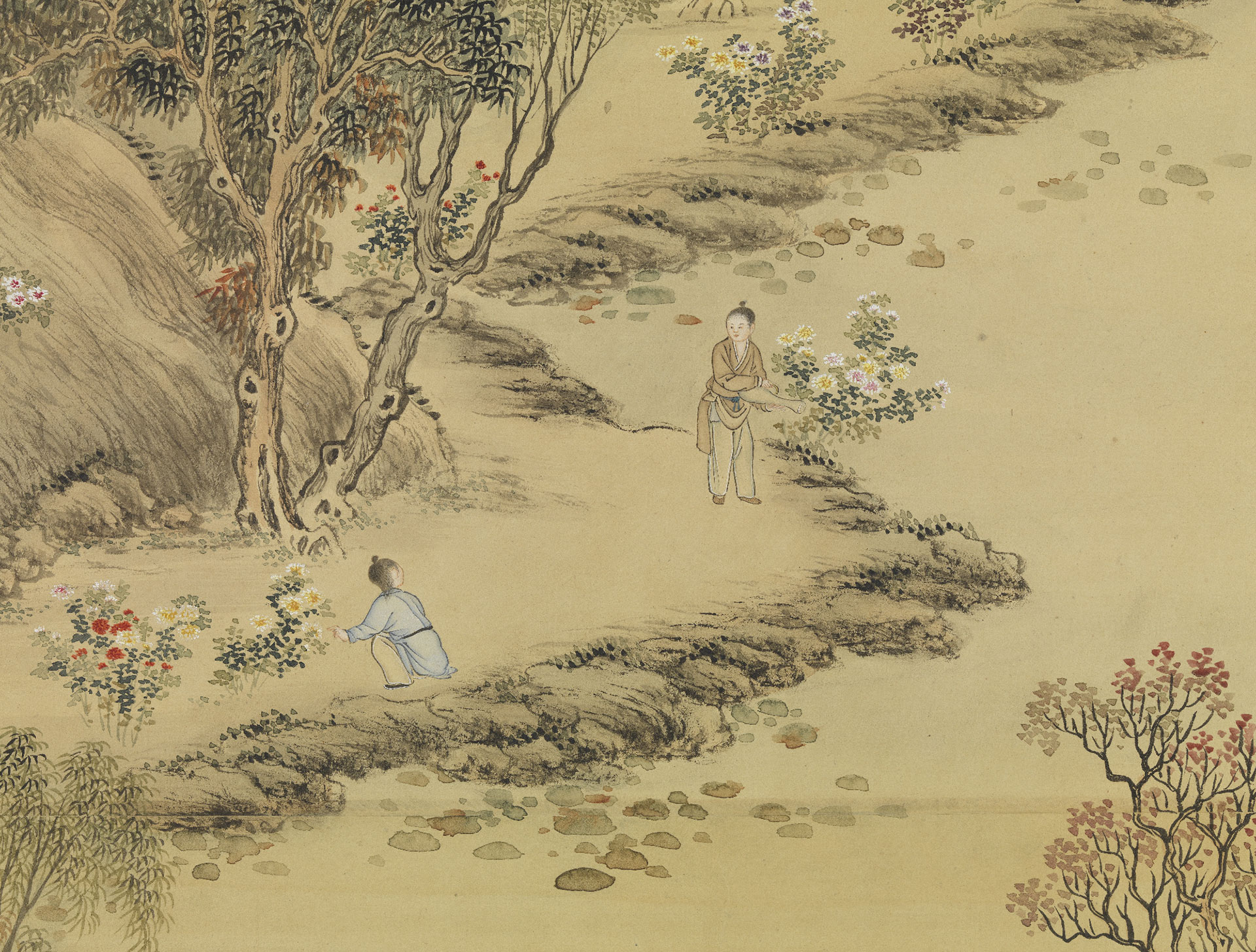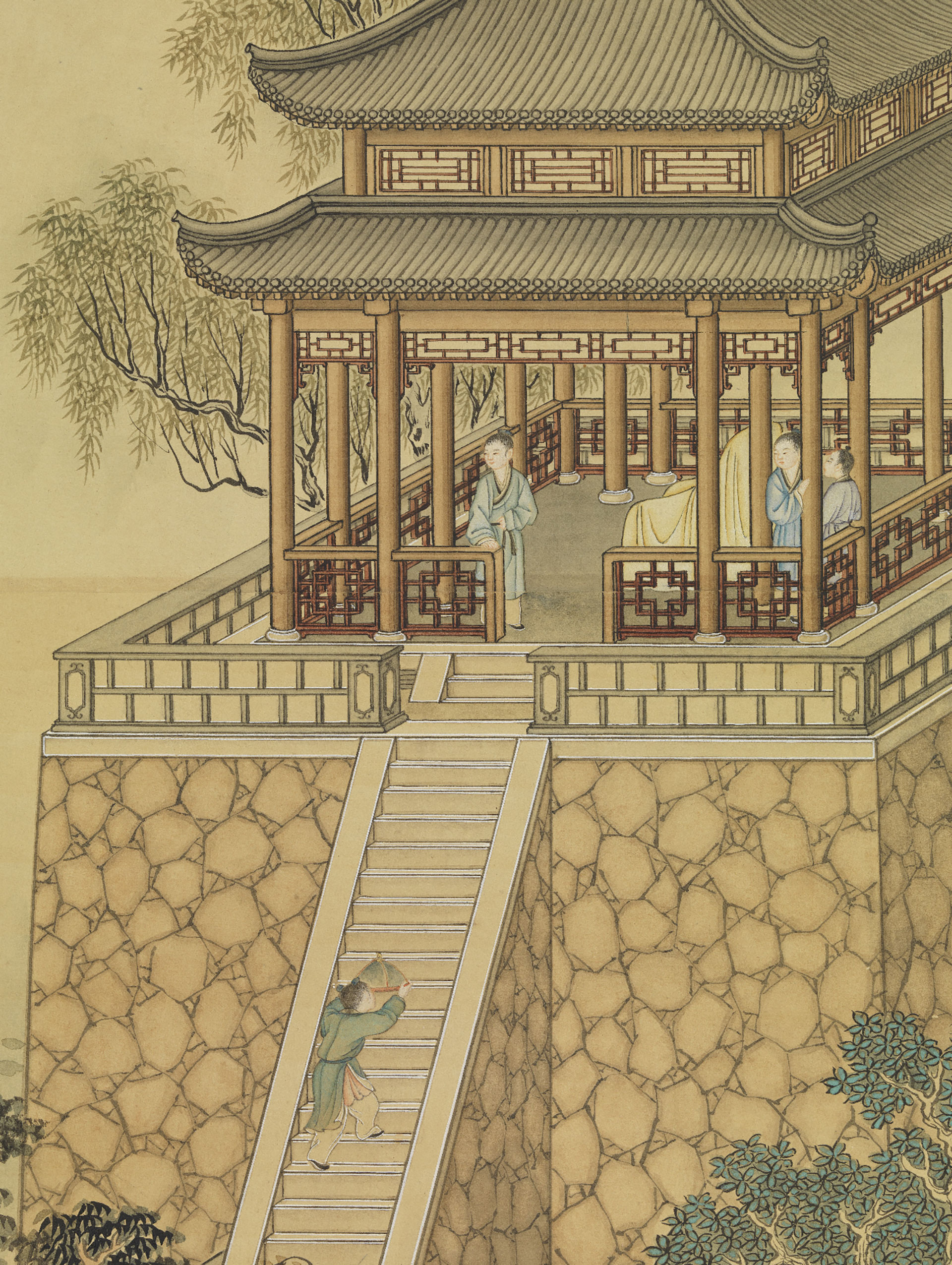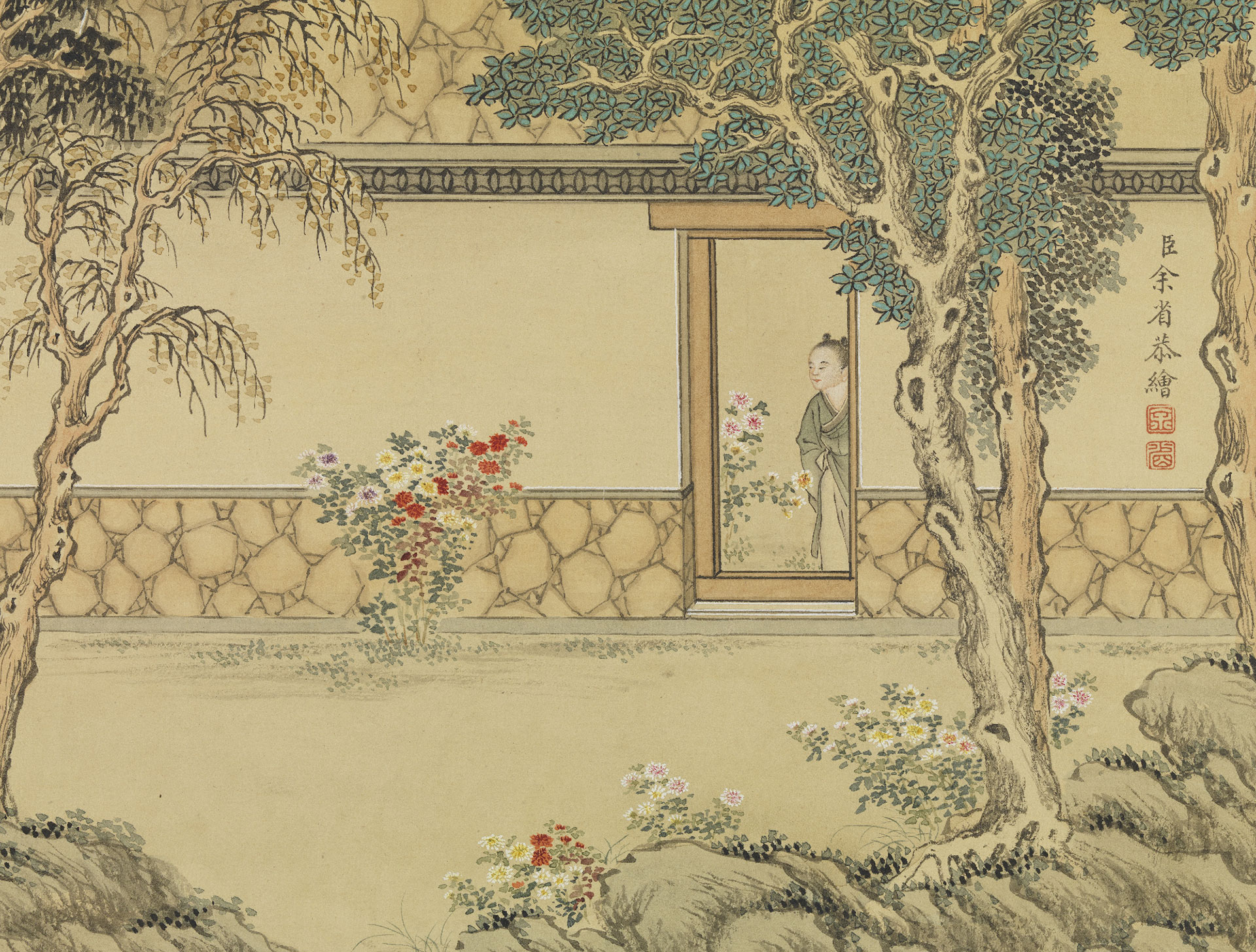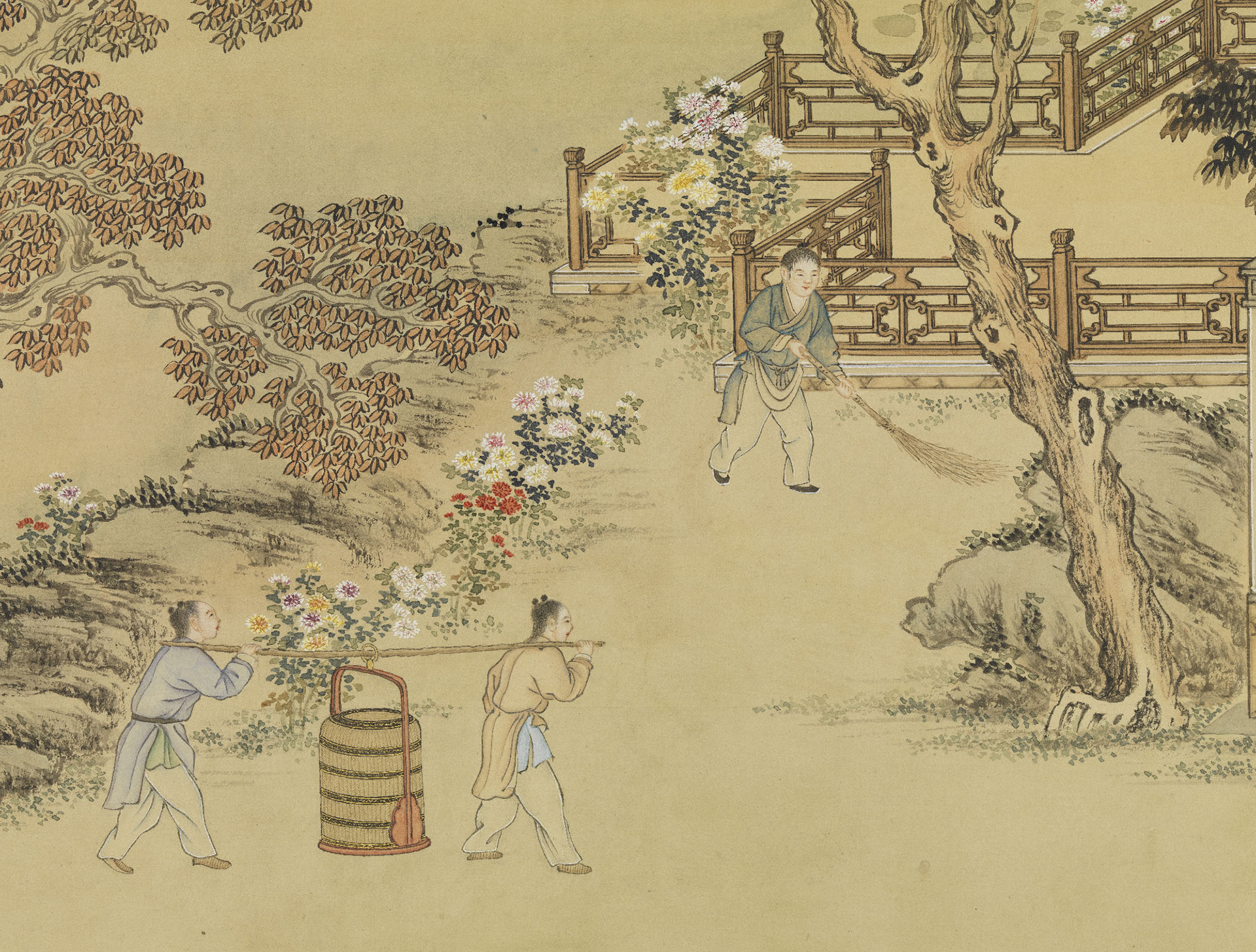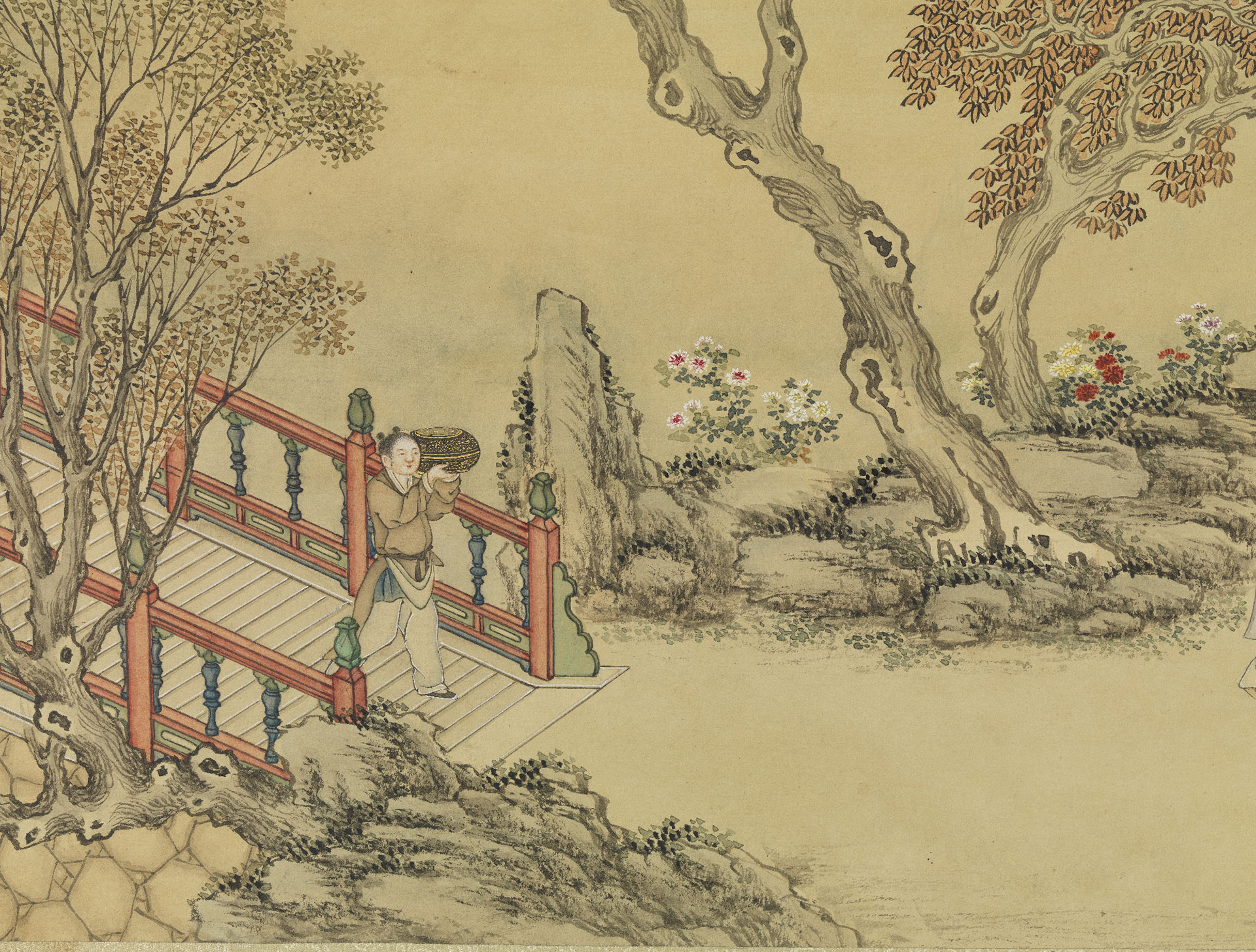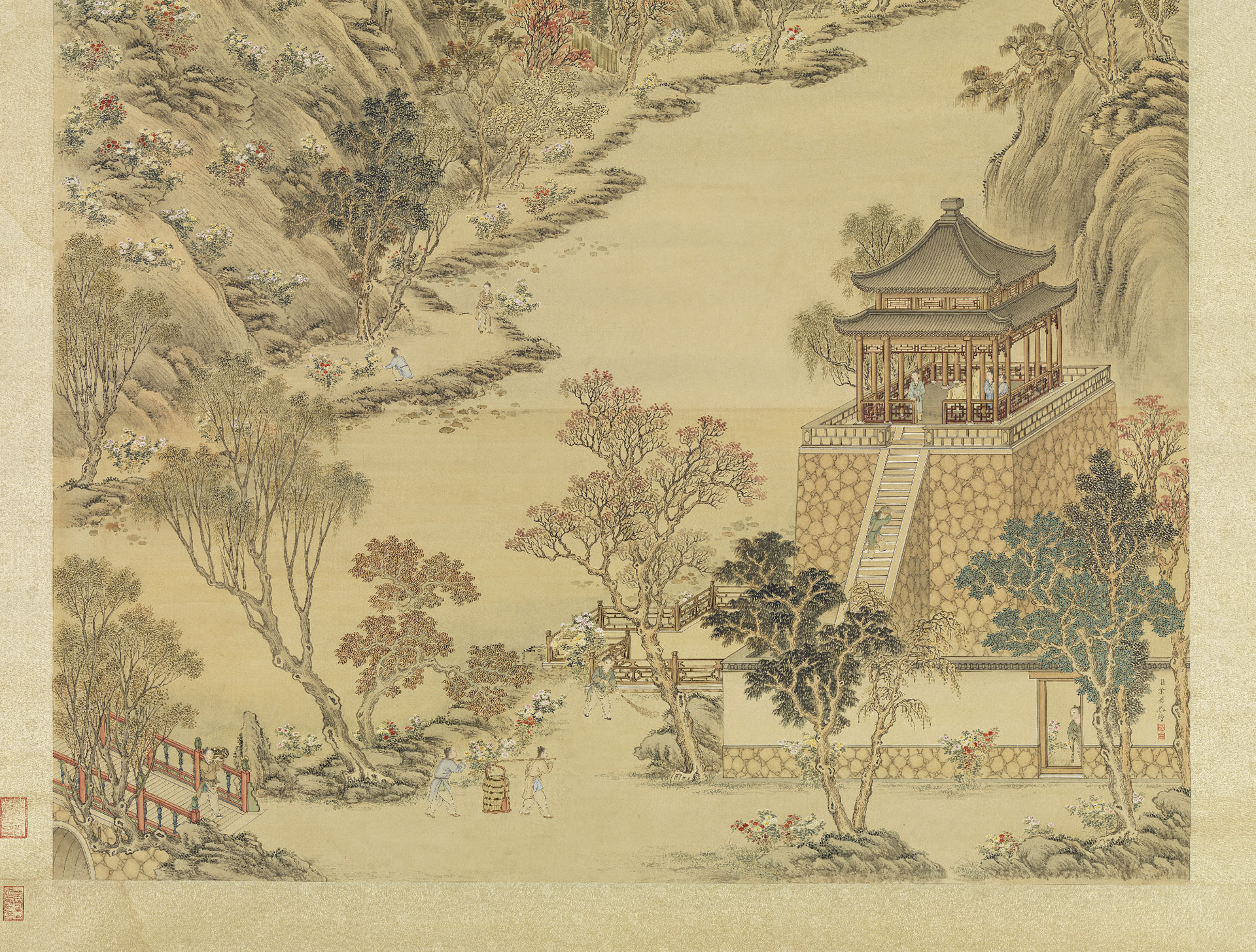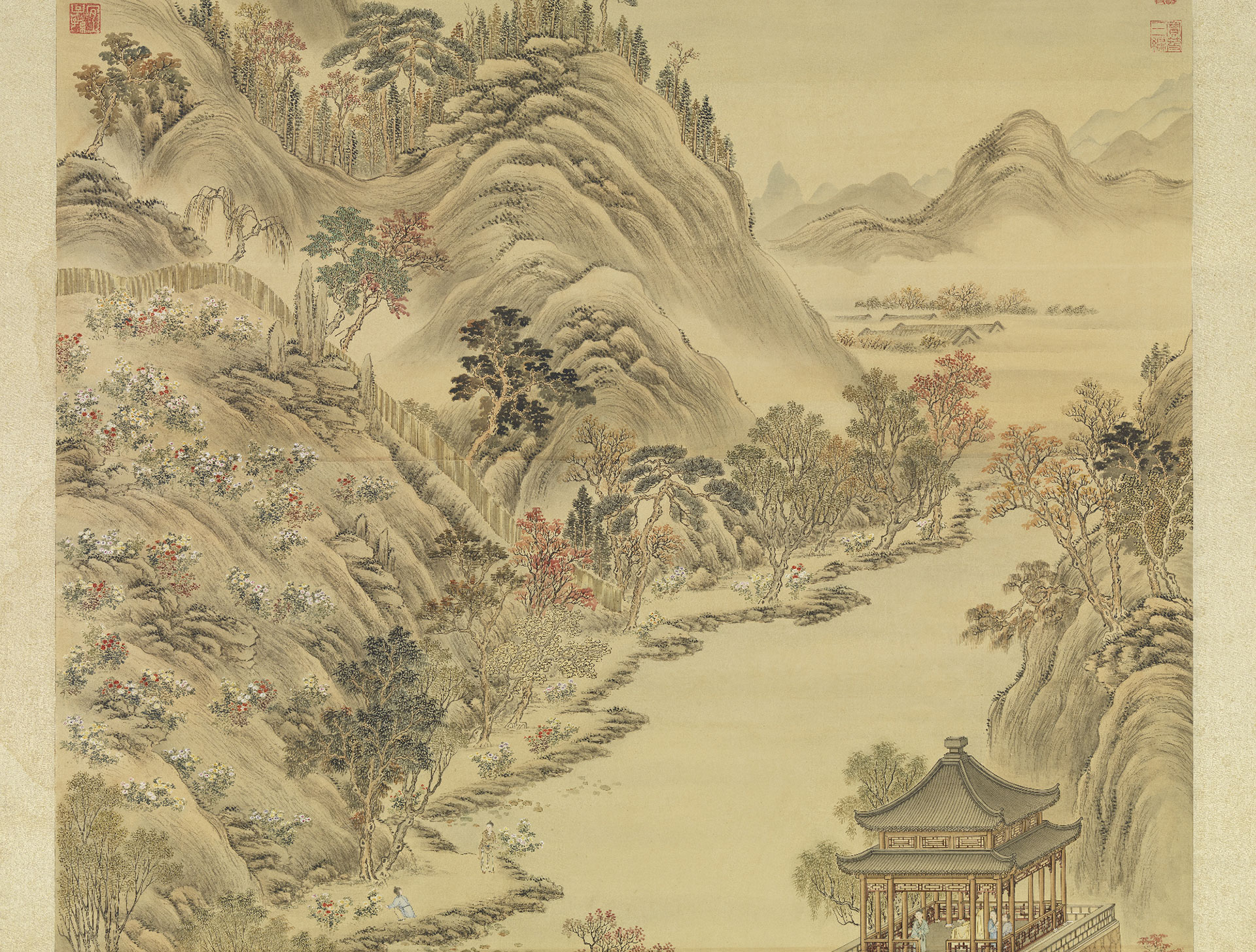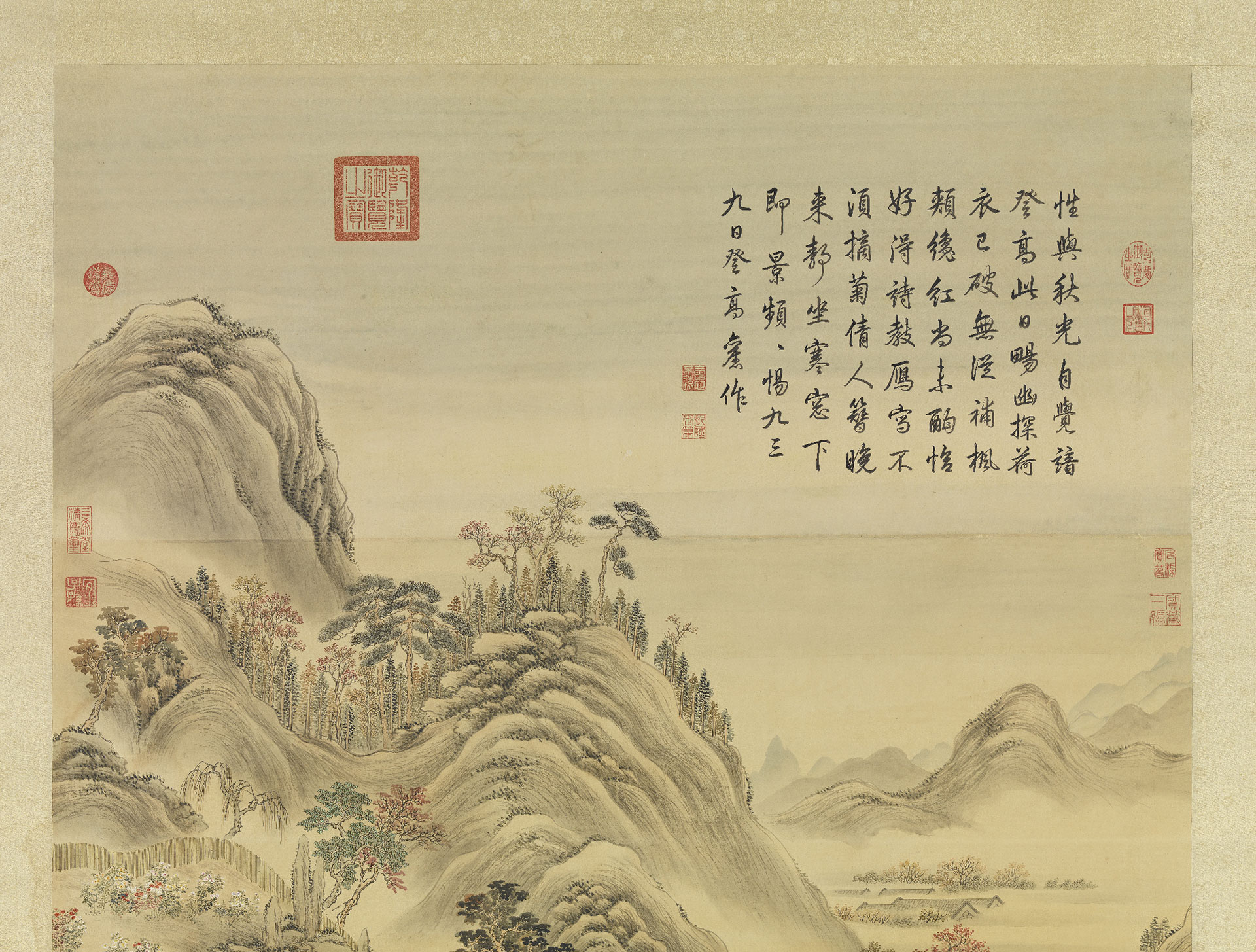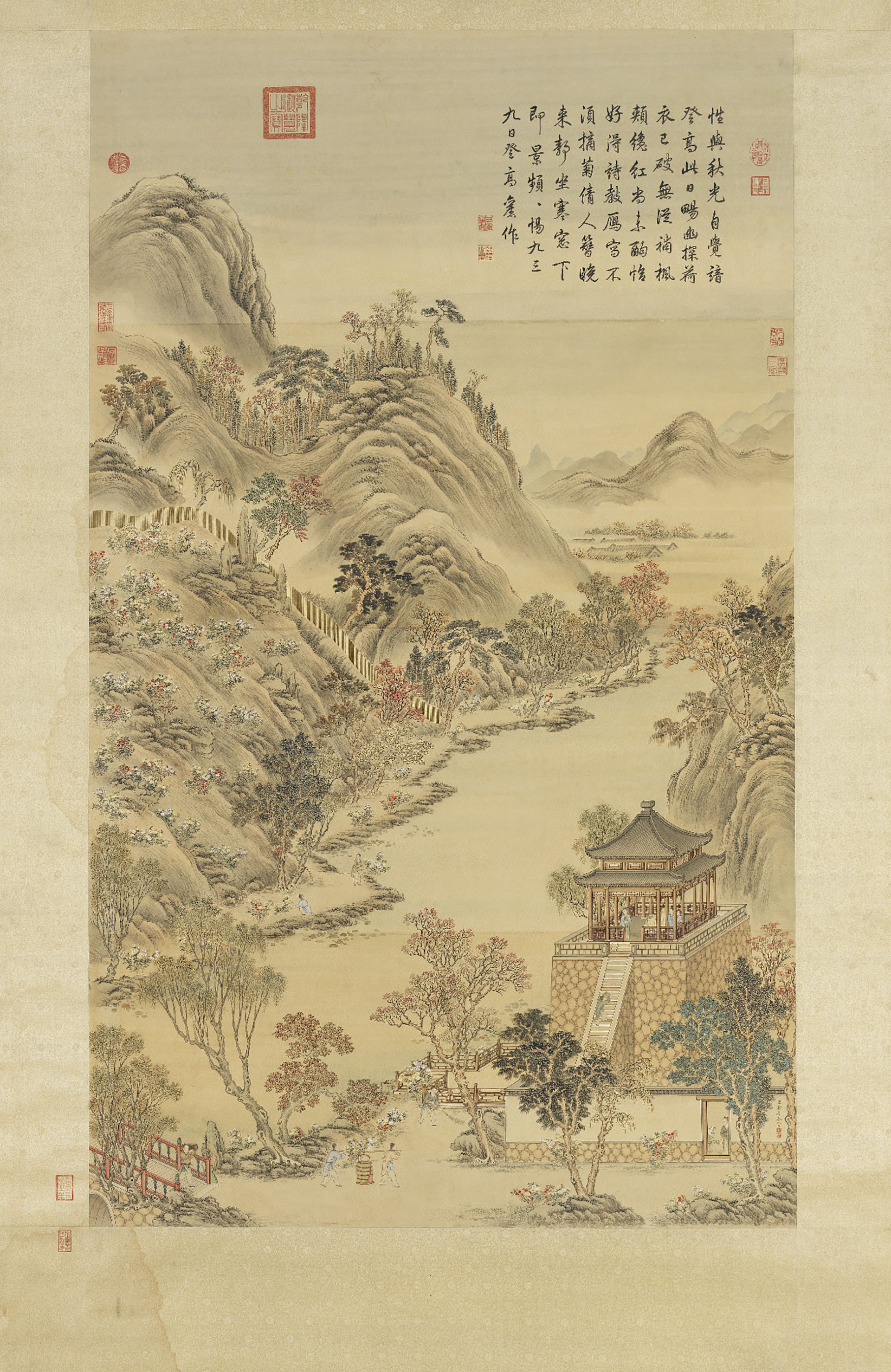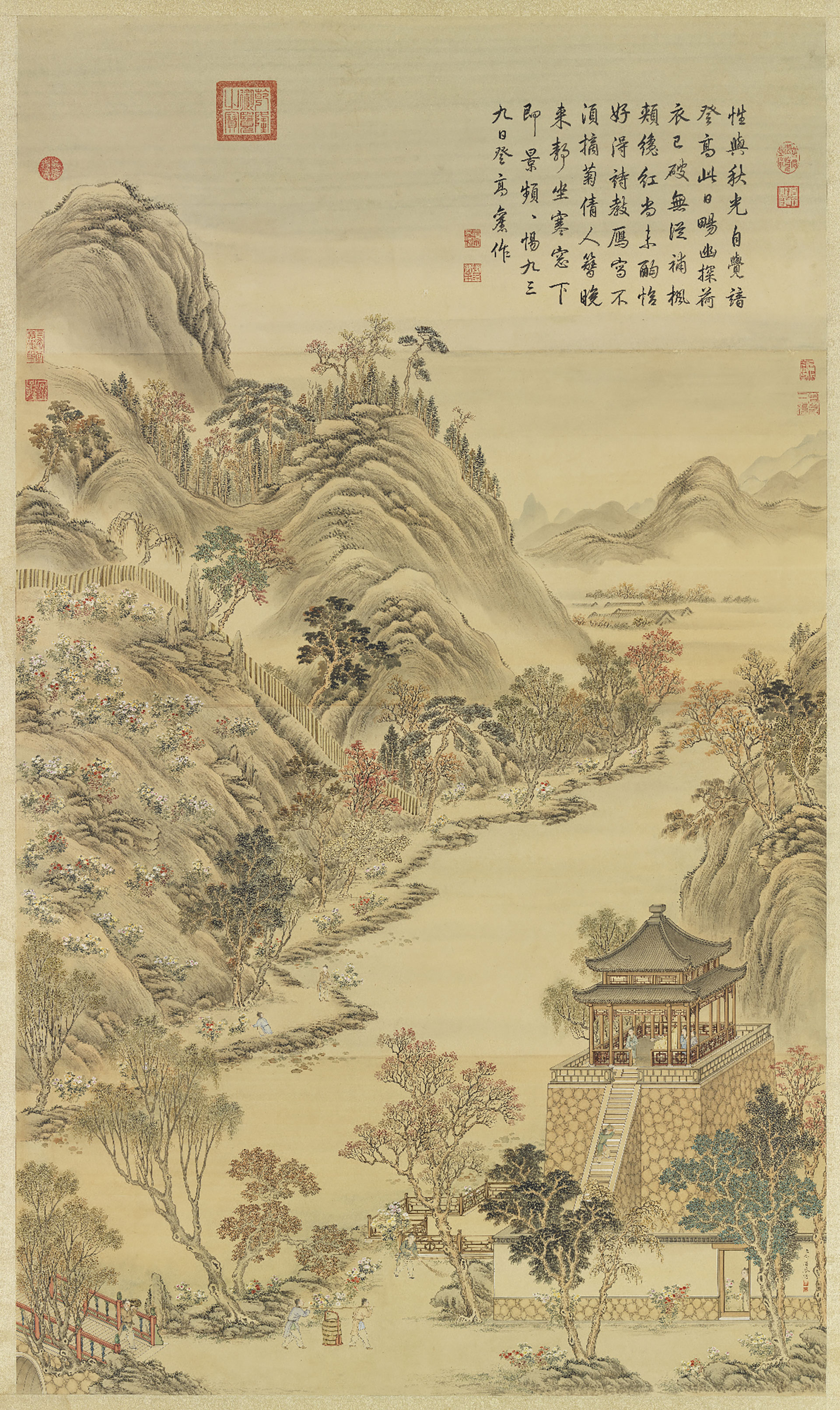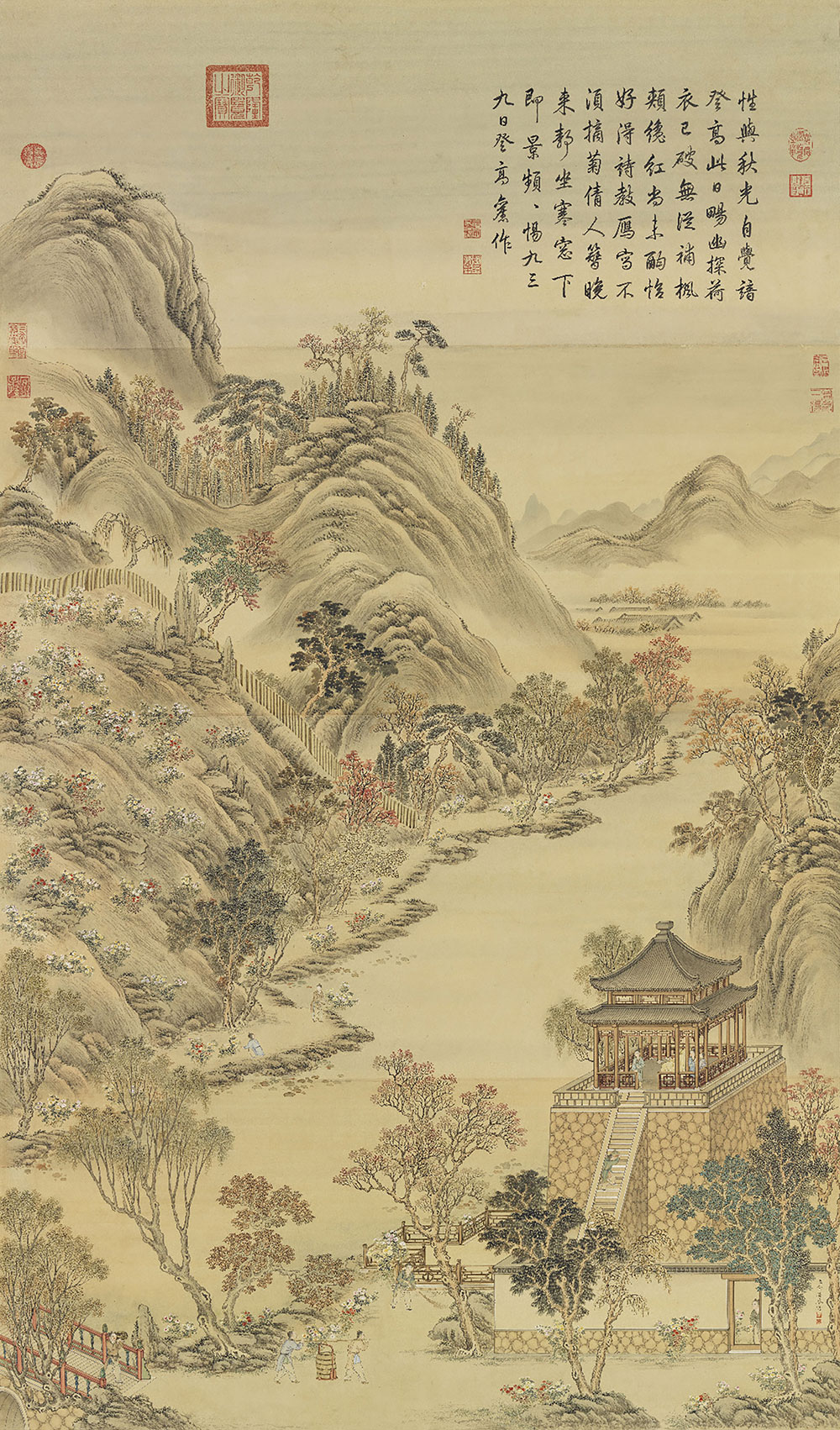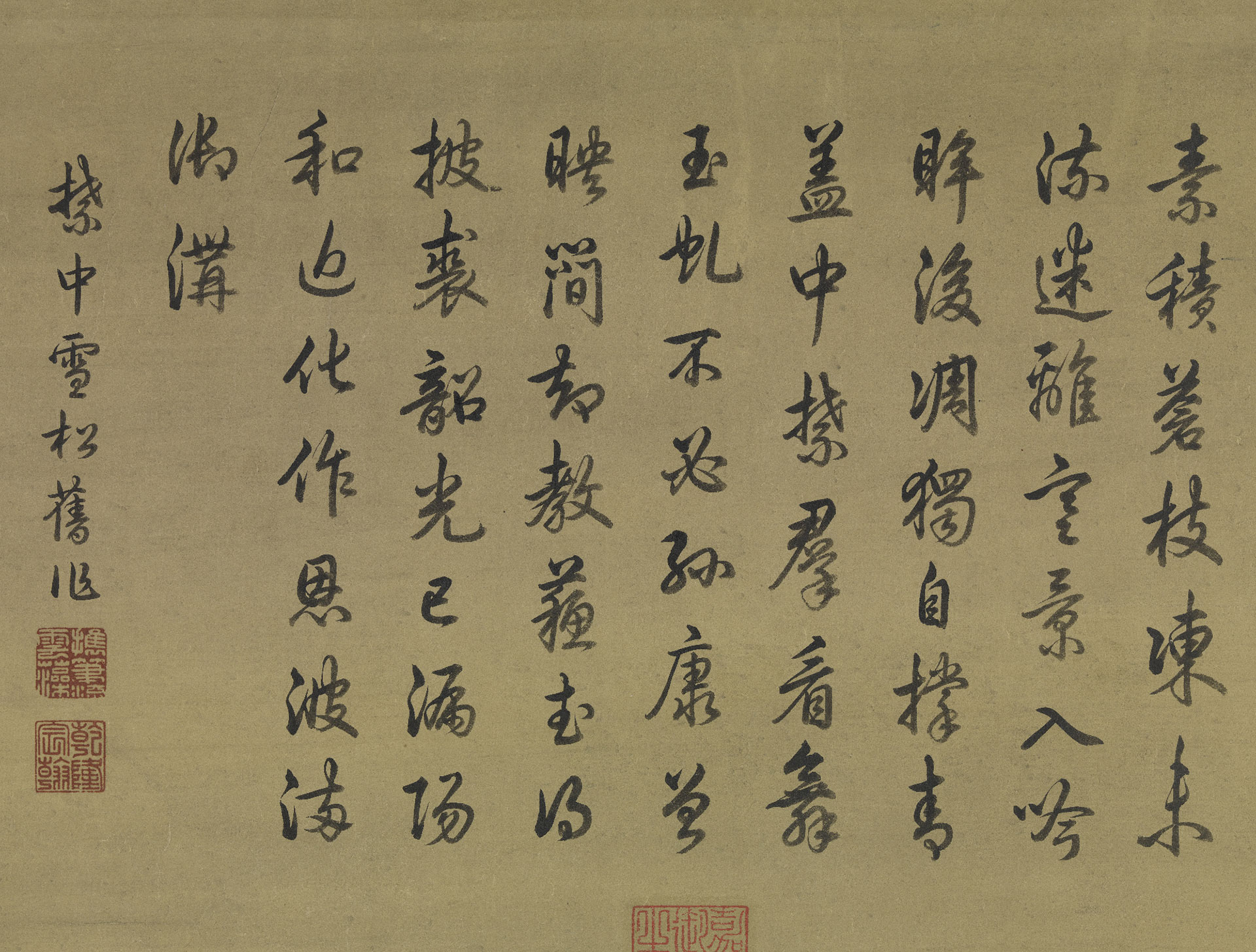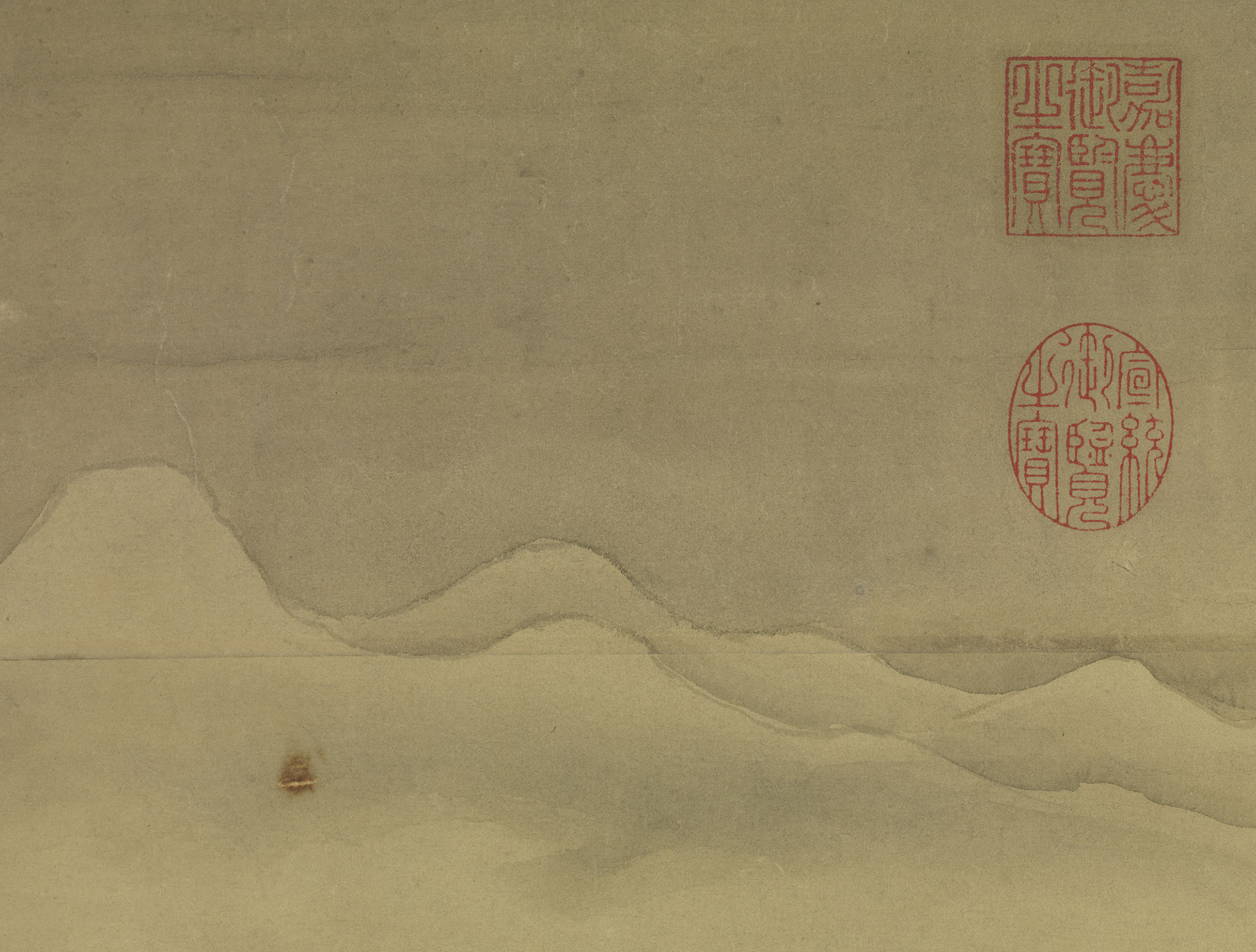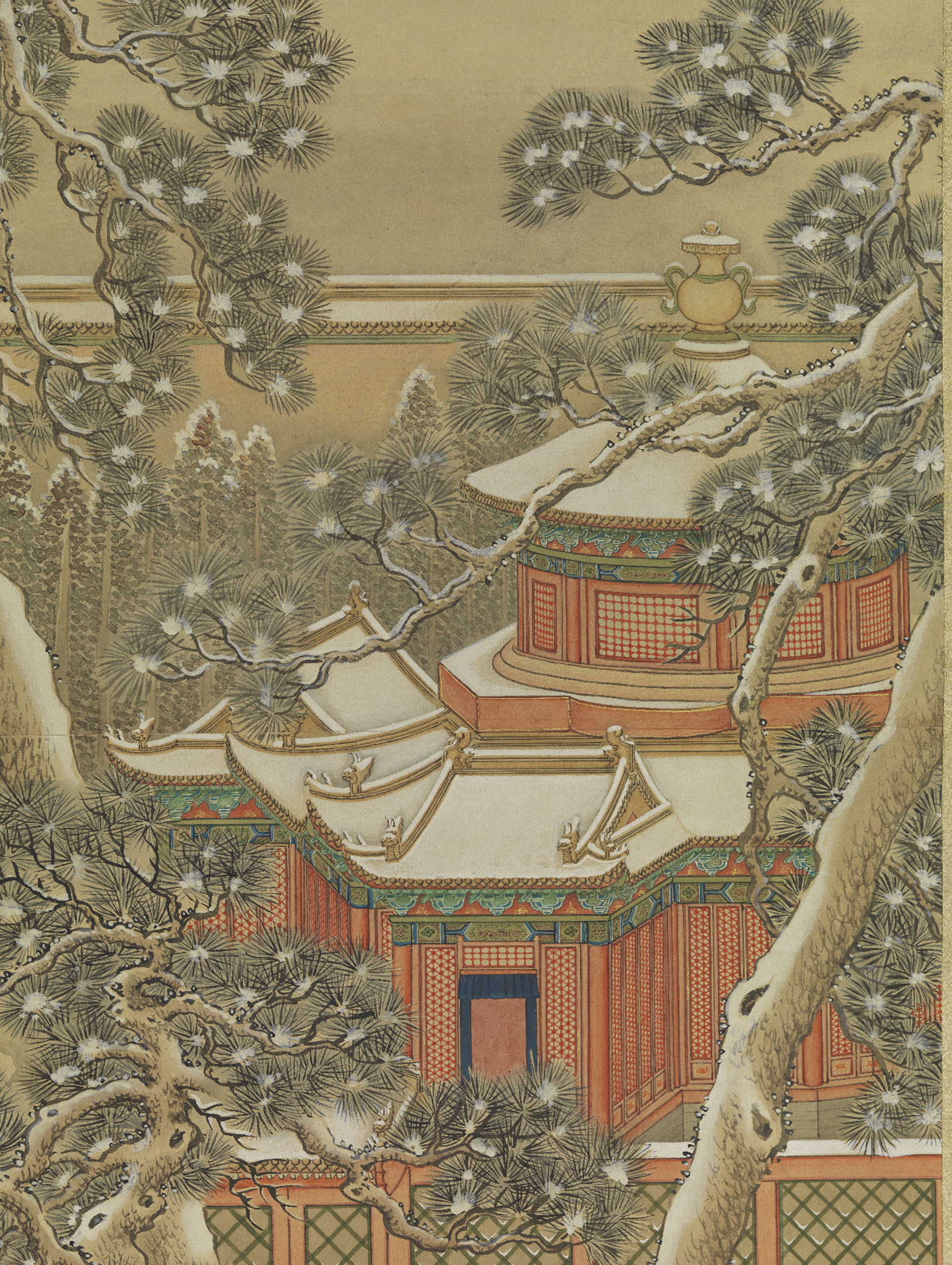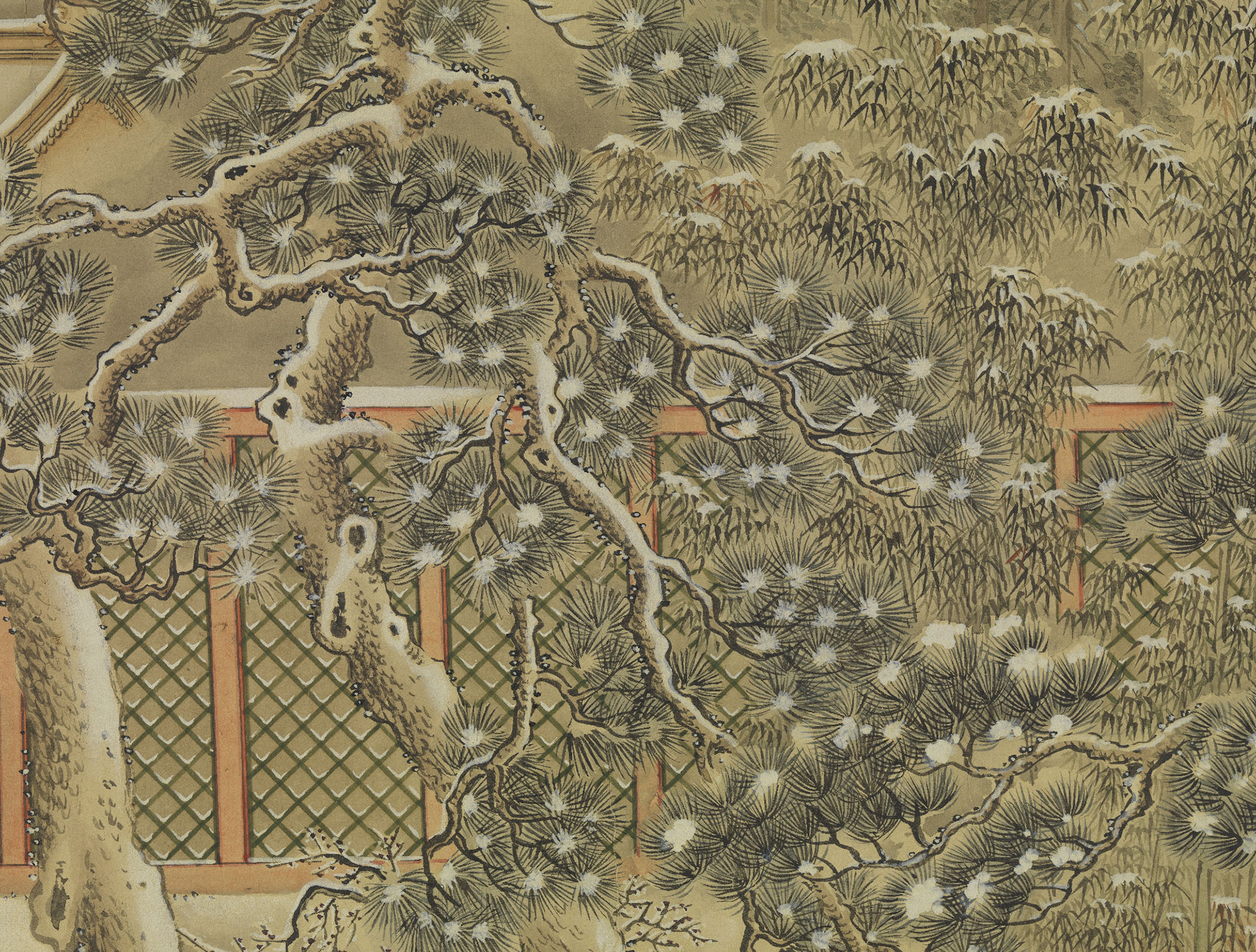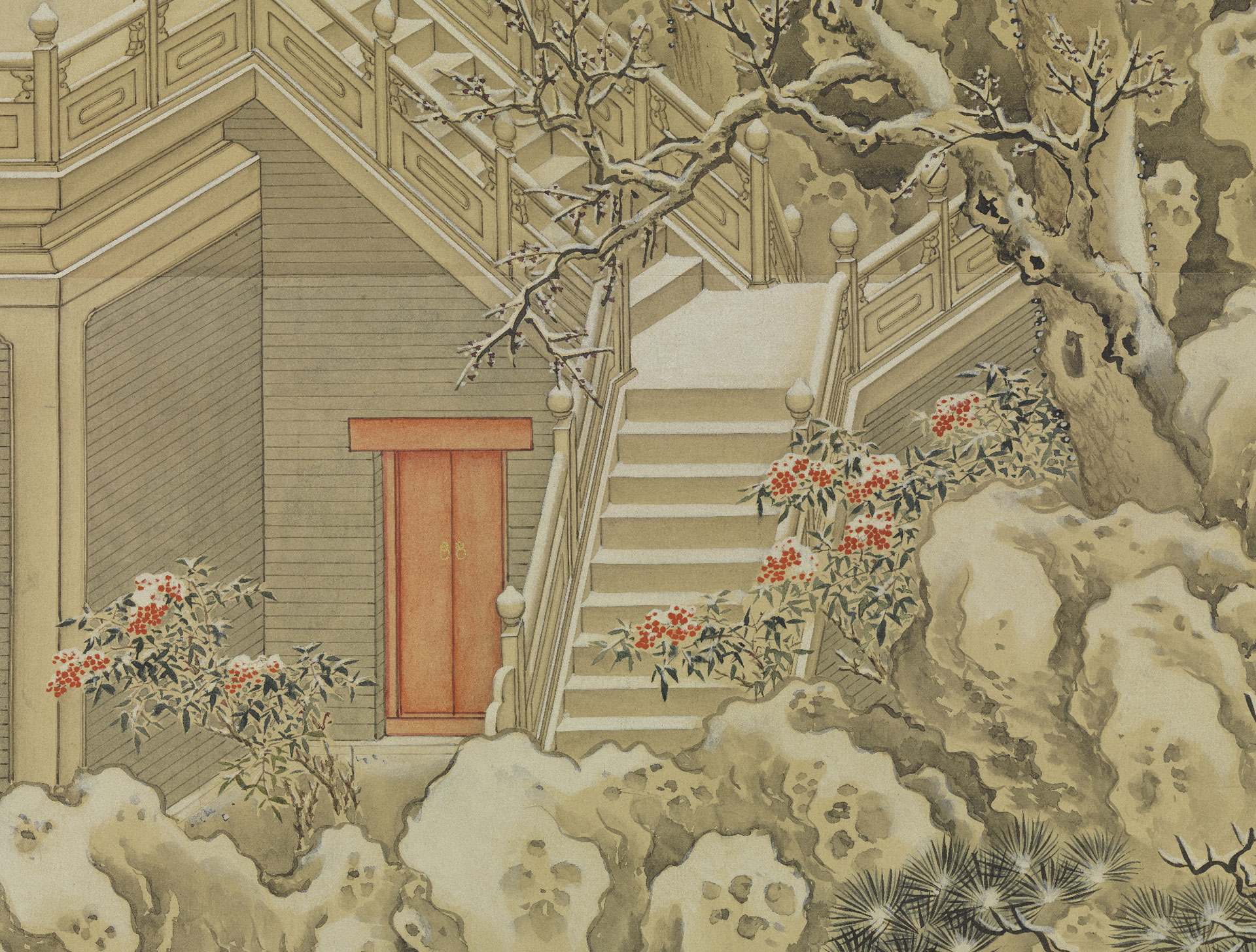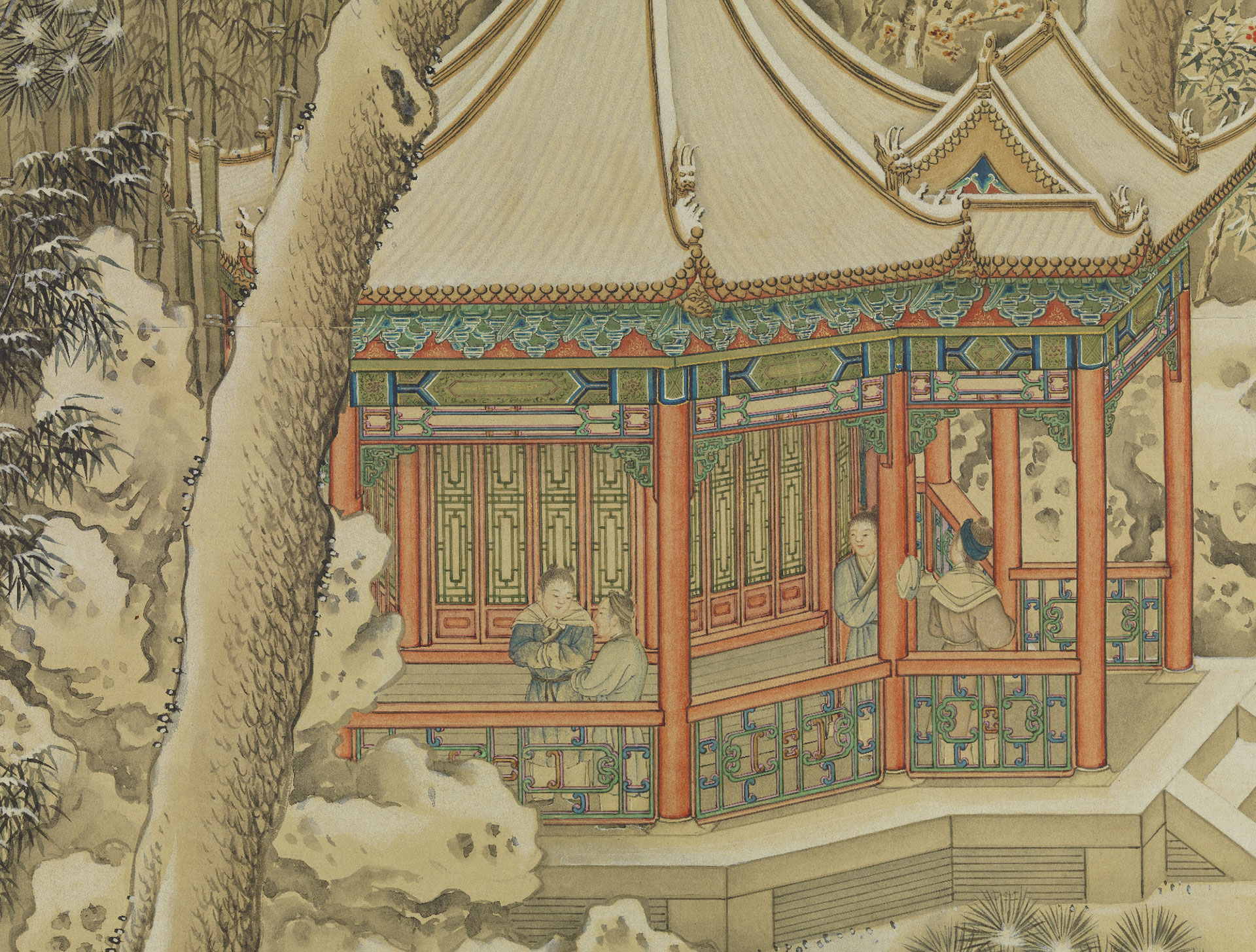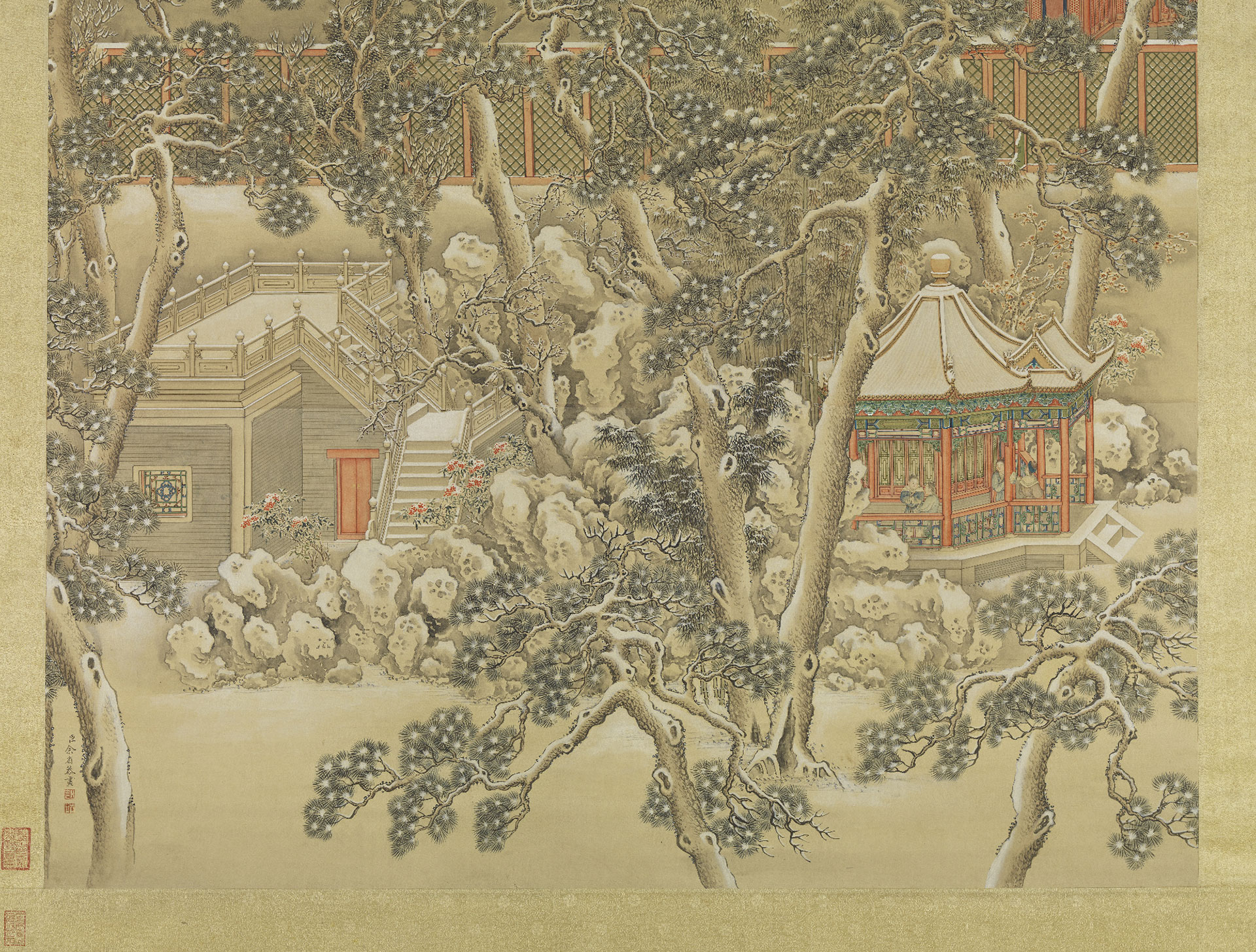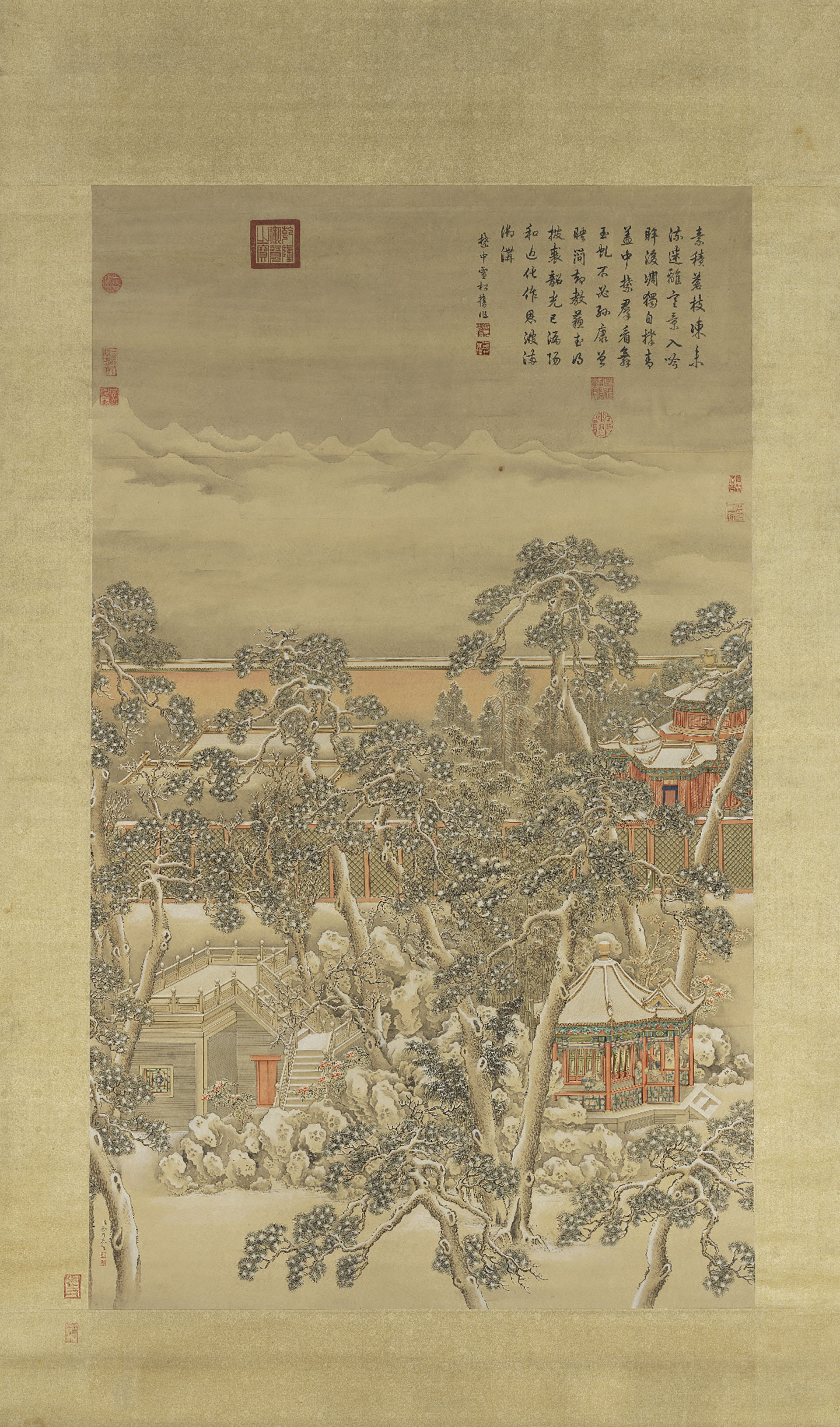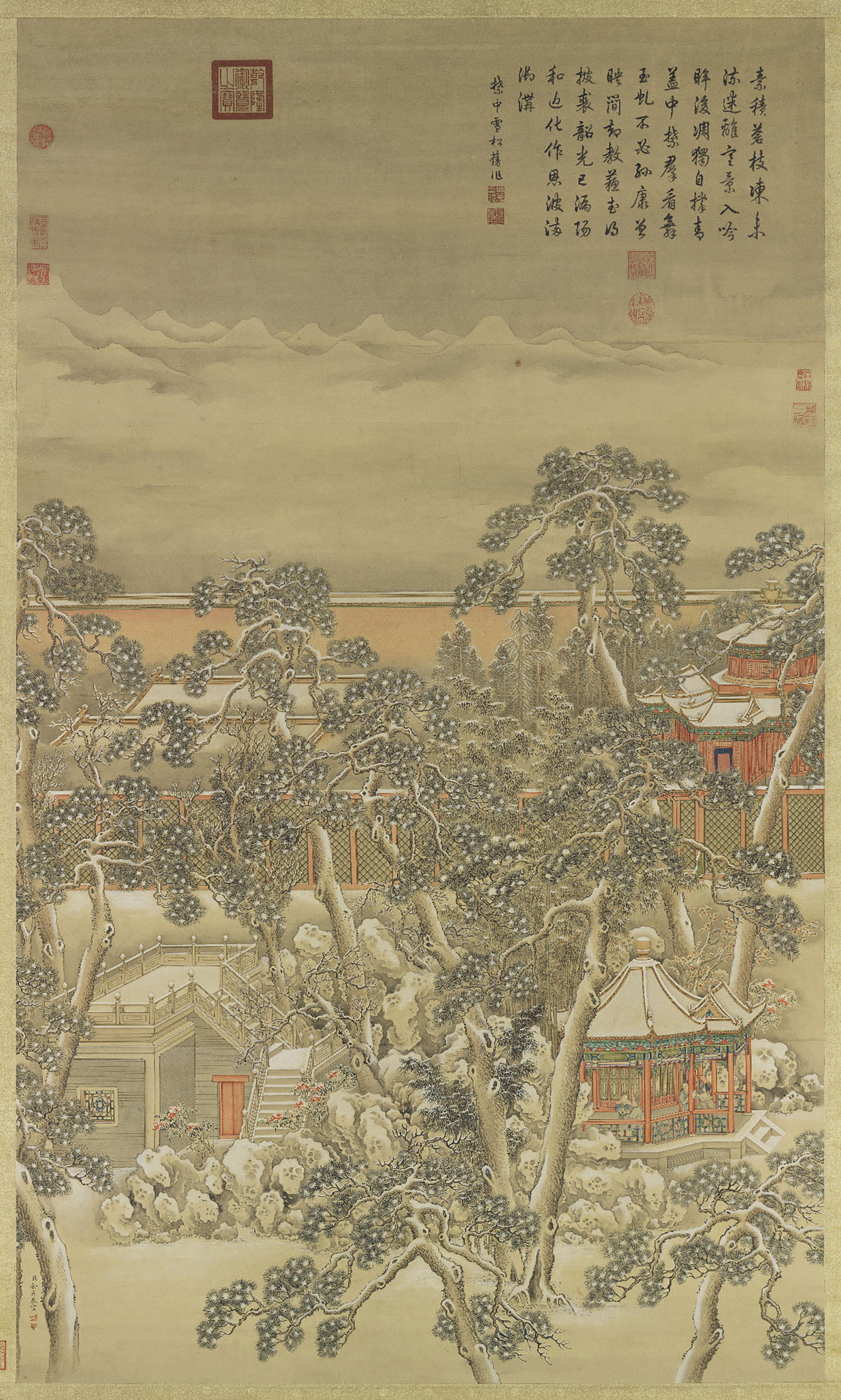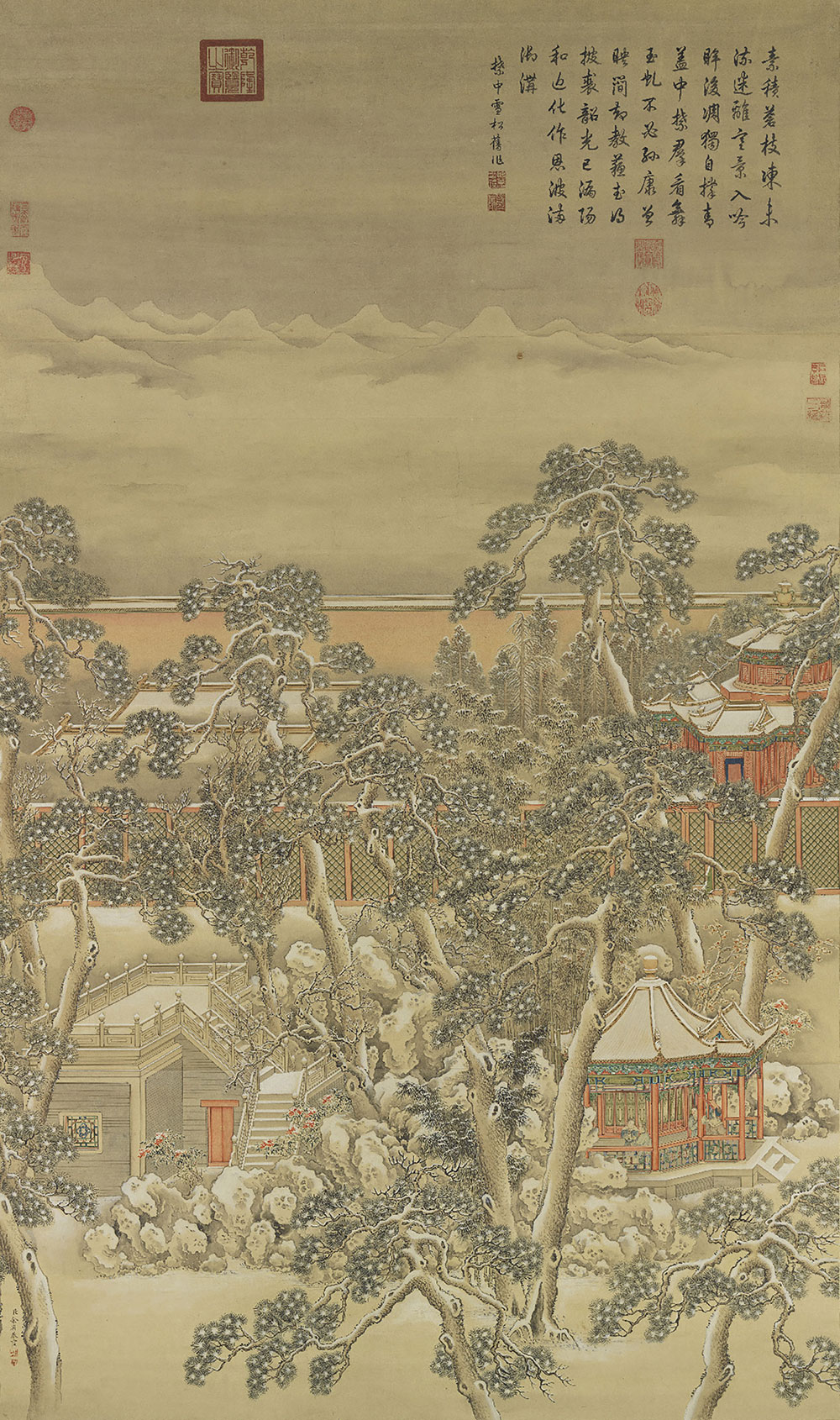Transplanted into the Imperial Gardens
In order to furnish the emperors’ flower appreciation and palace decoration needs, each month barges traversed the canal connecting southern China to Beijing. These barges were responsible for delivering seasonal flowers and fabrics woven in the region south of the Yangtze River to the “Southern Gardens” in the Forbidden City. In addition to importing flowers and plants from southern China, the emperors would also have flowering plants from northern regions transplanted into the Forbidden City and the Chengde Mountain Resort. Specimens included the thousand-petal lotus from Aohan County in Inner Mongolia and the golden lotus (Trollius chinensis) from the high mountains of northern China. By observing the conditions in which imported flowers and plants arrived in the capital, the emperors were even able to indirectly ascertain the climate conditions of the faraway regions in which they originated.
These flowers and plants from the empire’s different latitudes and altitudes were meticulously cared for by imperial palace florists, who even set up greenhouses to protect the plants in wintertime or control the timing of their blossoming. These florists overcame the challenges of “non-acclimatized” plants, helping them to bloom ravishingly. These blossoms reflected that the palace florists successfully grasped the plants’ unique characteristics as well as the techniques needed to create hospitable environments for them.
Emperor Qianlong (1711-1799) once issued an order for four court painters to create twelve paintings depicting twelve different scenes from the imperial gardens, with each painting to be matched with a different poem written by the emperor. The fruits of this effort are the “Twelve Scenes in the Imperial Palaces,” each of which are named after one of the “twelve notes” in classical Chinese music, namely huangzhong (unison), taicu (major second), guxian (major third), ruibin (tritone), yize (minor sixth), wuyi (minor seventh), linzhong (perfect fifth), nanlü (major sixth), yingzhong (major seventh), dalü (semitone), jiazhong (minor third), and zhonglü (perfect fourth).
Take a close look at the flowers blooming in the gardens—do they help you to guess which month is being depicted in each painting?
- Harmonious Beginnings in Taicu, the First Lunar Month
- Ding Guanpeng, Qing dynasty
- Silk
The note taicu (or “major second”) in classical Chinese musical notation can symbolize the first month of the lunar year. This painting uses a bird’s-eye view to depict the Jianfu Palace inside of the Forbidden City, as well as the street running in front of Jingshan Park just beyond the palace walls. Parts of the city and its fortified walls are covered in thick mists, accentuating the sense of mystery in the imperial palace’s secluded gardens.
Construction of the Jianfu Palace’s gardens began in the fourth year of Emperor Qianlong’s reign (1739) and continued thereafter year by year. As these gardens are located in the northwest quadrant of the Forbidden City, they are also referred to as the Western Gardens. The specific patch of garden in this painting, located in front of the Ever Vernal Pavilion, is filled with plum trees bursting into bloom with white and pink blossoms. The palatial halls and pavilions are decorated with hanging lamps, colorful globes, and ribbons, while just outside the walls are a multitude of vendors’ stalls. All sorts of performances and activities are unfolding in the broad avenue, illustrating the hubbub of the seventh day of the first lunar month, when people gather to celebrate the coming spring.
- Glorious Morning in Guxian, the Third Lunar Month
- Yu Xing, Qing dynasty
- Silk
The note guxian (or “major third”) in classical Chinese musical notation can refer to the third and final month of springtime. This painting depicts the southeast corner of the Rear Lake located on the grounds of the Old Summer Palace just outside of Beijing. In the foreground is the Peony Pavilion, while in the courtyard behind it sits the Library of Nurturing Simplicity. Peony bushes with blossoms of all different colors are planted in the gardens, as well as yulan magnolia trees (Magnolia denudata) with white flowers. In Emperor Qianlong’s 9th year of reign (1744) he gave this location a poetic name that means “carving the moon and parting the clouds.”
The Old Summer Palace was Emperor Yongzheng’s (1678-1735) place of residence in the years before he ascended to the throne. In the third lunar month of the sixty-first year of his grandfather Emperor Kangxi’s reign (1722), an eleven-year-old Qianlong (1711-1799) was summoned by Kangxi into the Peony Pavilion. That was the very first time Qianlong met Kangxi (1654-1722), who was visiting after being invited to come and enjoy the blooming flowers. It was thanks to this meeting that Qianlong was given the opportunity to relocate to the Forbidden City and receive an education there. This pavilion next to the Rear Lake thus became deeply meaningful to him.
- Clement Weather in Zhonglü, the Fourth Lunar Month
- Shen Yuan, Qing dynasty
- Silk
The note zhonglü (perfect fourth) in classical Chinese musical notation can symbolize the fourth lunar month, when summer is at its hottest. This painting depicts the Library of Clear Sound, which is located in the Jingming Garden on the southern side of Jade Spring Mountain. The Jingming Garden was an imperial landscape garden located at the western outskirts of Beijing during the Qing dynasty.
The garden in this painting is filled with bouldery outcroppings interspersed with tufts of Chinese peony (Paeonia lactiflora), camellia (Camellia japonica), and other flowers. The garden’s open-air ramada is appointed with a throne for the emperor’s use when he visited to enjoy the floral scenery. In the ramada, two youths can be seen leaning against the rails in conversation, while a servant boy approaches holding a stack of books, seemingly in order to facilitate his master’s desire to recite poetry while taking in the flowers. On the far shore, the white and pink peach tree blossoms are in full bloom. In ancient times, peach trees only bloomed in springtime, but they were later planted in northern China, where the cooler climate delays their flowering.
- Brisk Autumn Weather in Yize, the Seventh Lunar Month
- Shen Yuan, Qing dynasty
- Silk
Yize (“minor sixth” in the twelve notes of Classical Chinese music) refers to the seventh lunar month. This painting, is a depiction of a vista with the poetic name “Diligent and Talented Government,” which is one of the “Forty Scenes of the Old Summer Palace.” Construction of the buildings in this scene began in the third year of Emperor Yongzheng’s reign (1725); it later became Emperor Qianlong’s (1711-1799) garden retreat.
In the center of this painting can be seen an enclosure known as the “Courtyard of Autumn Life,” within which a number of flowering trees have burst into bloom with blossoms of various colors. Paulownia trees soar high above the courtyard, but there are also begonias, daylilies, cockscombs, and chrysanthemums—all plants that flower in autumn. The windows of varying shapes cut into the walls of the cloisters and the cobblestone walkways are both features modeled on garden architecture from Jiangnan, the region of China that lies to the south of the Yangtze River.
- Beating the Cold in Wuyi, the Ninth Lunar Month
- Yu Xing, Qing dynasty
- Silk
Wuyi, which is the word for “minor seventh” in Classical Chinese music notation, can also stand for the ninth lunar month. This painting portrays “A Placid Lake Under an Autumn Moon,” one of the “Forty Scenes of the Old Summer Palace.” This lakeside observation tower, which was modeled on a building in Hangzhou that belongs to the “Ten Scenes of the West Lake,” was built for Emperor Yongzheng in his seventh year in power (1729) as part of an effort to recreate famous vistas from all around China in the imperial gardens of Beijing.
The tower on this painting’s ride sight, called the “Cloud-piercing Pavilion of the Two Peaks,” was appointed with a throne that allowed the emperor sit on high and enjoy gazing at the vistas of Beijing’s Western Hills. Chrysanthemums can be seen painted beside the lake and on the hillsides, and gardeners are depicted carrying a barrel of water to water the plants and tend to the flowers. Nearly half of the leaves on the trees have already turned to shades of crimson, foreshadowing the end of autumn and the beginning of winter.
- Celestial Return in Dalü, the Twelfth Lunar Month
- Yu Xing, Qing dynasty
- Silk
Dalü, which means “semitone” in traditional Chinese musical notation, is also a reference to the twelfth lunar month. This painting is a depiction of an imperial garden where the emperor, his empress, and his concubines indulged in flower appreciation. This garden, which is the Forbidden City’s largest in terms of area, is located at the northernmost section of the palace grounds. It was established in the sixth year of Ming dynasty emperor Daizong’s Jingtai reign period (1455).
Enormous pine trees tower in this painting’s foreground, behind which can be seen mountain-like stacks of boulders. The structure on the left is an elevated platform built for watching the deer raised in the garden, while to its right is a small temple with a shrine devoted to four Taoist deities. Plum trees whose flowers have just begun budding stand on both sides of the miniature mountain amid thickets of bamboo. The trio of pine trees, plum blossoms, and bamboo—three plants that do not wither in the cold—is known as the “three friends of winter.” A layer of white snow blankets everything in this painting, highlighting the red coloration of the palace’s architecture. To the left of the miniature mountain can be seen the bright red fruit of sacred bamboo (Nandina domestica). Branches laden with these berries were often placed in decorative vases as a hint that spring was not far off.
